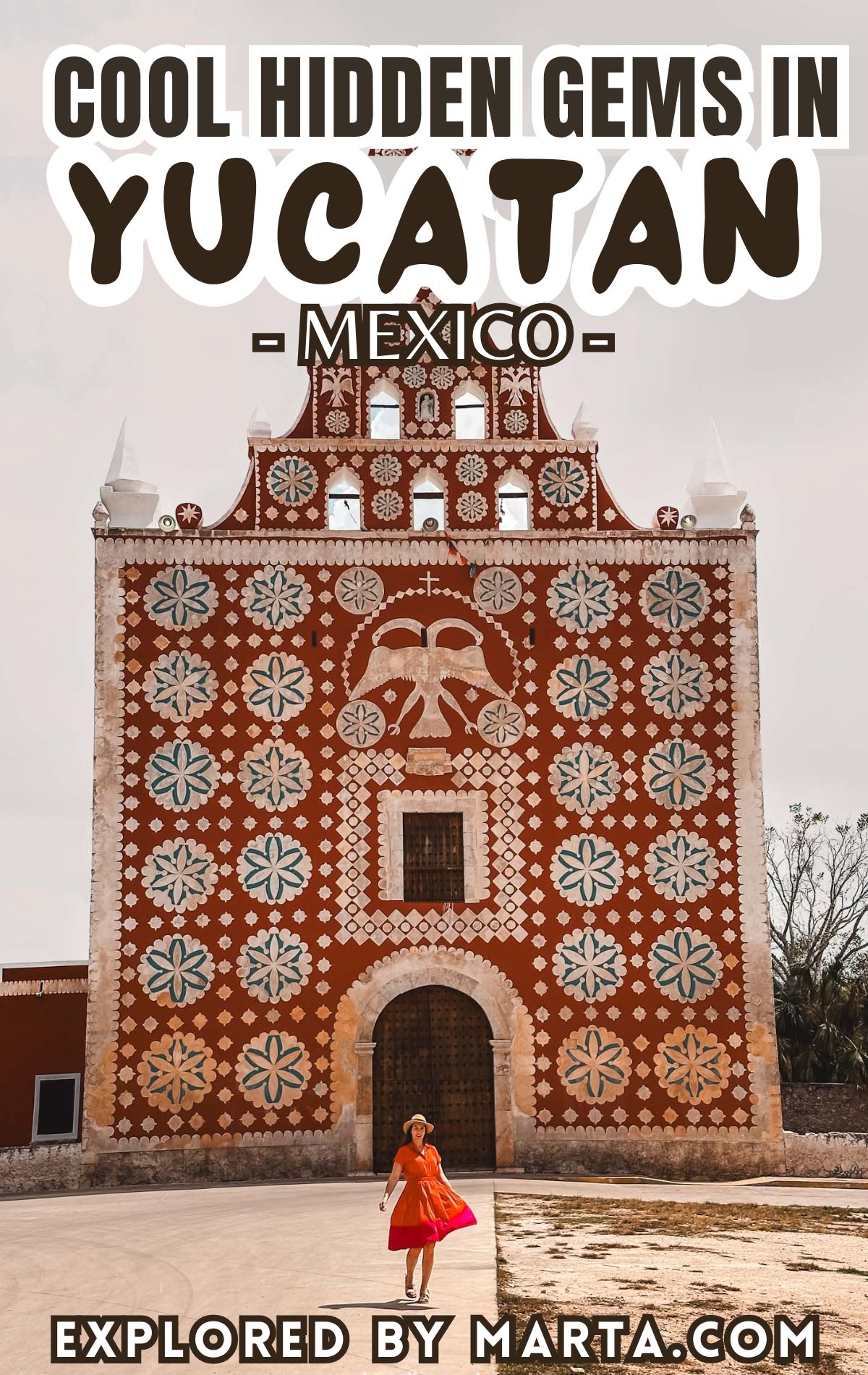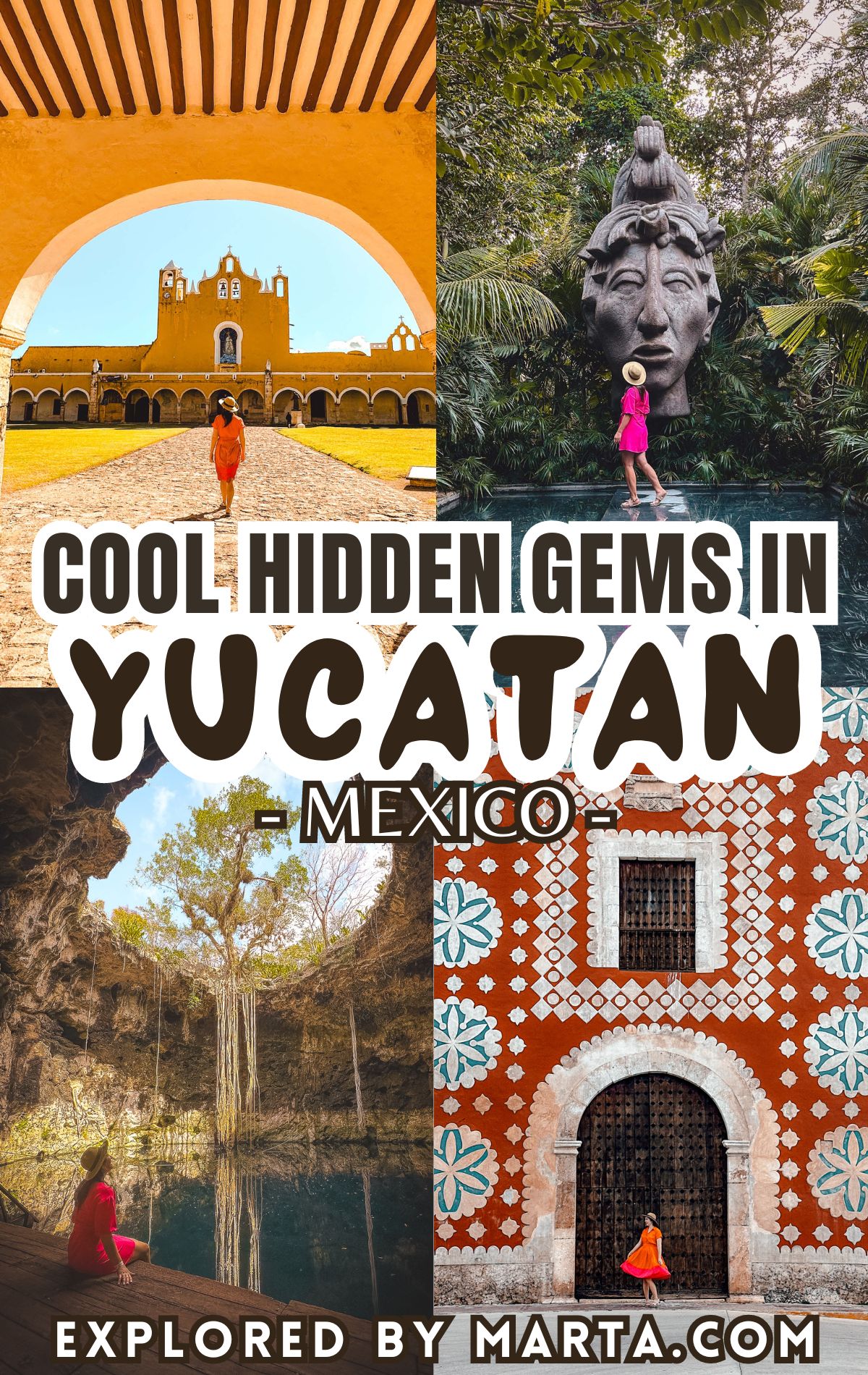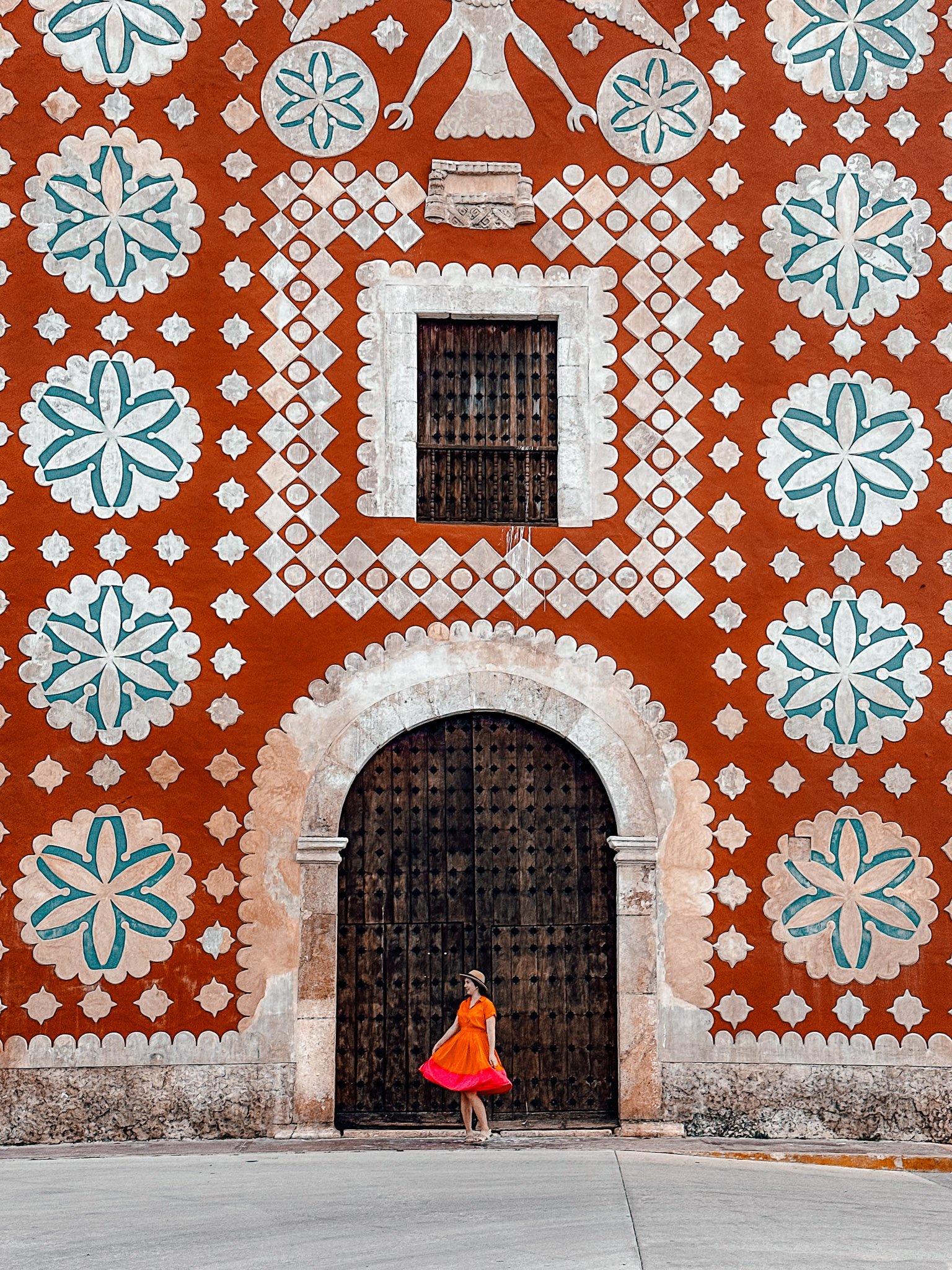21 cool hidden gems in the Yucatan Peninsula, Mexico
This post may contain affiliate links. If you use these links to buy something I may earn a small commission at no extra cost to you! Thank you for your support!
Let me show you some of the coolest hidden gems in the Yucatan Peninsula, Mexico – places that usually don’t see crowds and remain outside of most travel itineraries for this part of Mexico!
After spending three months traveling around the Yucatan Peninsula, we have seen some cool places here and there – from the unique underground cenotes to hidden ancient Mayan ruins and other remote corners of this Mayan land.
In this blog post, you will find the best hidden gems in the Yucatan Peninsula with descriptions, photos, and locations on the map. I hope you can visit at least some of these places during your upcoming trip! Happy travels!
1. Izamal – Mexico’s Yellow City
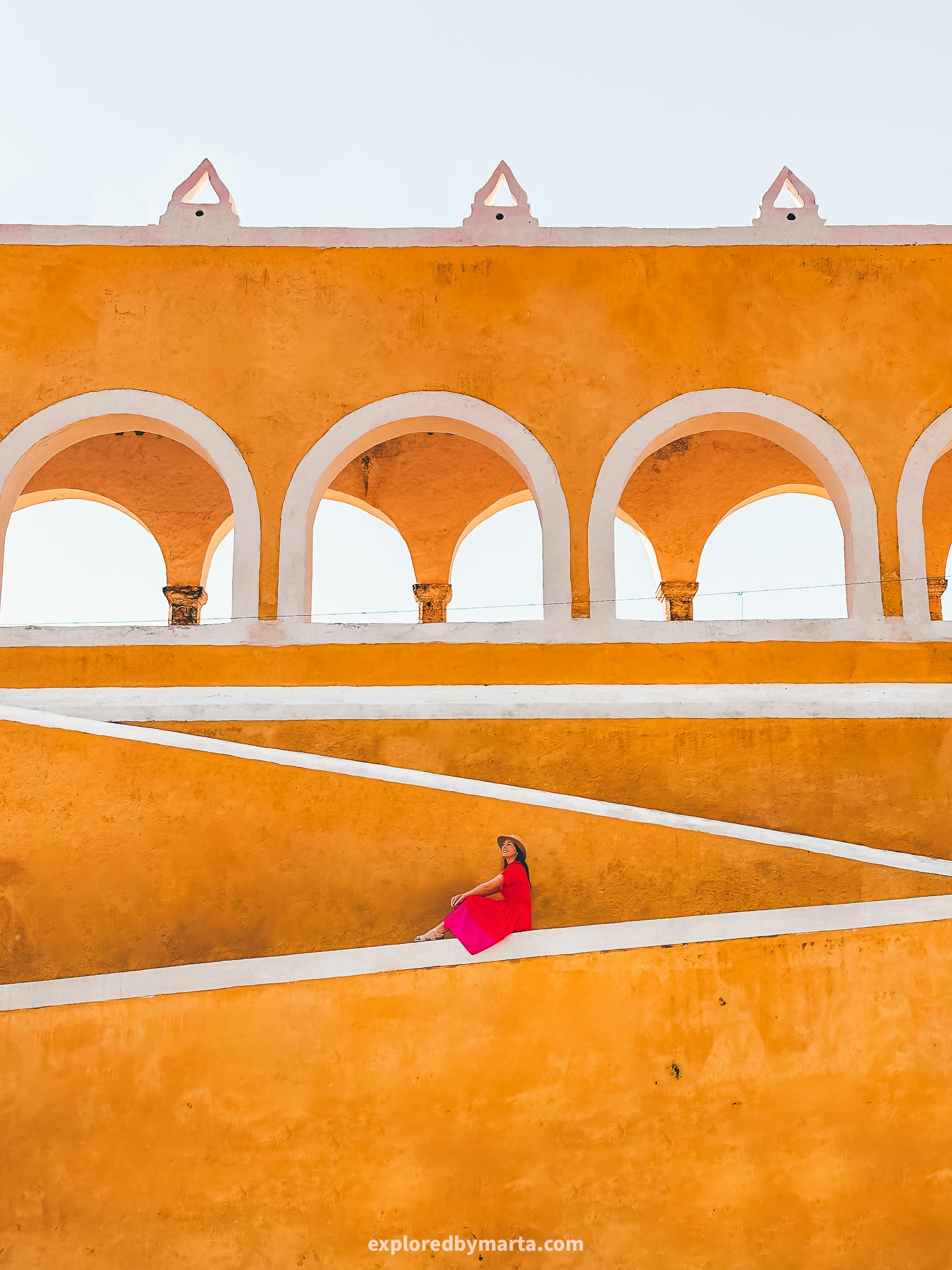
There is no other place like the Yellow City – Izamal – one of Mexico’s Pueblos Mágicos. Exploring Izamal was one of my favorite memories from our Yucatan road trip and this town is also amongst the coolest hidden gems in the Yucatan peninsula.
The small town attracts visitors with its yellow color as all the buildings in the center of this magical town are painted yellow. We arrived at Izamal in the morning and spent there half a day exploring everything Izamal had to offer. There were no crowds!
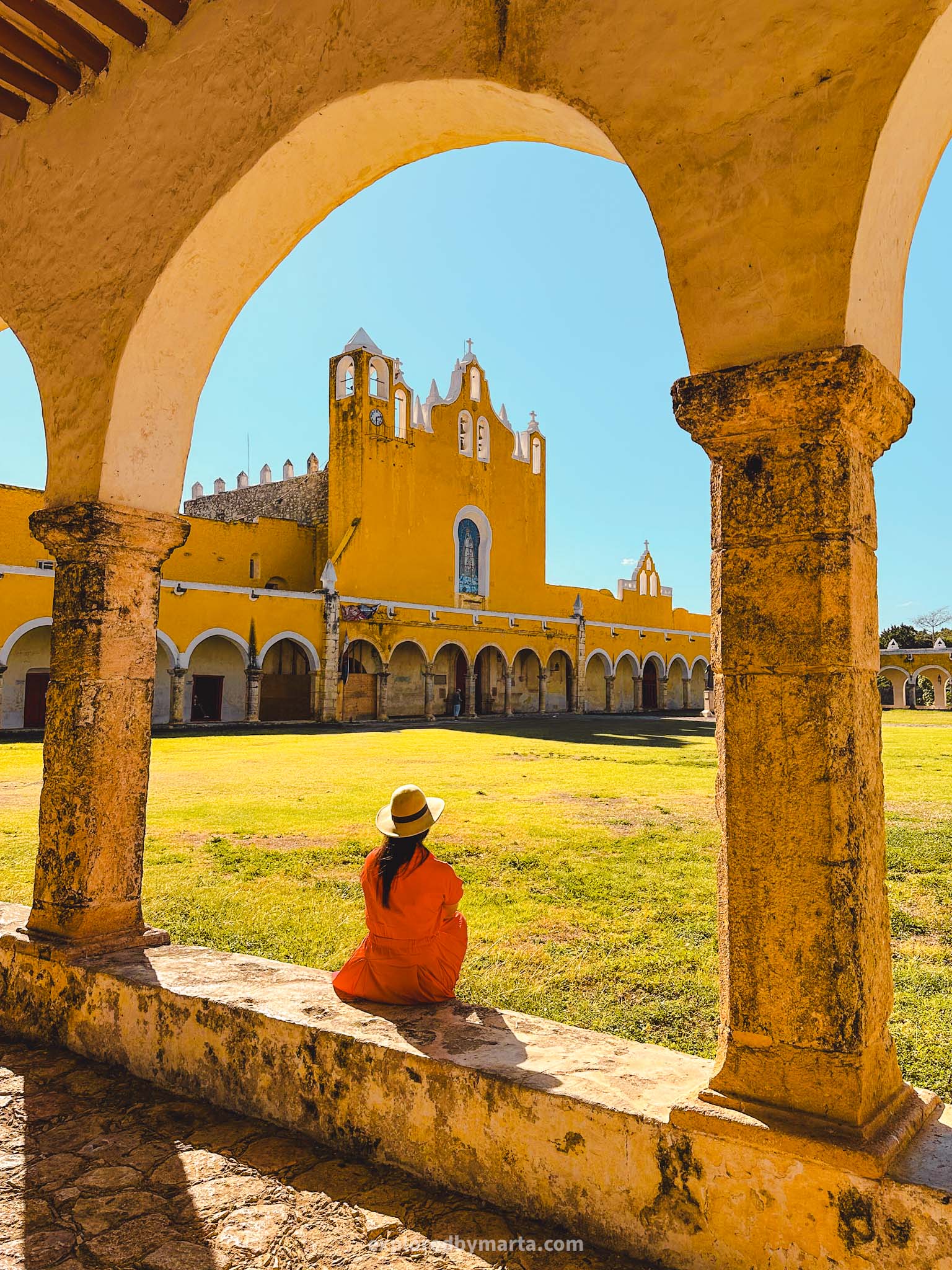

The most famous attraction in Izamal is the Convento de San Antonio sitting atop a hill (there once was an ancient Maya pyramid) in the heart of the town. Next to it, you will find the second-largest atrium in the world surrounded by a beautiful yellow arcade.
You can explore the unique convent and walk around the atrium for free. It does have working hours so check those before coming! The best time to arrive is early morning before the town heats up to scorching degrees.
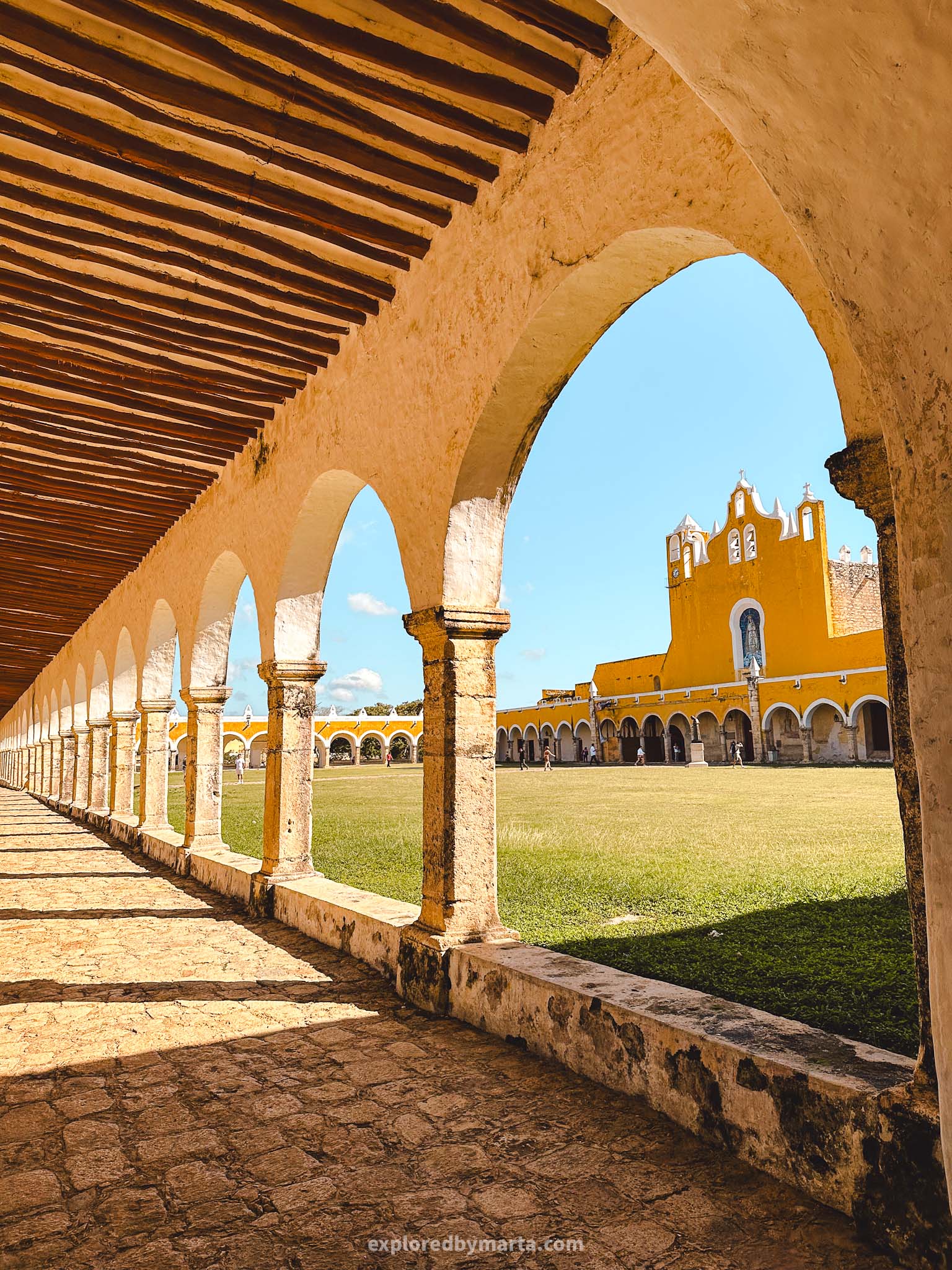
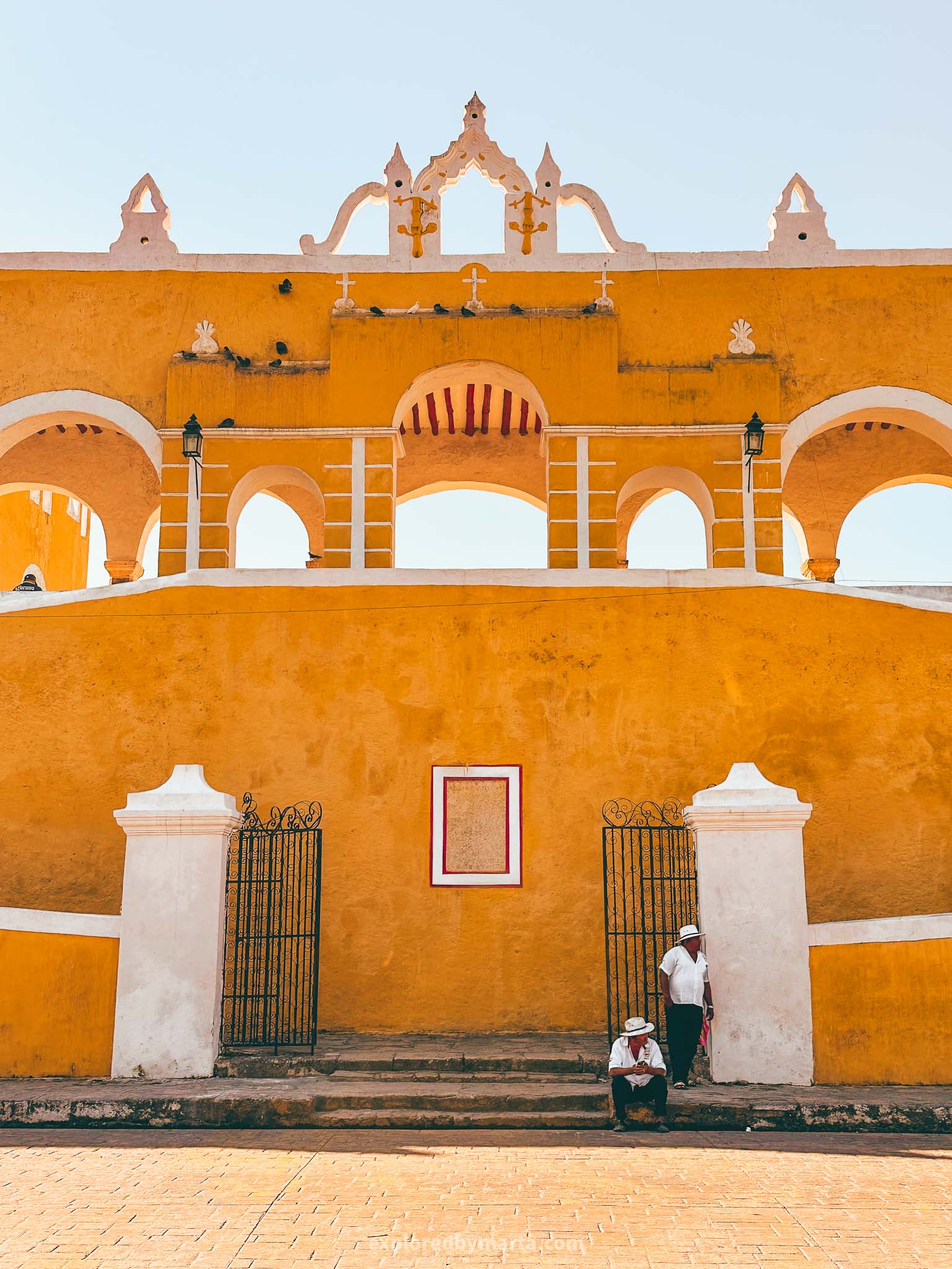
Other must-do things in Izamal include climbing the Mayan pyramids – Kinich Kak Moo and Itzamatul. If you only have time for one, I highly recommend visiting the Kinich Kak Moo pyramid as you can see the whole town of Izamal from the top!
There are only a few Mayan pyramids where you are allowed to climb up and not many travelers know Izamal has two of them!
Don’t forget to explore the local market, Mercado Municipal de Izamal, try the yellow corn ice cream, walk around the 5 de Mayo Park, and, for lunch, I suggest trying Mayan dishes at Restaurant Kinich. This unique place is definitely worth a visit!
Location: Convento de San Antonio in Izamal
2. Convent and Church of Uayma
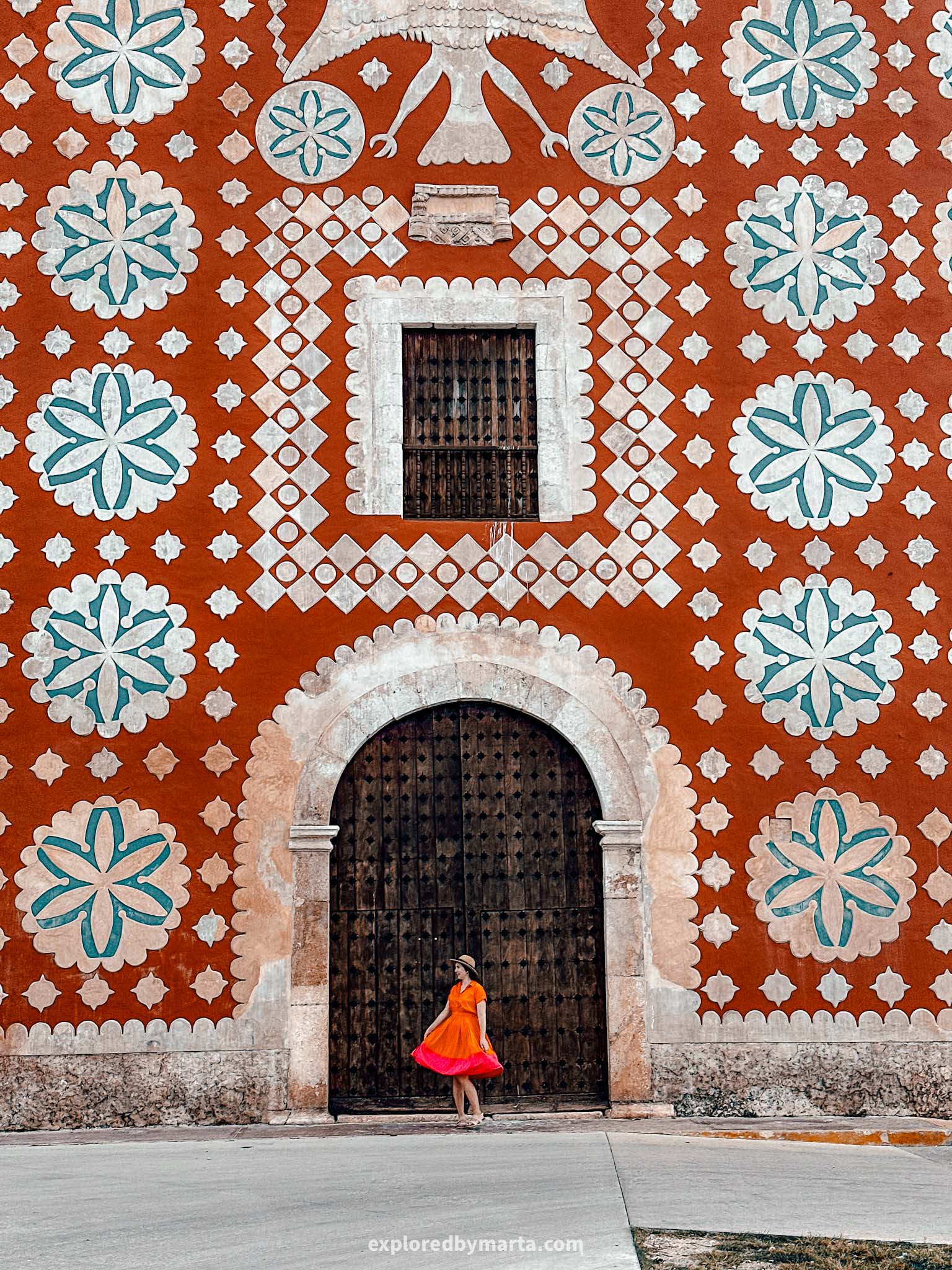
Convento de Santo Domingo in the town of Uayma or, simply, the Church of Uayma is easily the most beautiful church and one of the coolest hidden gems in the Yucatan Peninsula you will ever find!
The former convent and church is located a short distance from Valladolid and would make a perfect spot to stop by on your way to other popular destinations in the Yucatan peninsula like Valladolid, Ek Balam, Cenote Ik Kil, or Chichén Itzá!
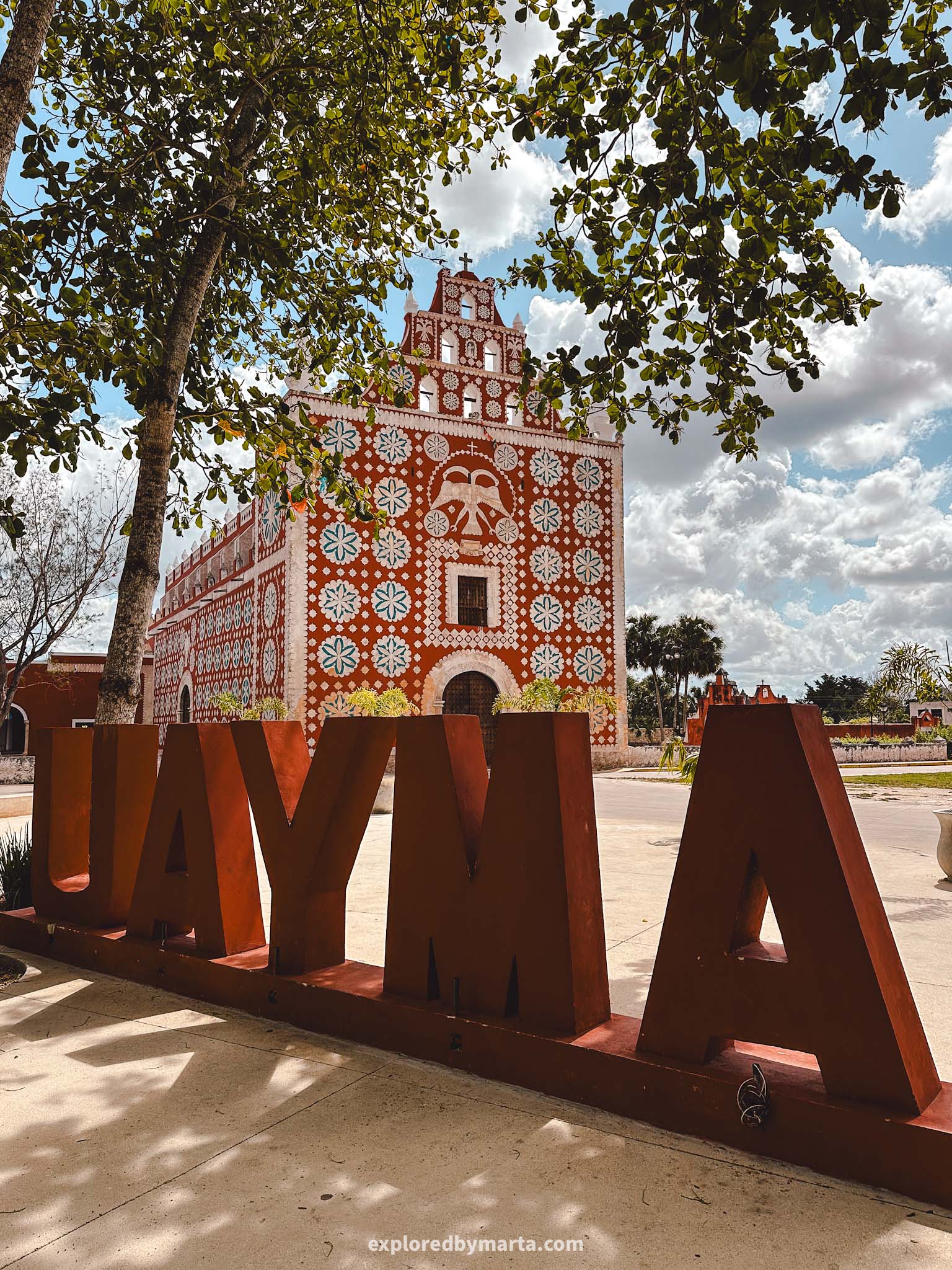
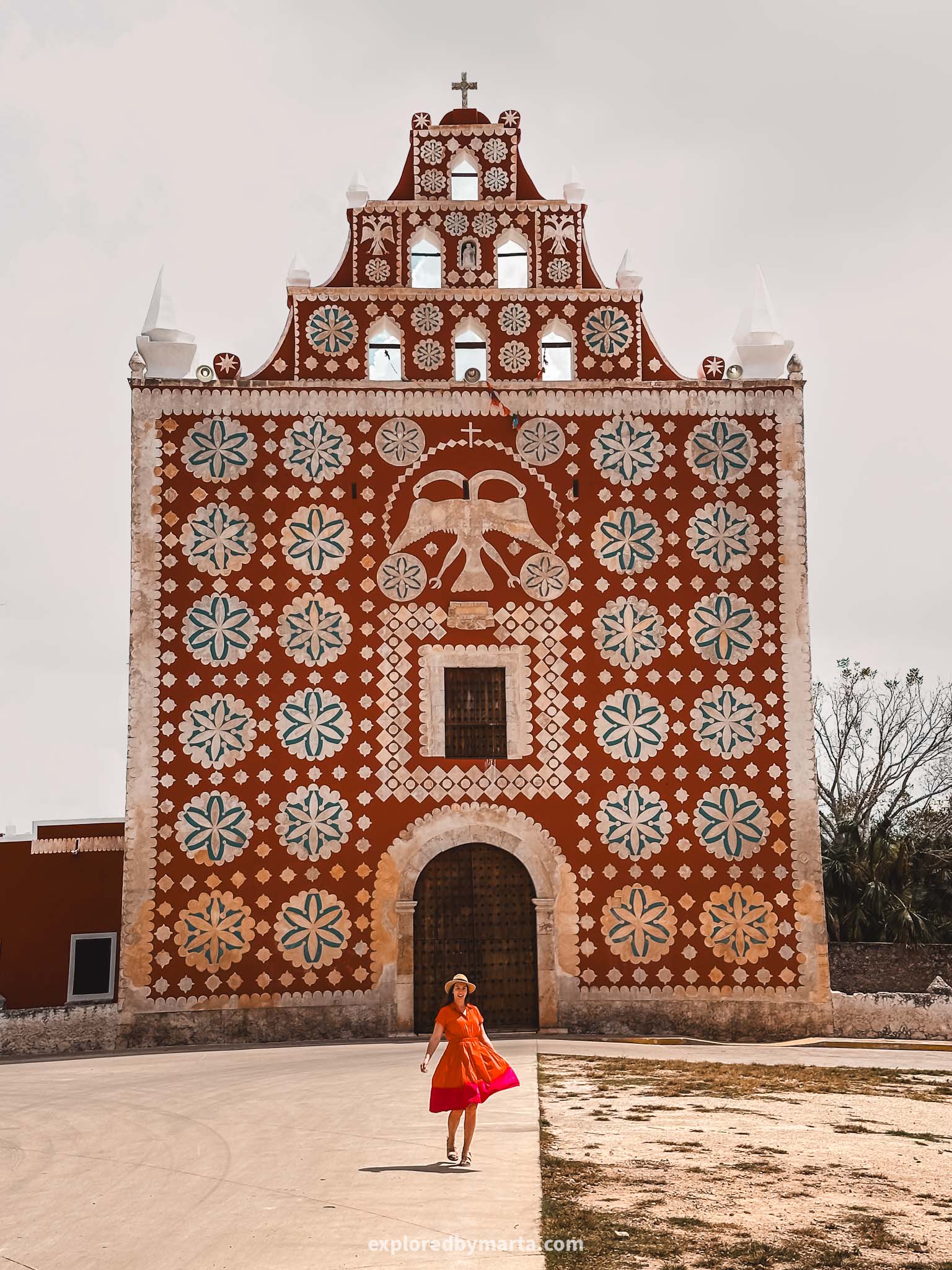
The beautiful photo-perfect Convento de Santo Domingo is a former convent built by the Franciscans in the middle of the 17th century. It was built by using stones from Mayan sites, including from the nearby Chichén Itzá!
During the second half of the 19th century, the church was burned down during a Mayan rebellion. Only more than 100 years later the roofless church was finally restored and was officially reopened to the public in 2004.
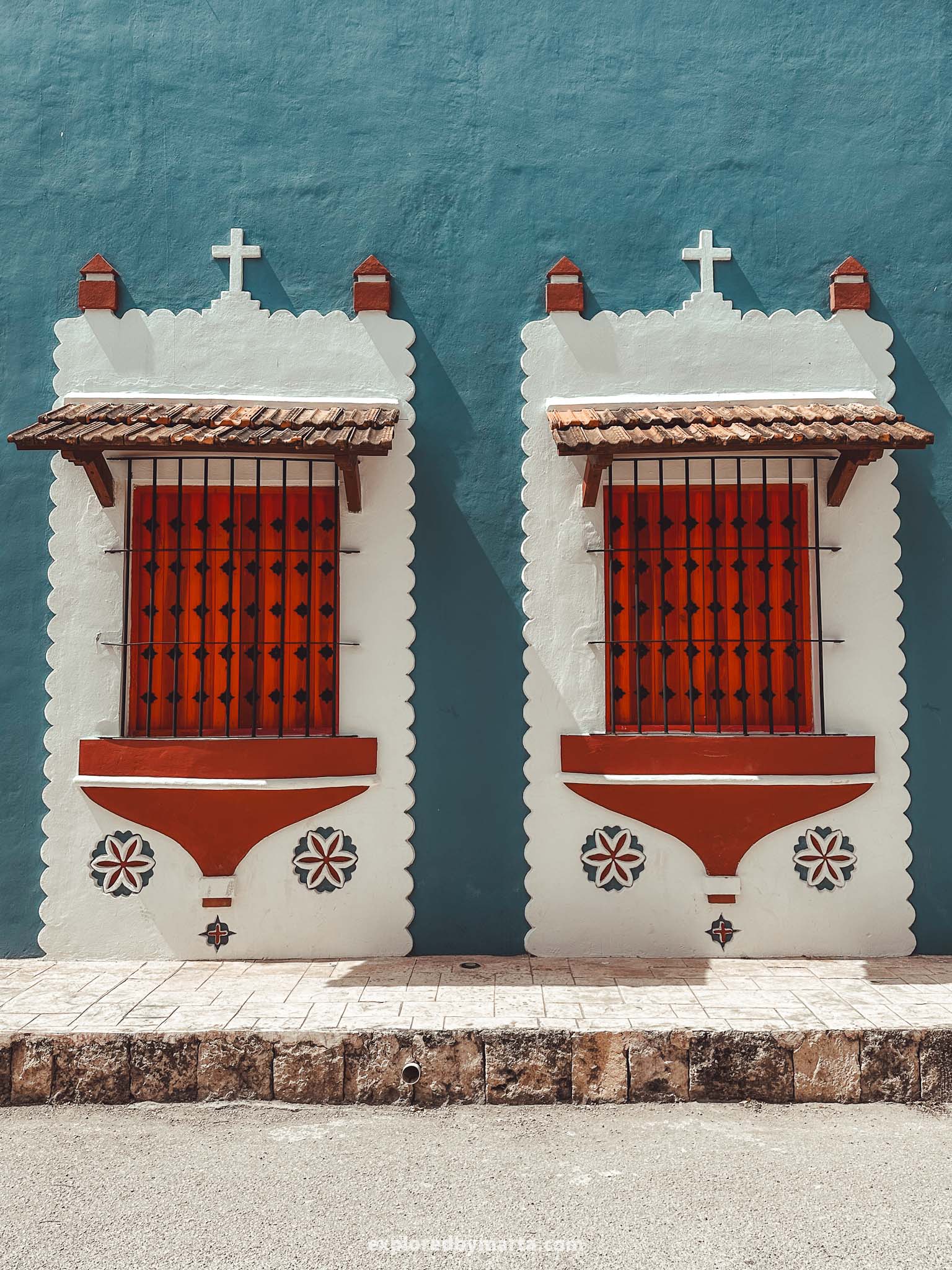
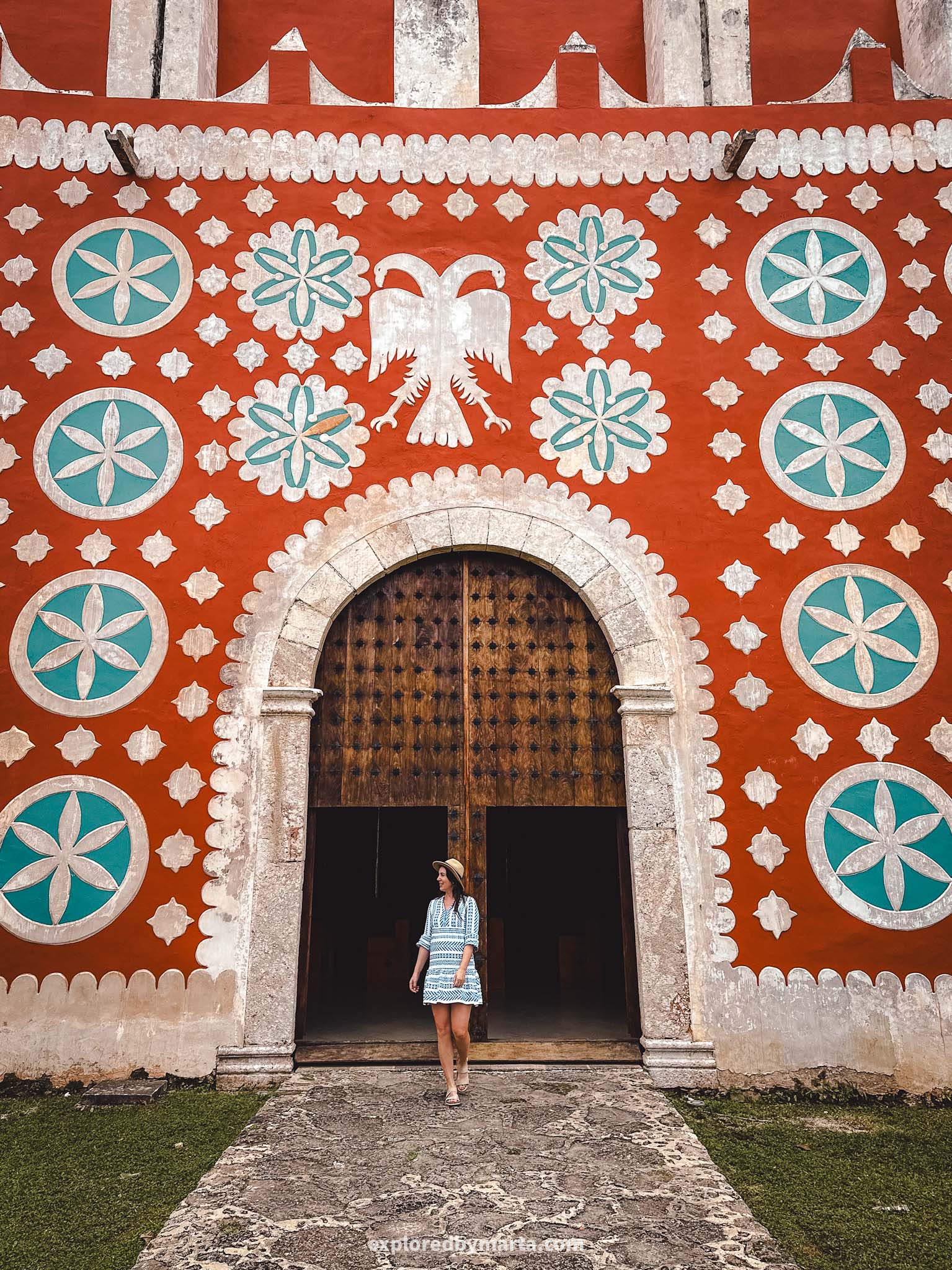
The captivating building stands out with its unusual design – the white roses and stars symbolize the veneration of the Virgin Mary but the red color represents sacrifice and martyrdom. There is also a green color that symbolizes hope.
We visited this church on Saturday around 11 AM. It was open so we could enter to see the inside of the church for donations. Overall there isn’t much to see in Uayma so don’t plan to spend the whole day here.
Location: Iglesia de Uayma
3. Cenote Choj Ha
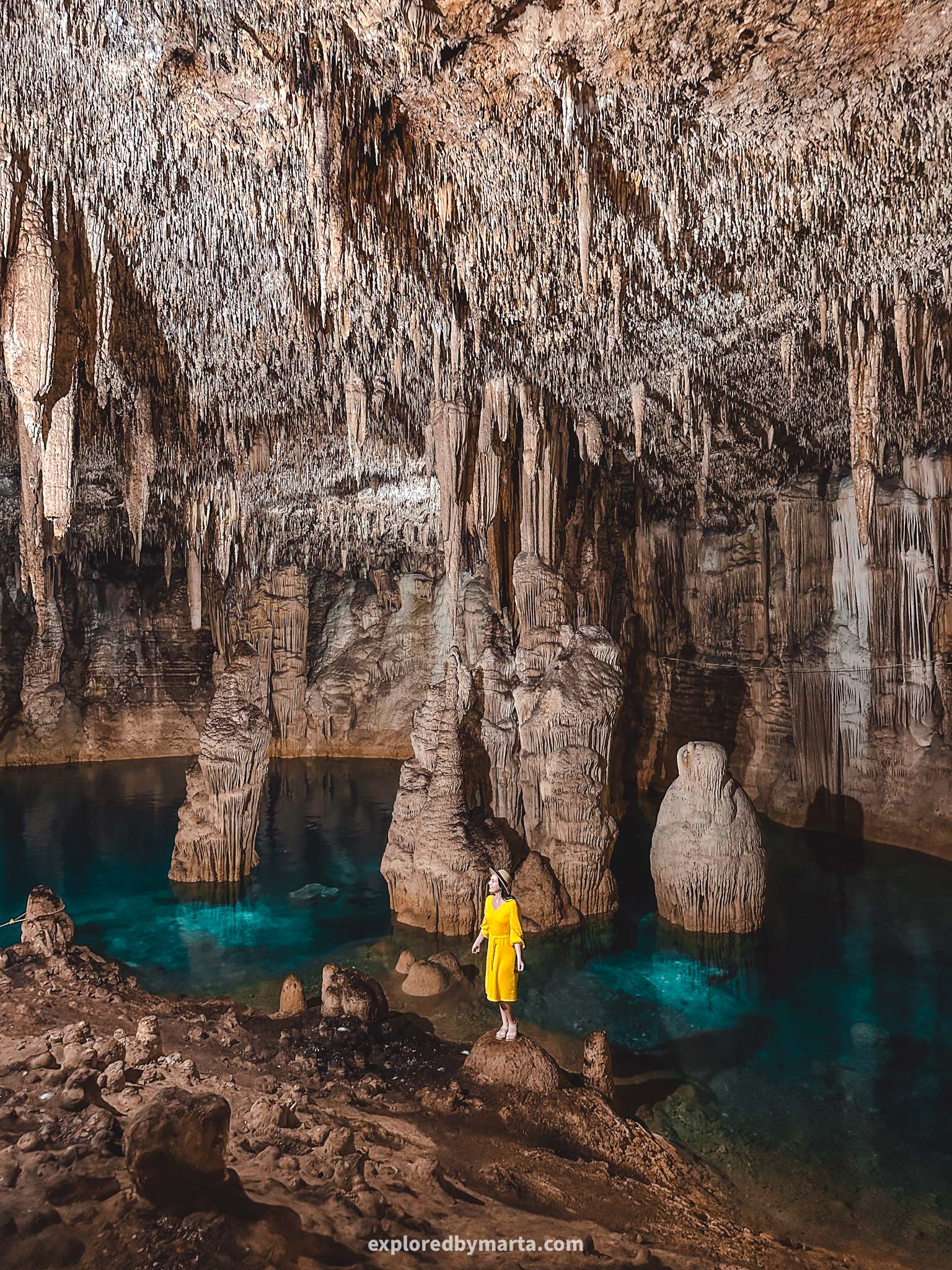
Simply – wow! Cenote Choj Ha truly took my breath away! It is one of the most beautiful cenotes I have visited and definitely one of my favorite hidden gems in the Yucatan peninsula. And we didn’t even swim there (we didn’t have time!).
Cenote Choj Ha is located in a remote place in the jungle not far from Valladolid. You can walk inside there through a small hole in the ground. As you enter, you are met with a magical discovery – an underground cave the size of a cathedral!
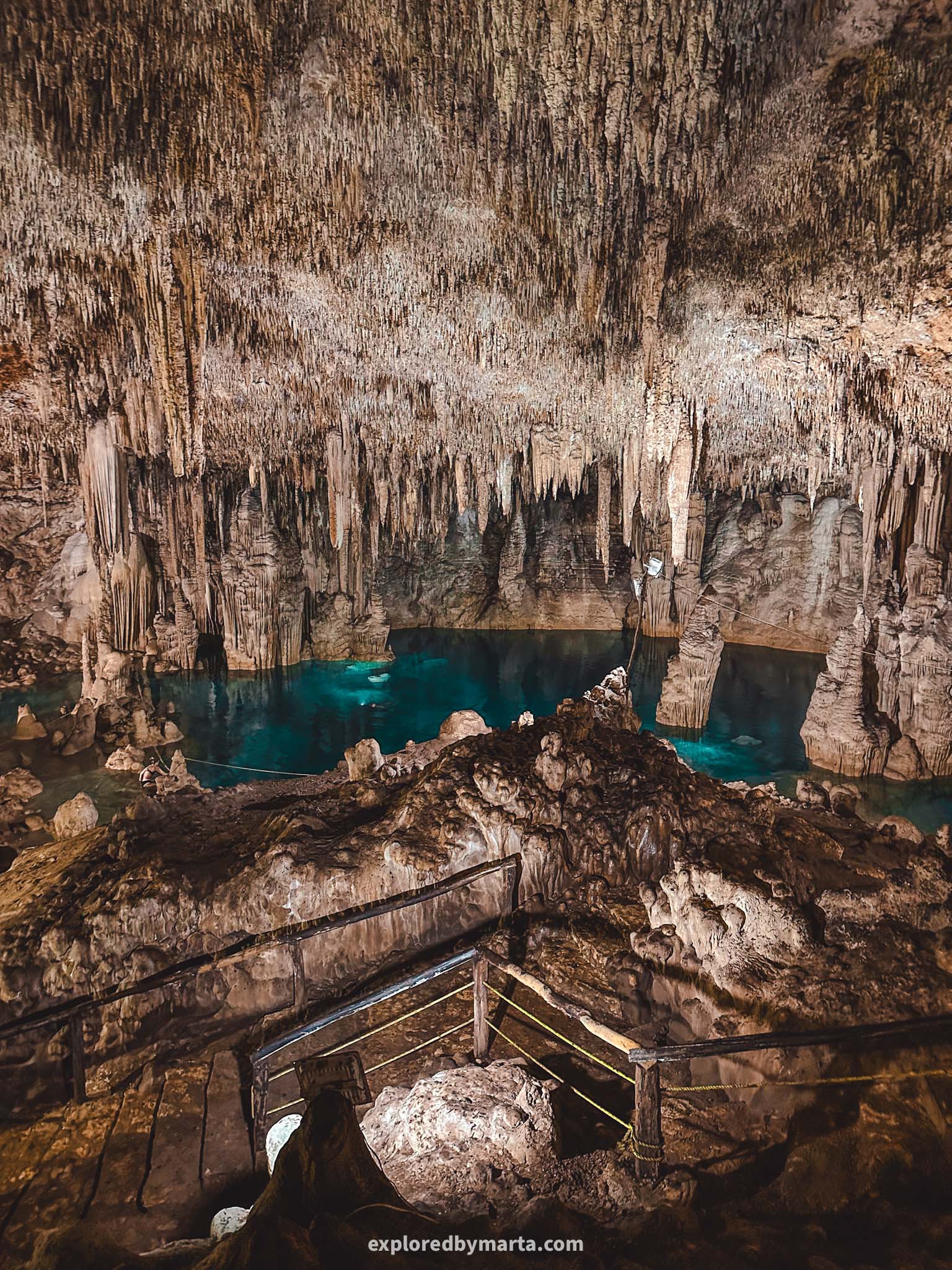
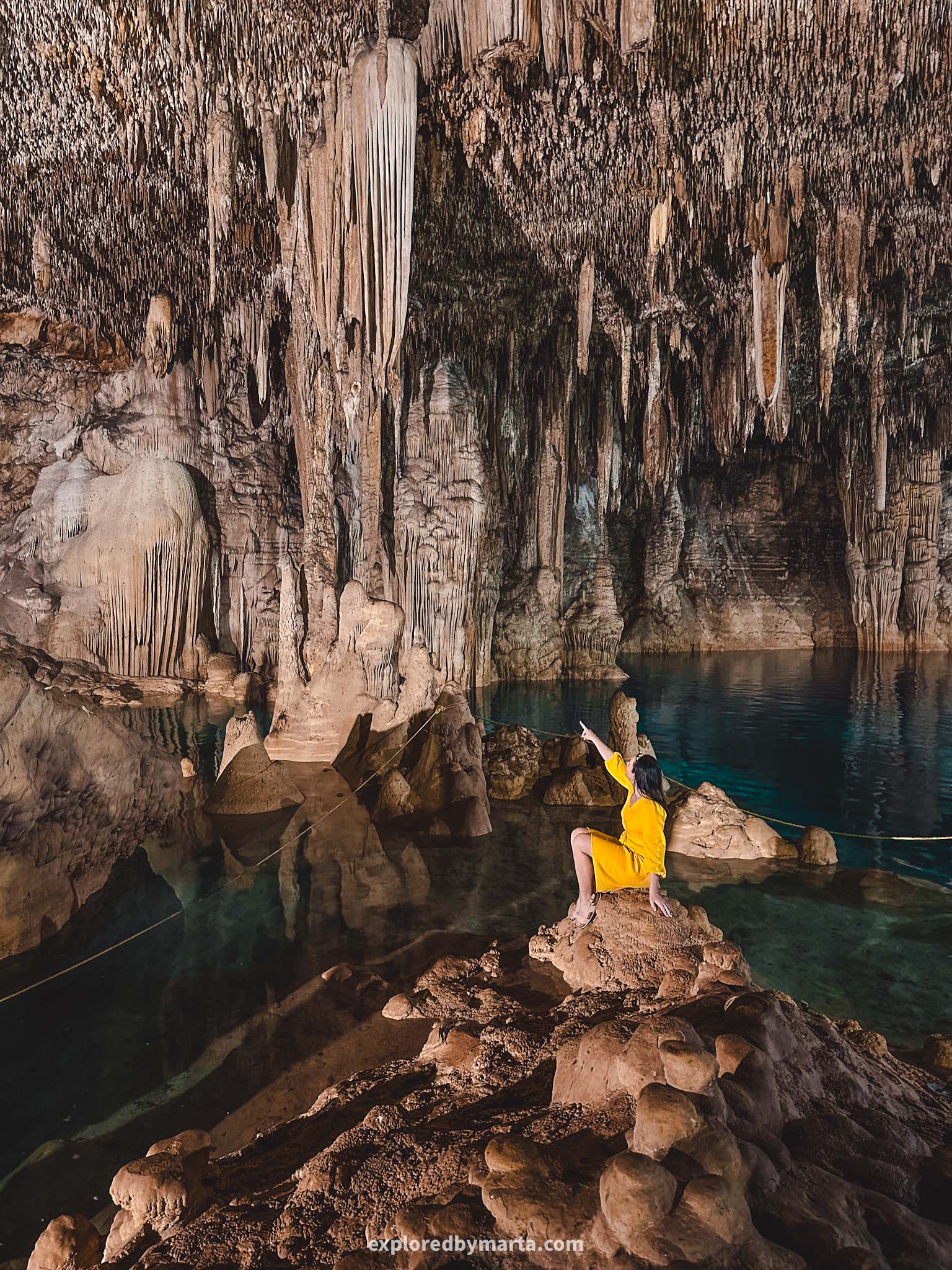
The gigantic cave is filled with long sharp icicles – stalactites – and bulky short poles – stalagmites – all floating in and above the crystal-clear water. Magical! It was truly hard to believe our eyes when we entered the cave.
Cenote Choj Ha is quite unknown and I recommend visiting this place even if you don’t have time to swim. We paid 150 pesos each for the entrance and there were only a few people around. The cave is so big we didn’t even notice them!
Because we travel so much I am quite often hard to impress but then there are times I lack words to describe how incredible something is. This cenote is the latter of those two situations.
Location: Cenote Choj Ha
4. Cementerio Hoctún
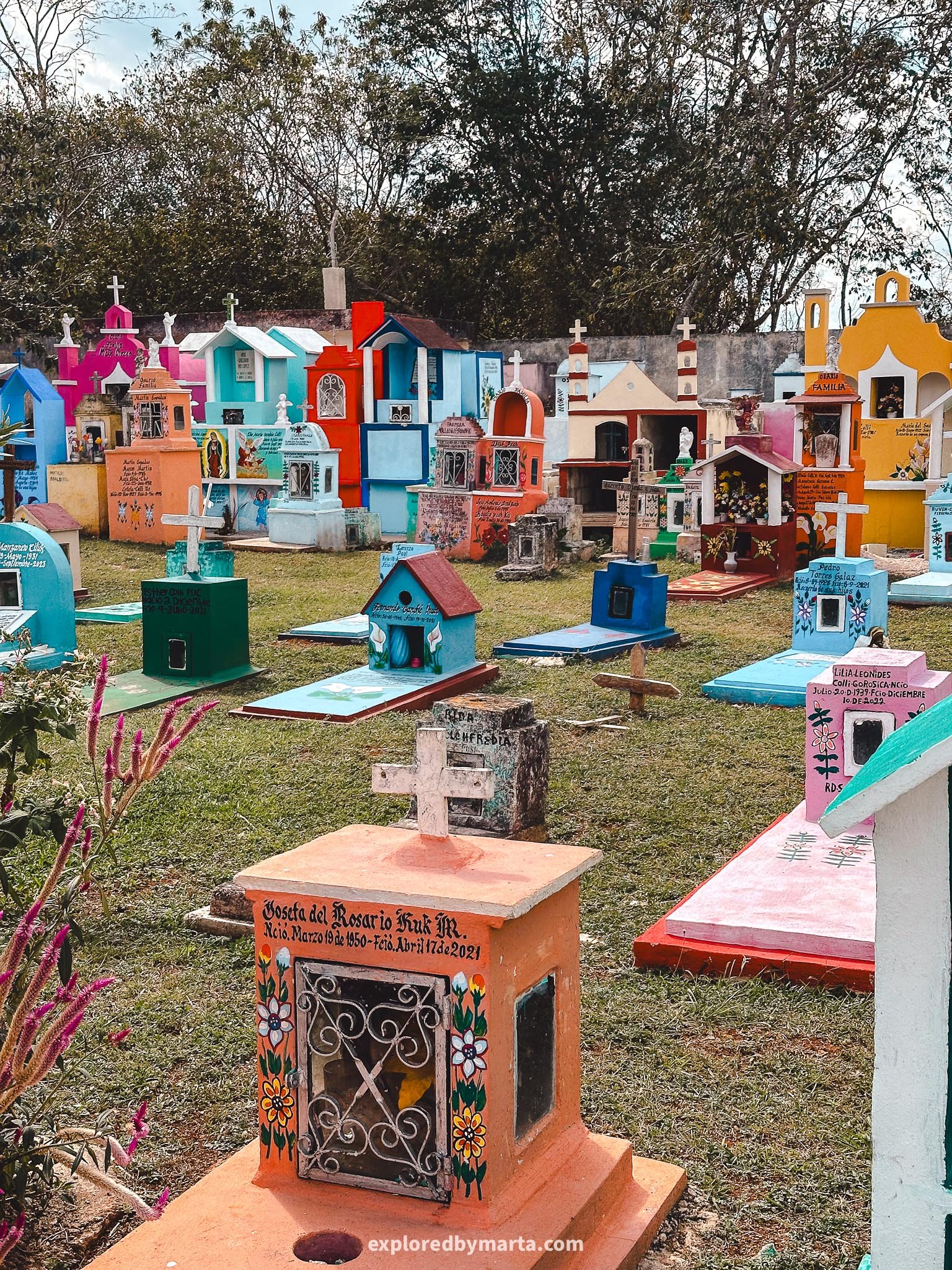
Now, here’s something unique – Hoctún Cemetery. It is often regarded as the most beautiful cemetery in the Yucatan peninsula so we had to check it out.
Hoctún Cemetery is located in a small village near Merida and is free to access. I knew people here loved colorful things but this cemetery took this thought to another level. Have you seen anything like this?
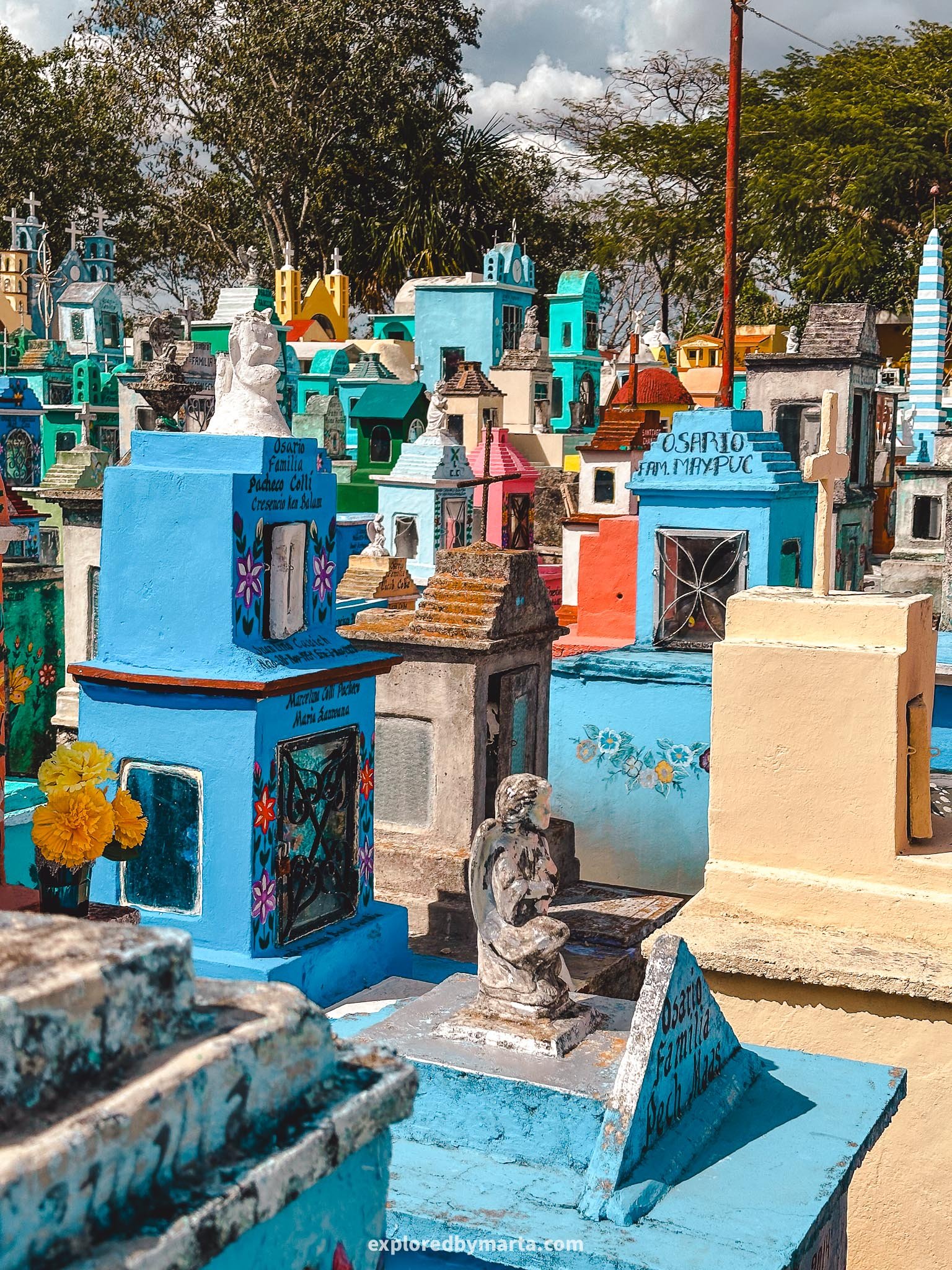
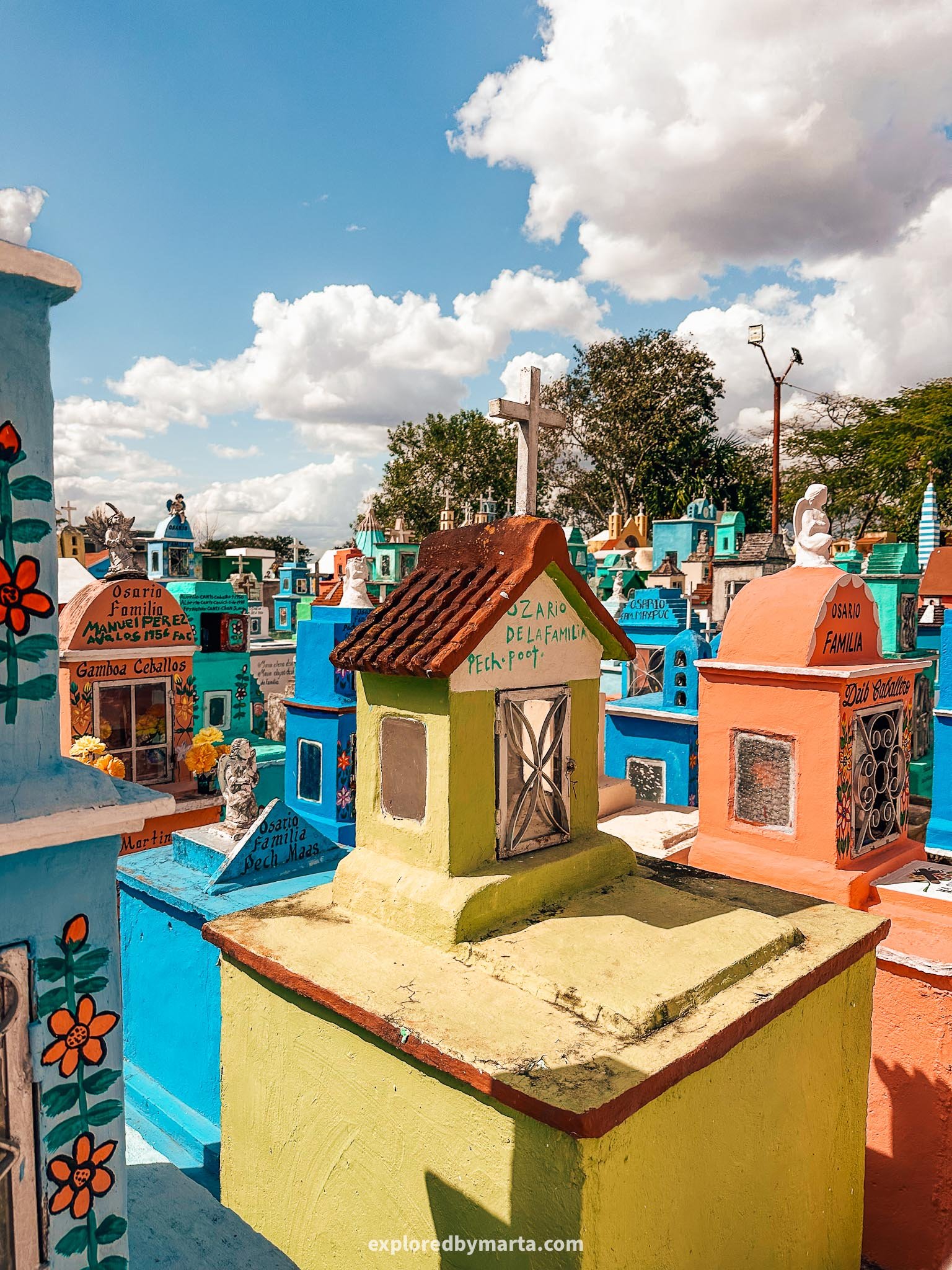
As you enter the cemetery, you are met with a splash of colors – there is a big field of tombs in different sizes, different colors, and different shapes. Each tomb is more unique and creative than the other. It seemed like each family had its own style.
If you happen to travel somewhere between Merida and Valladolid, it is worth making a pit stop to visit one of the most unique hidden gems in the Yucatan Peninsula! We spent about 20 minutes walking around and checking out everything.
Location: Cementerio Hoctún
5. Cenote Xcanahaltun
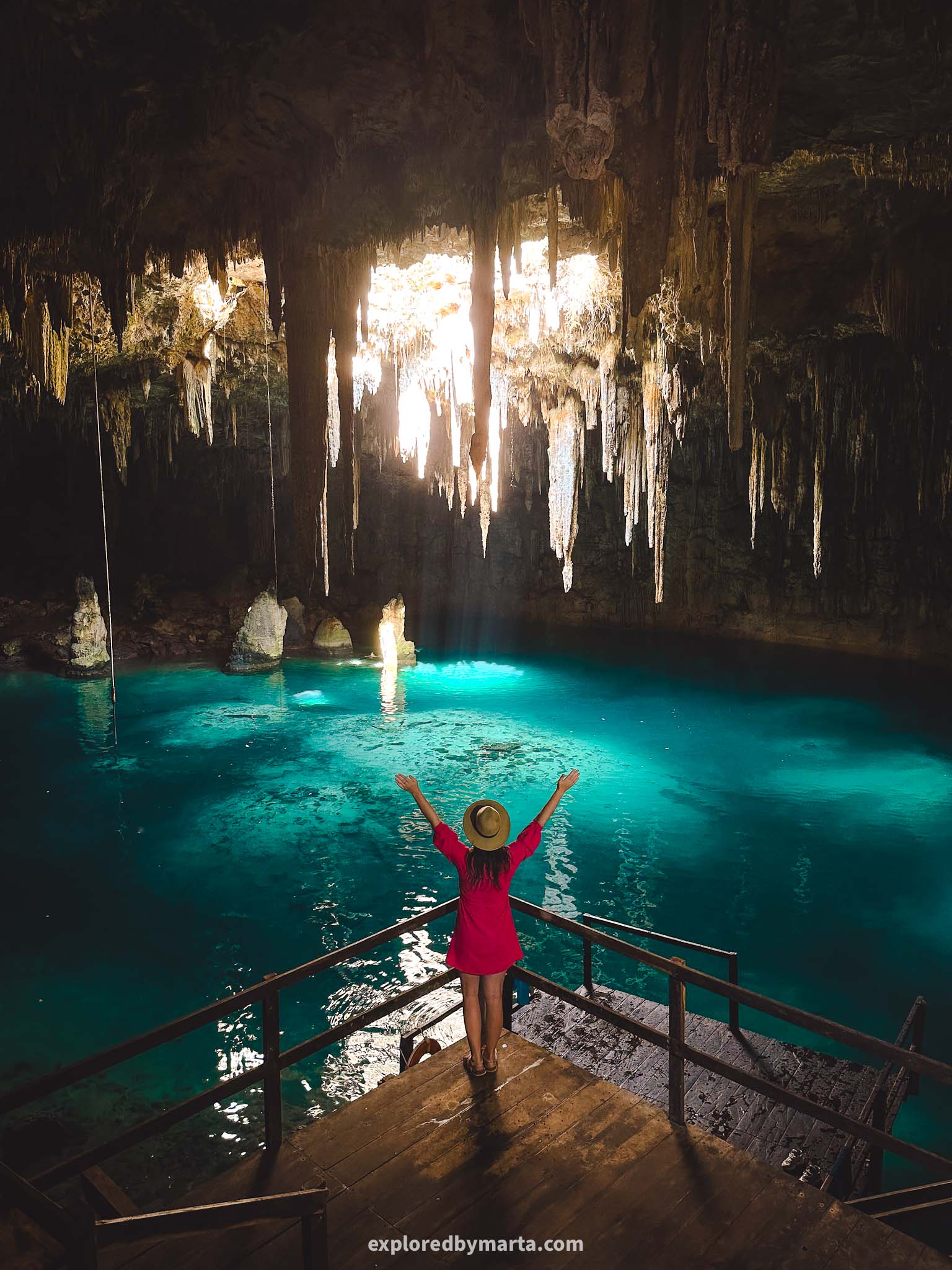
During our three-month stay in the Yucatan Peninsula, we managed to visit more than 30 cenotes in the Yucatan Peninsula and there were only a few that stood out to me the most. One of them was Cenote Xcanahaltun.
I didn’t expect much from Cenote Xcanahaltun as I had already visited many stunning cenotes but as soon as I entered the majestic cave I fell in love and this underground gem immediately became one of my favorite places in Yucatán!
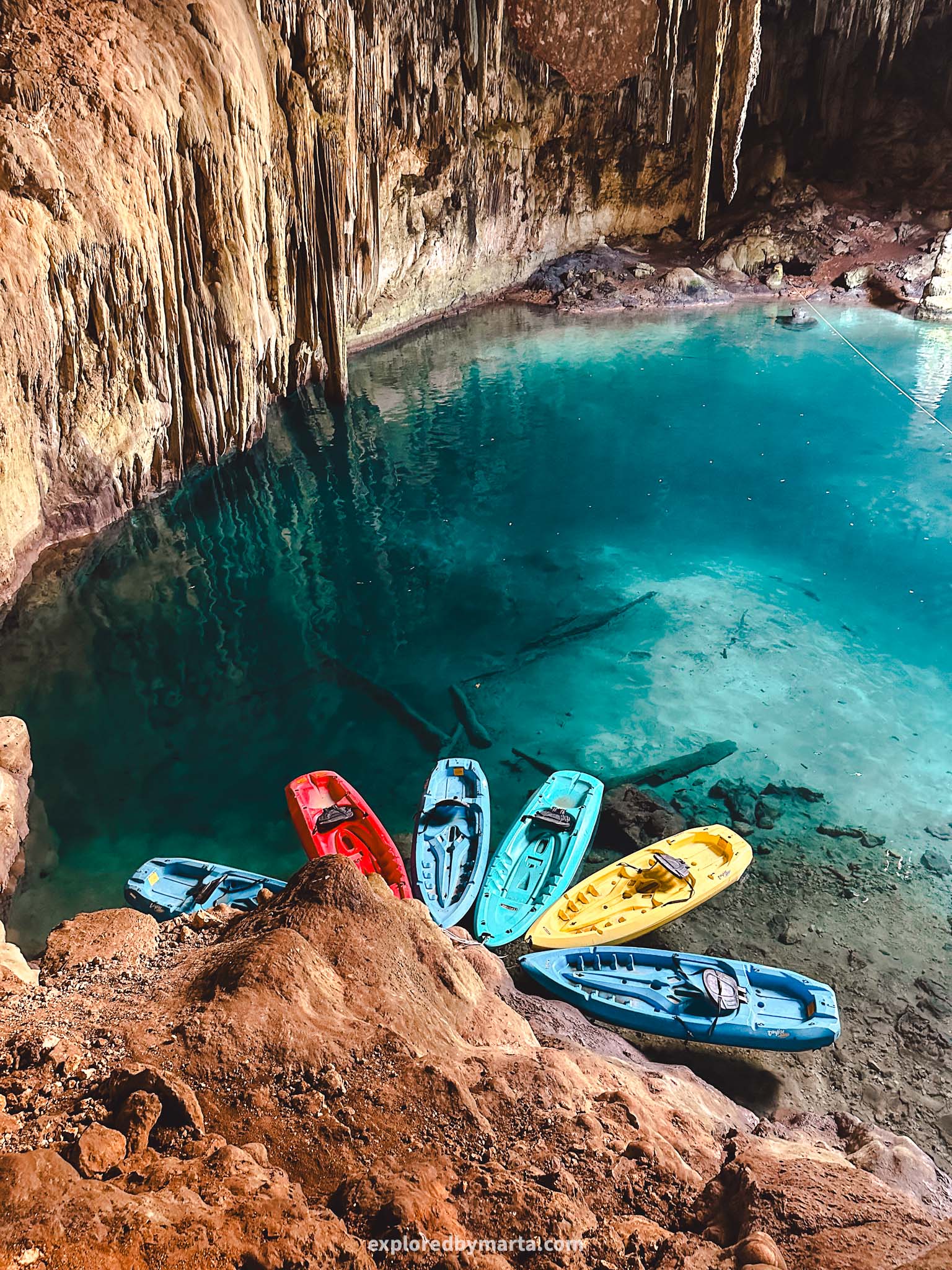
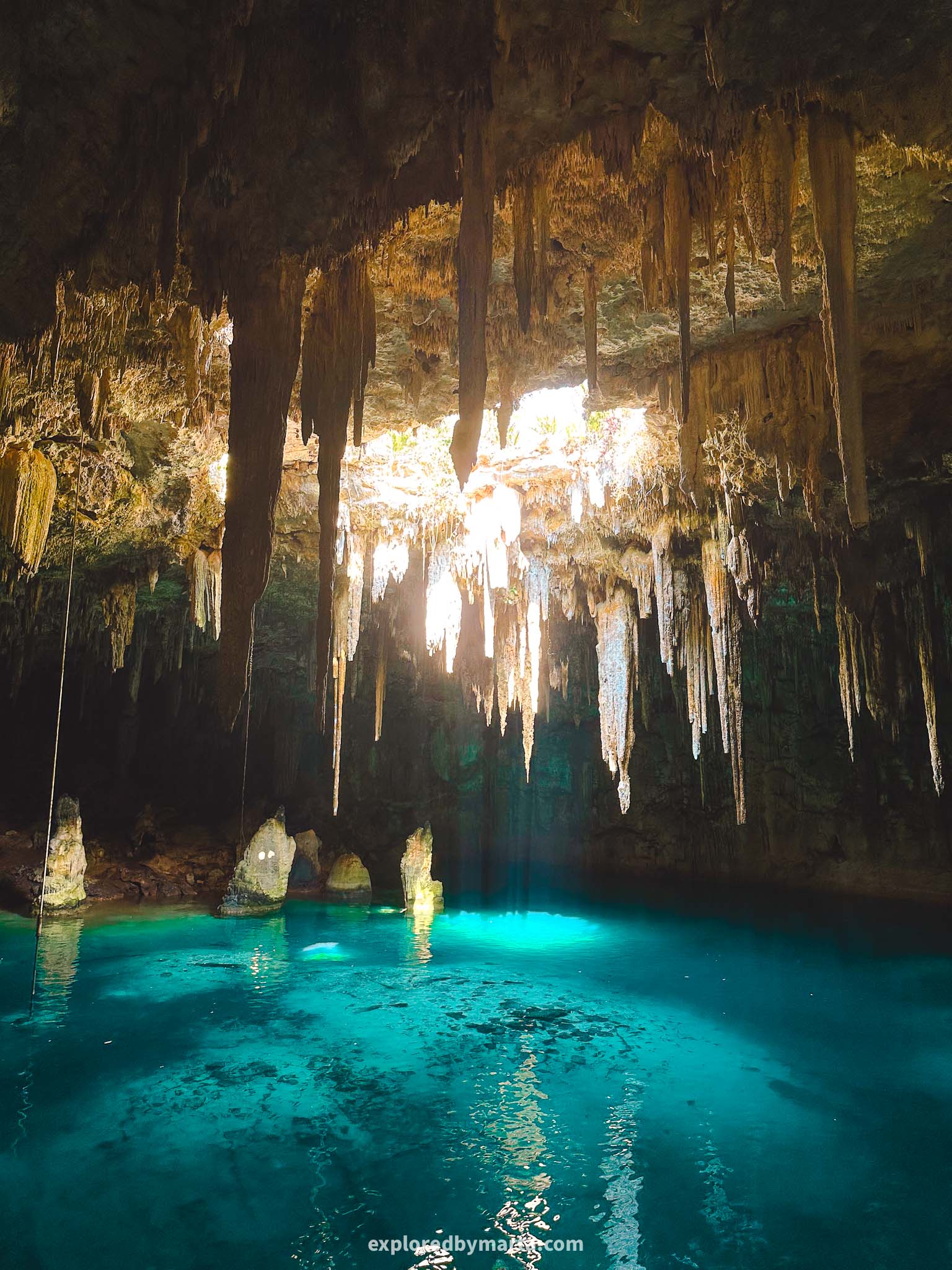
The glorious cathedral-sized cenote is actually like a large underground lake with a small hole in the ceiling that lets natural light inside the cavern. The ceiling is adorned with icicle-type stalactites and looks absolutely spectacular.
You can enter the crystal-clear waters from a wooden platform located on one side of the ‘lake’. The entrance to the cenote was 230 pesos and for an extra 100 pesos we were offered to rent a kayak. Such a great place to discover!
Location: Cenote Xcanahaltun
6. The iconic leaning lighthouse of Puerto Morelos
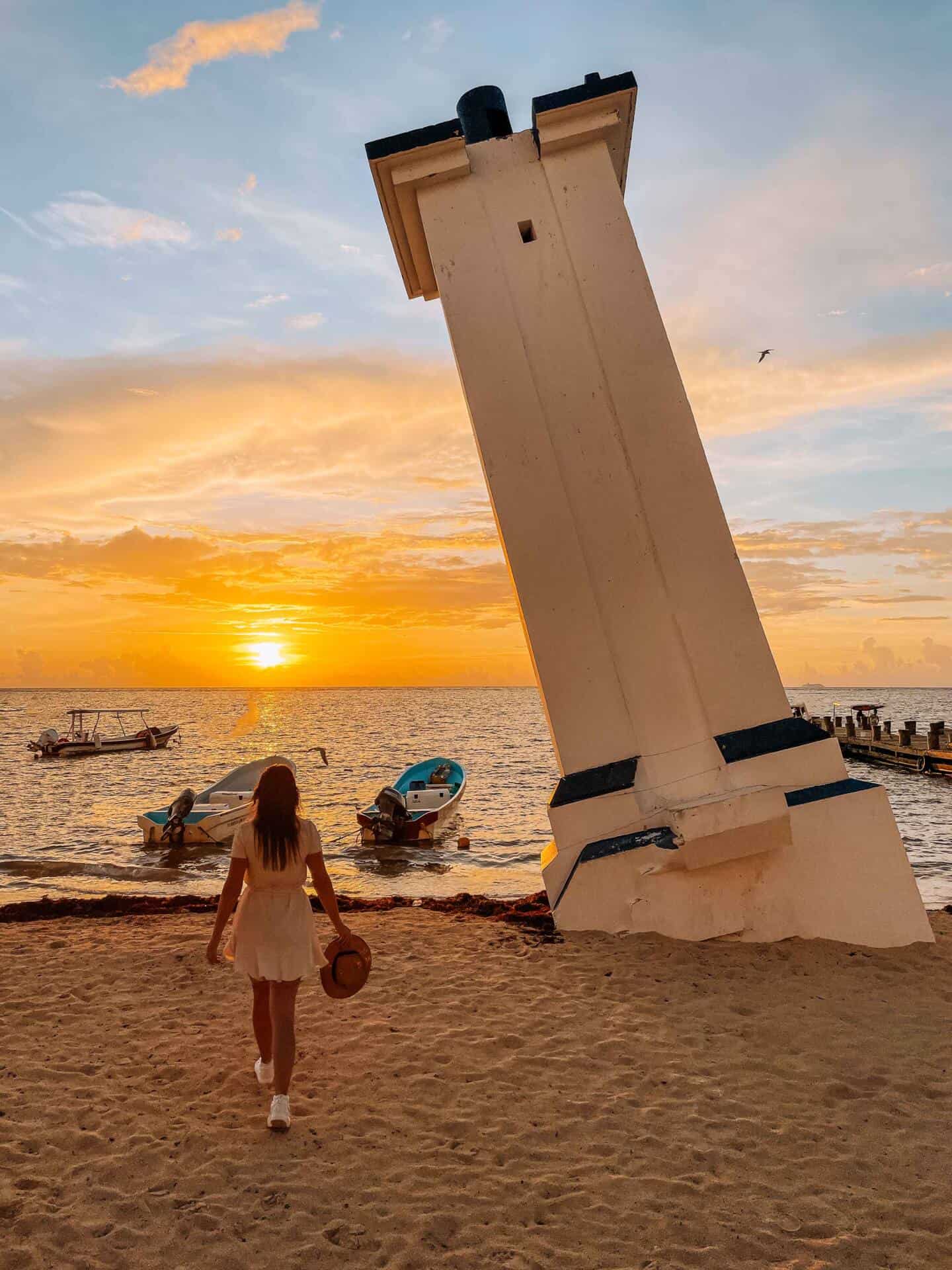
Puerto Morelos is a popular destination for those looking to escape the hustle and bustle of Cancun, Tulum, or other popular tourist destinations around the peninsula as this charming fishing village offers a far more relaxed and authentic experience.
There is one special place in this seaside village – the beautiful and iconic Leaning lighthouse sitting at the shores of the Caribbean Sea. It is a symbol of strength and resilience in Puerto Morelos.
The lighthouse was hit by a hurricane in 1967 that left it tilted as you see in the photo. Although a new lighthouse was built next to it, this one was left standing there as a symbol of the resilience of this charming small fishing town.
Location: Leaning lighthouse of Puerto Morelos
7. Xcambó Archaeological Zone
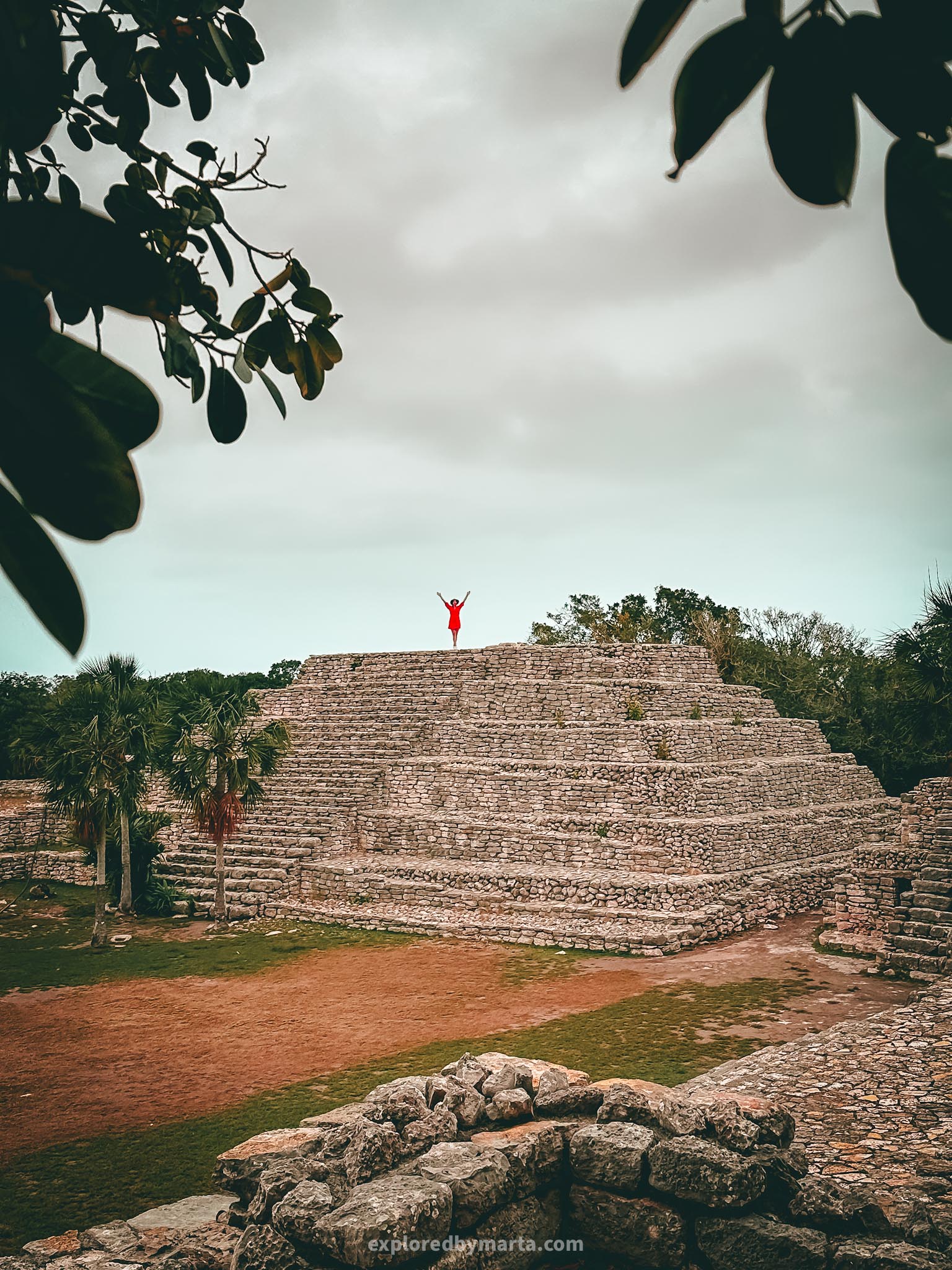
Xcambó Archaeological Zone are less-visited Mayan ruins located just a 1-hour drive from Merida, Mexico. We paid 95 pesos each for entry and, as you can see from the photos, this is still one of the sites where you can climb the pyramids!
Xcambó was built between the years 350-550 and served as a commercial port as well as managed the salt mines. We drove there with our rental car during our three-week stay in Merida. This is definitely one of the lesser-known sites.
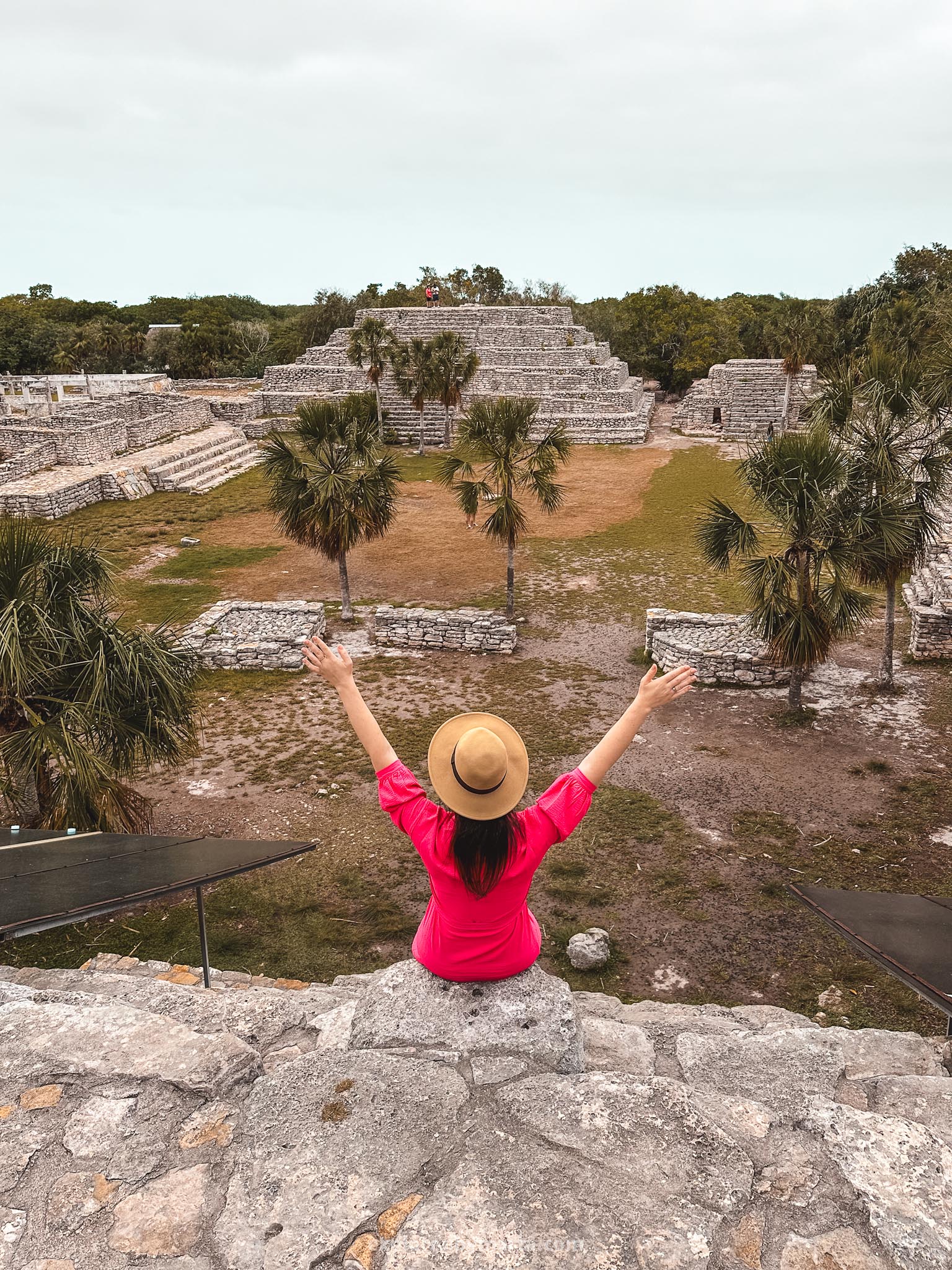
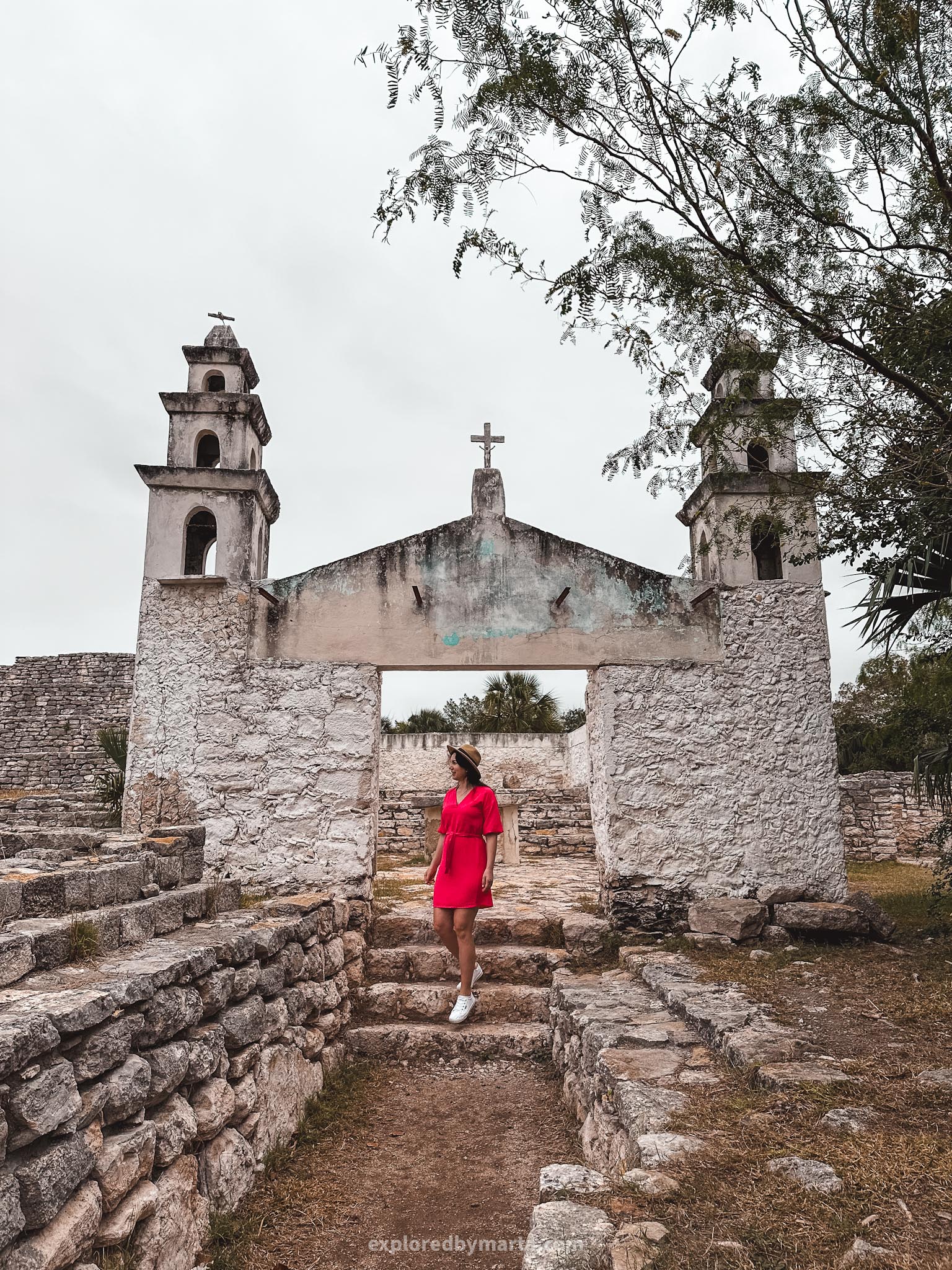
You are allowed to freely roam around the village exploring all the buildings and pyramids. There are several platforms, temples, and also bigger and smaller pyramids where you are allowed to climb up to the top.
This was actually the first archeological site that we visited in Yucatán and holds a special place in my heart probably because this was the place where I climbed a Mayan pyramid for the first time in my life! Yay!
Location: Zona Arqueológica Xcambó
8. Cenotes Santa Barbara
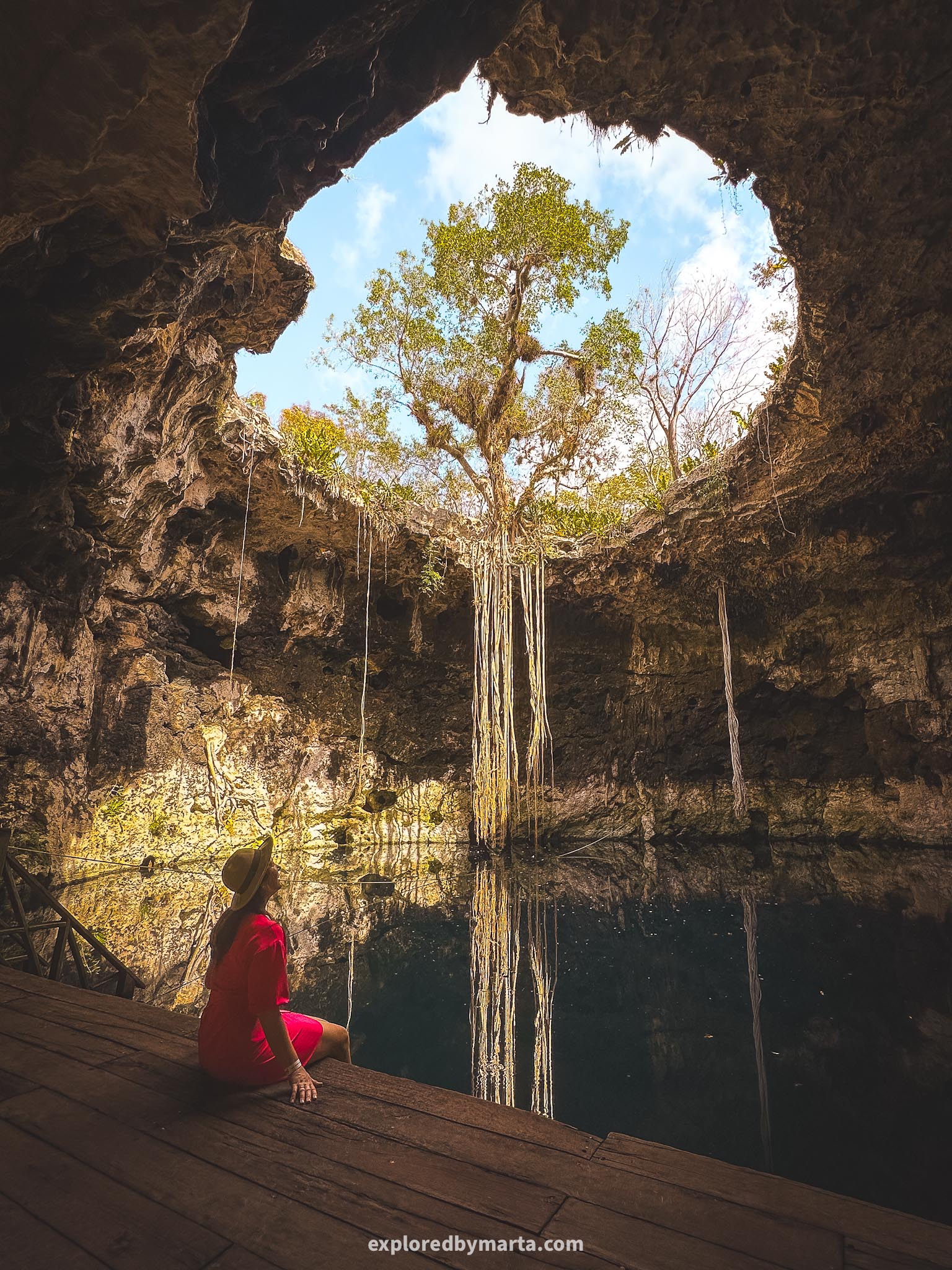
Everyone knows about the famous cenotes near Tulum or the iconic sinkholes everyone visits near Valladolid during the day trips to Chichen Itza however the area dotted with gorgeous hidden cenotes near Merida often goes unnoticed.
Merida is located next to the Ring of Cenotes Geohydrological State Reserve, a special area full of incredible cenotes hidden from the eyes of the crowds. We explored more than a dozen of them and some of my favorites were the Santa Barbara cenotes.
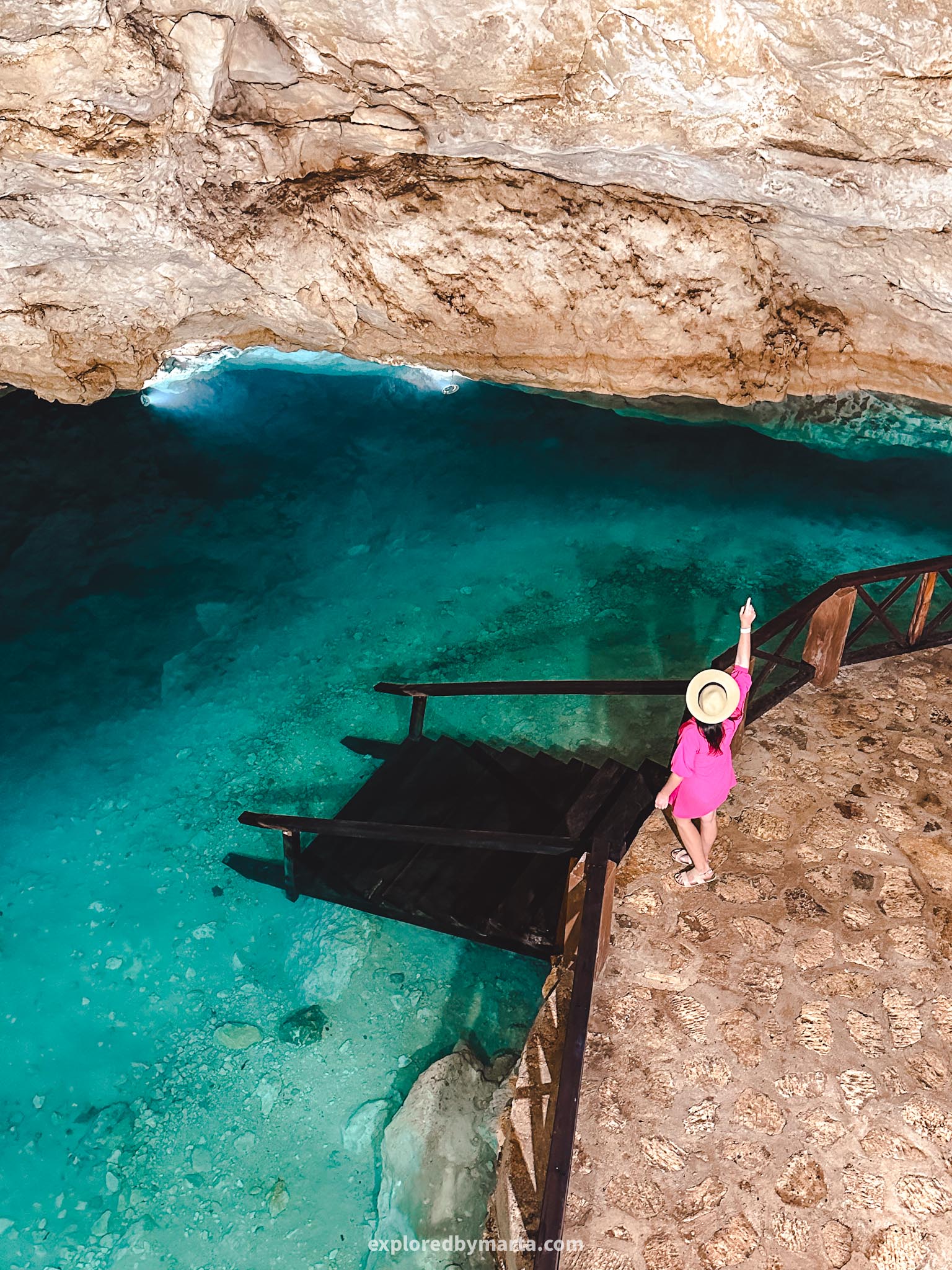
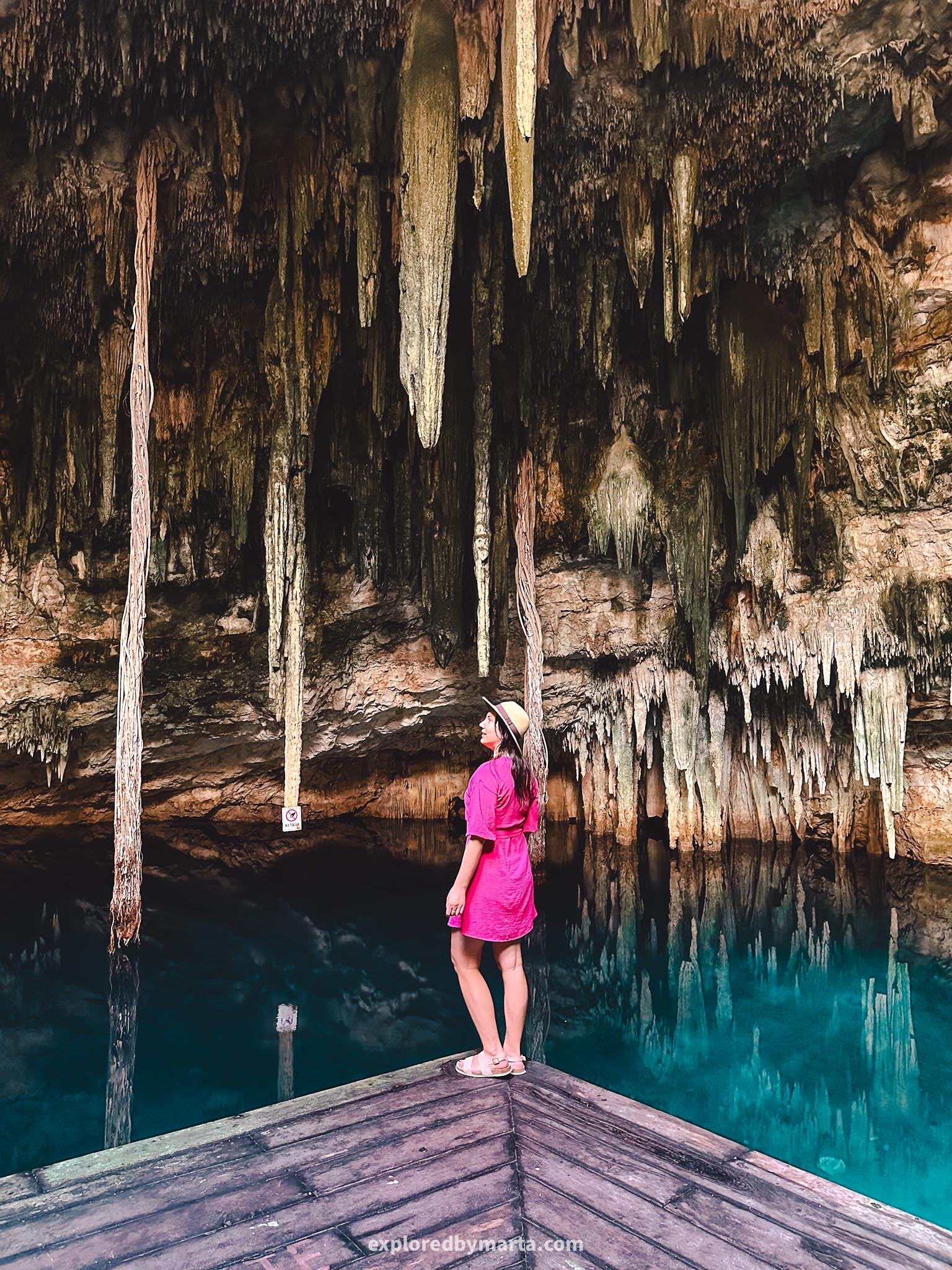
Santa Barbara cenotes are located in Homún municipality just a 1 hour drive from Merida. For an entrance fee of 350 pesos, you get to visit four different, gorgeous cenotes.
The most iconic cenote is Cenote Xooch – it stands out with its iconic tree fitting perfectly in the middle of a circular hole in the roof with its roots hanging down into the fresh water. Such an iconic postcard view!
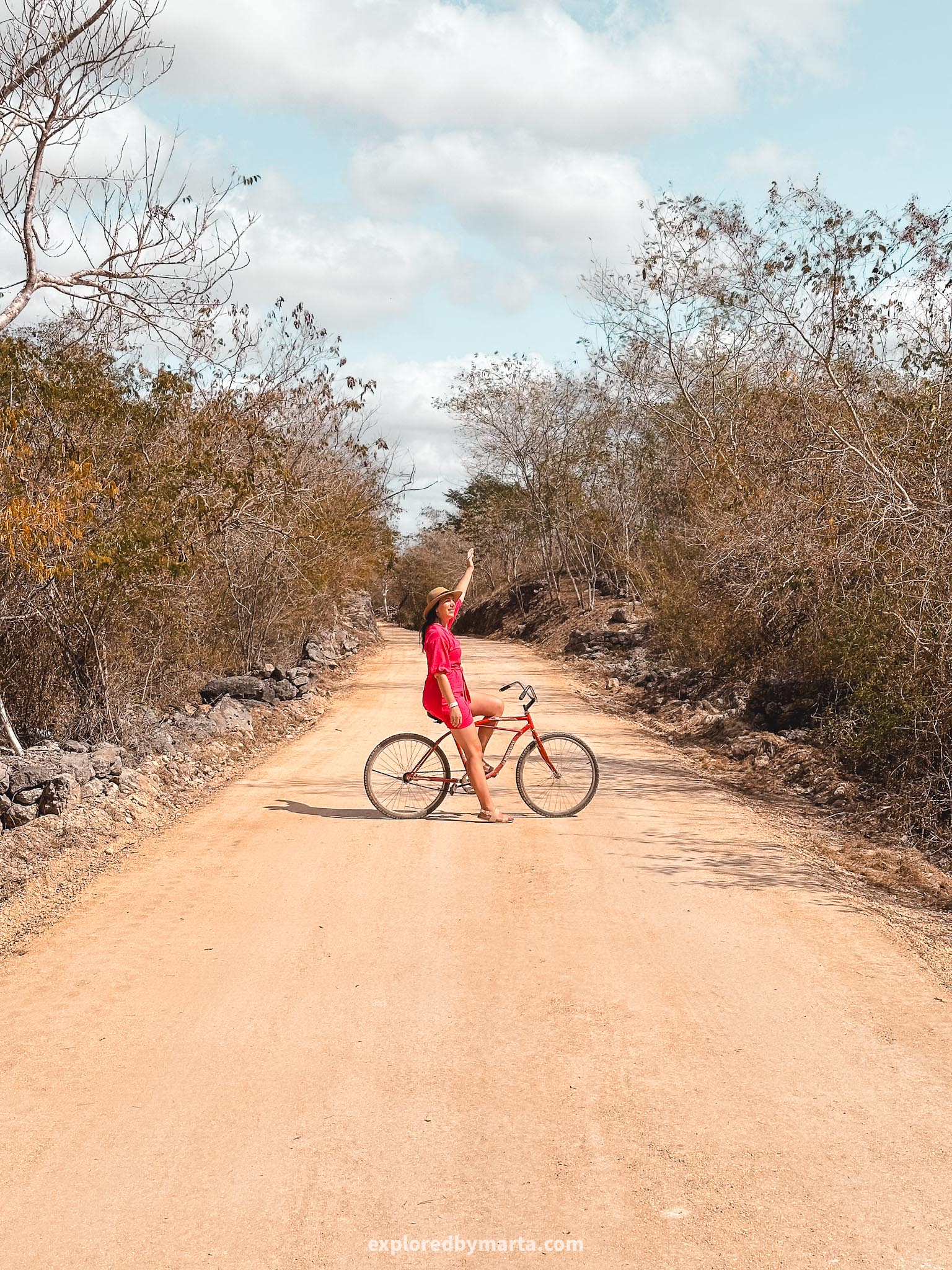
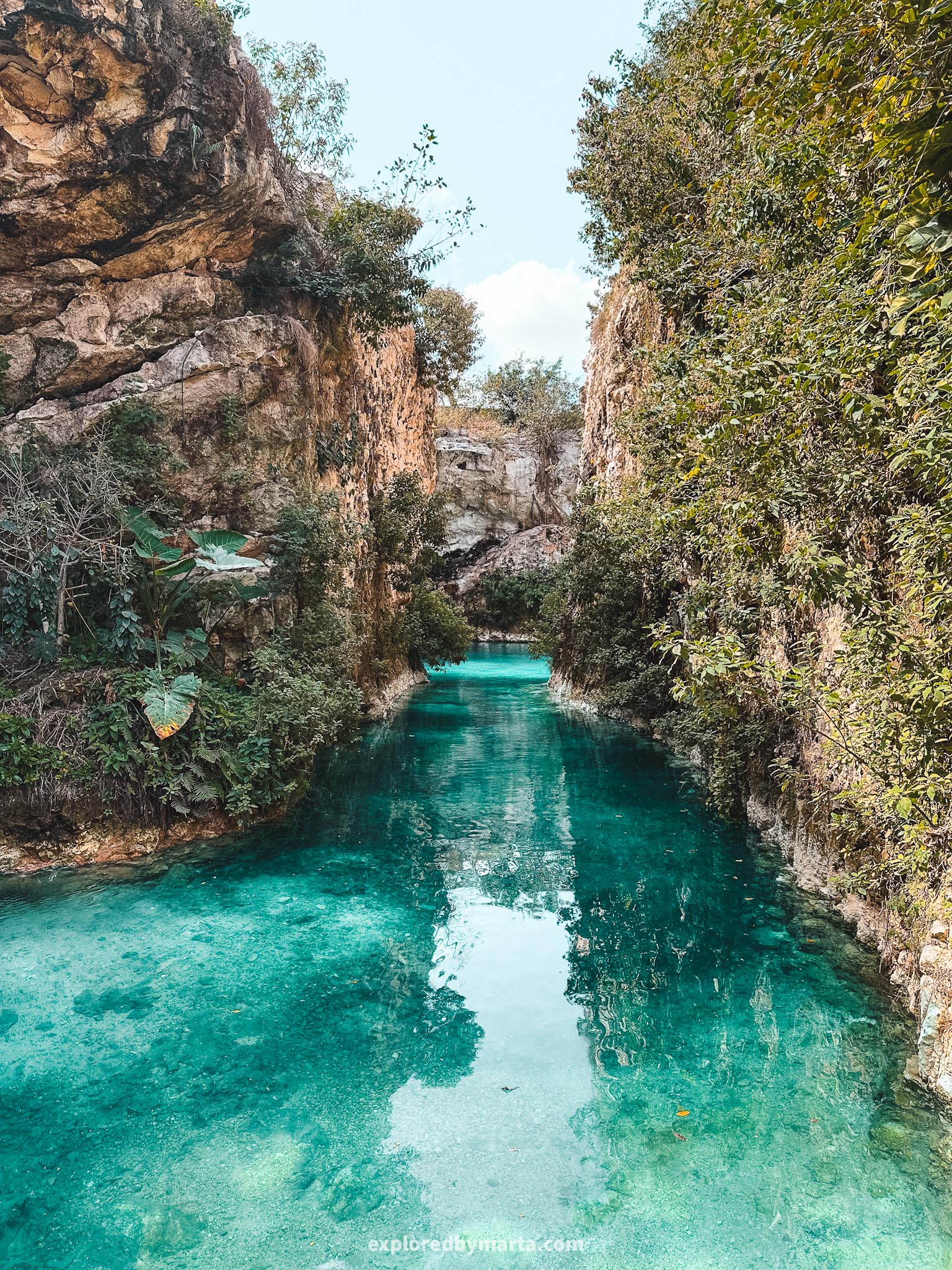
However, my favorite for swimming was Cenote Chacsikín. It is a massive underground gallery filled with stalagmites and stalactites and clear blue water – one of my favorite types of cenotes! It is pretty gigantic – plenty of space for swimming!
We traveled to these cenotes by our rental car. However, if you are staying in Merida, I recommend booking a guided cenotes tour to Santa Barbara Cenotes from Merida for a stress-free day.
Location: Cenotes Santa Bárbara – Guided cenotes tour
9. Dzibanché Archaeological Zone
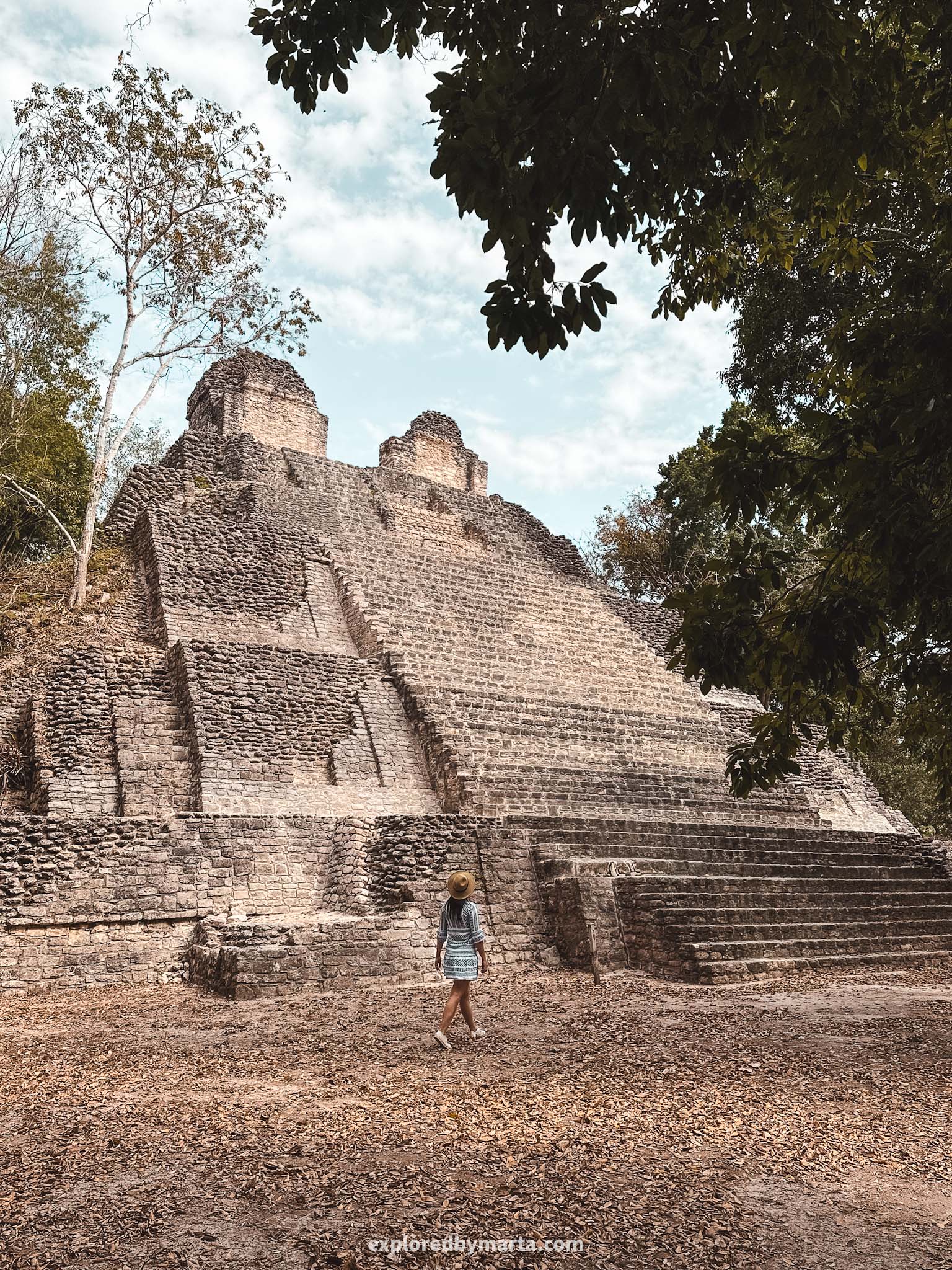
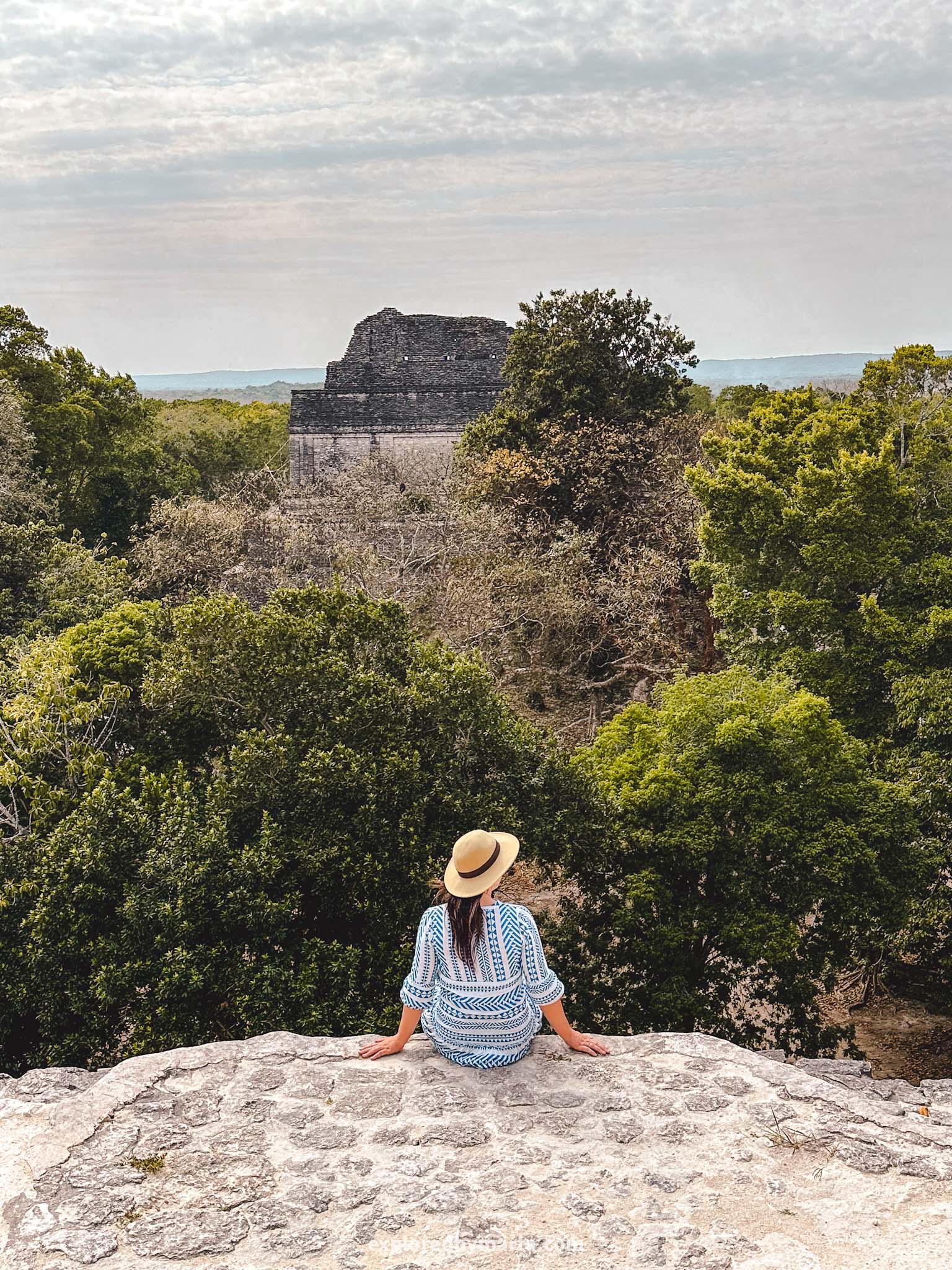
Dzibanché Archaeological Zone located a 1h 20min drive West of Bacalar is an absolute hidden gem to discover in the Yucatan Peninsula. The hidden Mayan site features multiple large temples and pyramids and the best part – you can climb them!
Dzibanché Archaeological Zone is one of the few larger Mayan ruins where you are still allowed to climb the pyramids – not all of them but we got to climb two massive ones and get fantastic views over the treeline of the surrounding jungle!
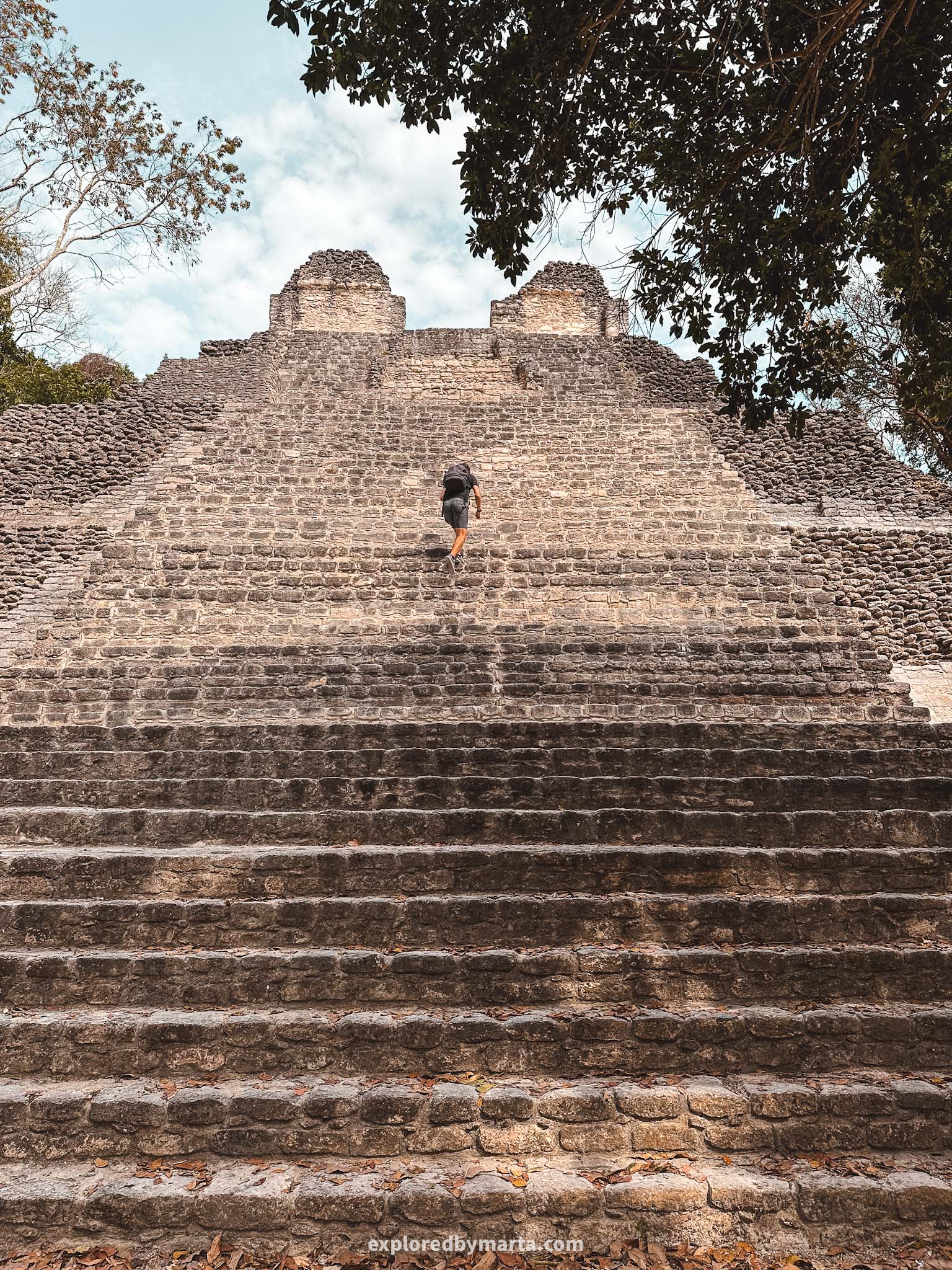
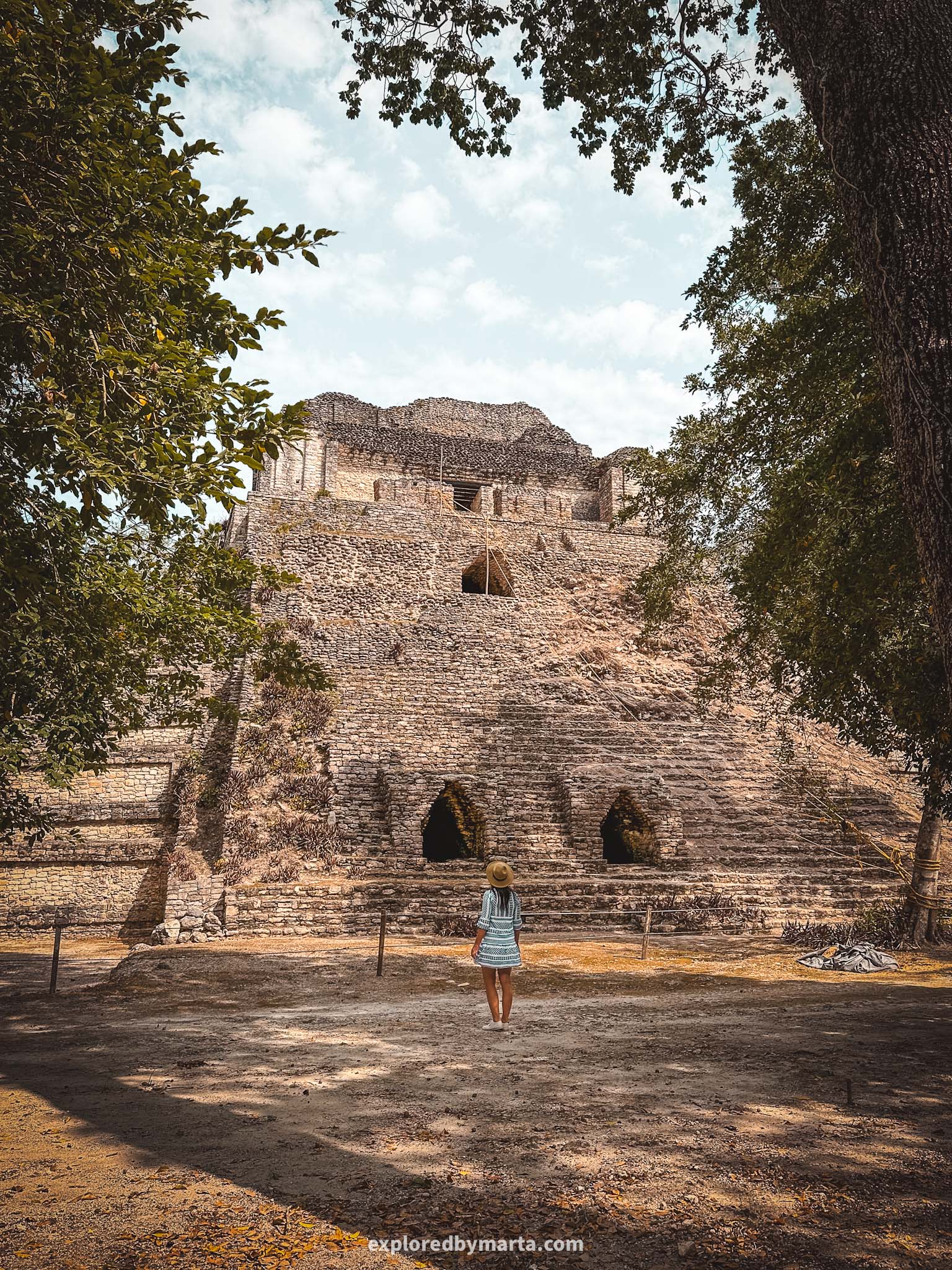
Most of the pyramids and structures in this Mayan site were built between the 4th and 10th centuries. The thing with temples and pyramids is that the Mayans often used to build the next structure on the base of the previous one.
As a result, most of the structures feature elements, details, and characteristics from different centuries and periods in the history of the ancient Mayans. These were some of the most incredible Mayan ruins in the Yucatan Peninsula!
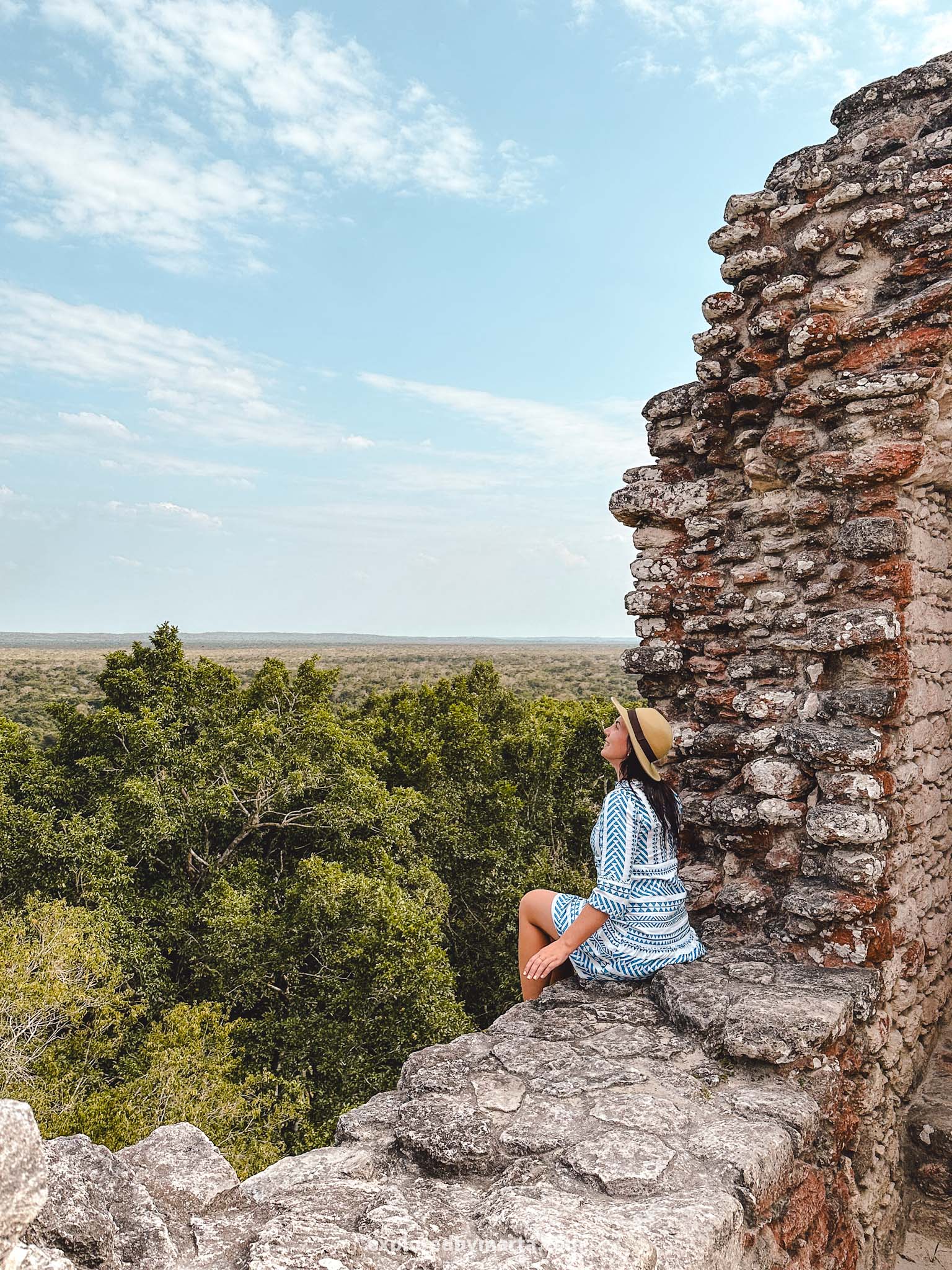
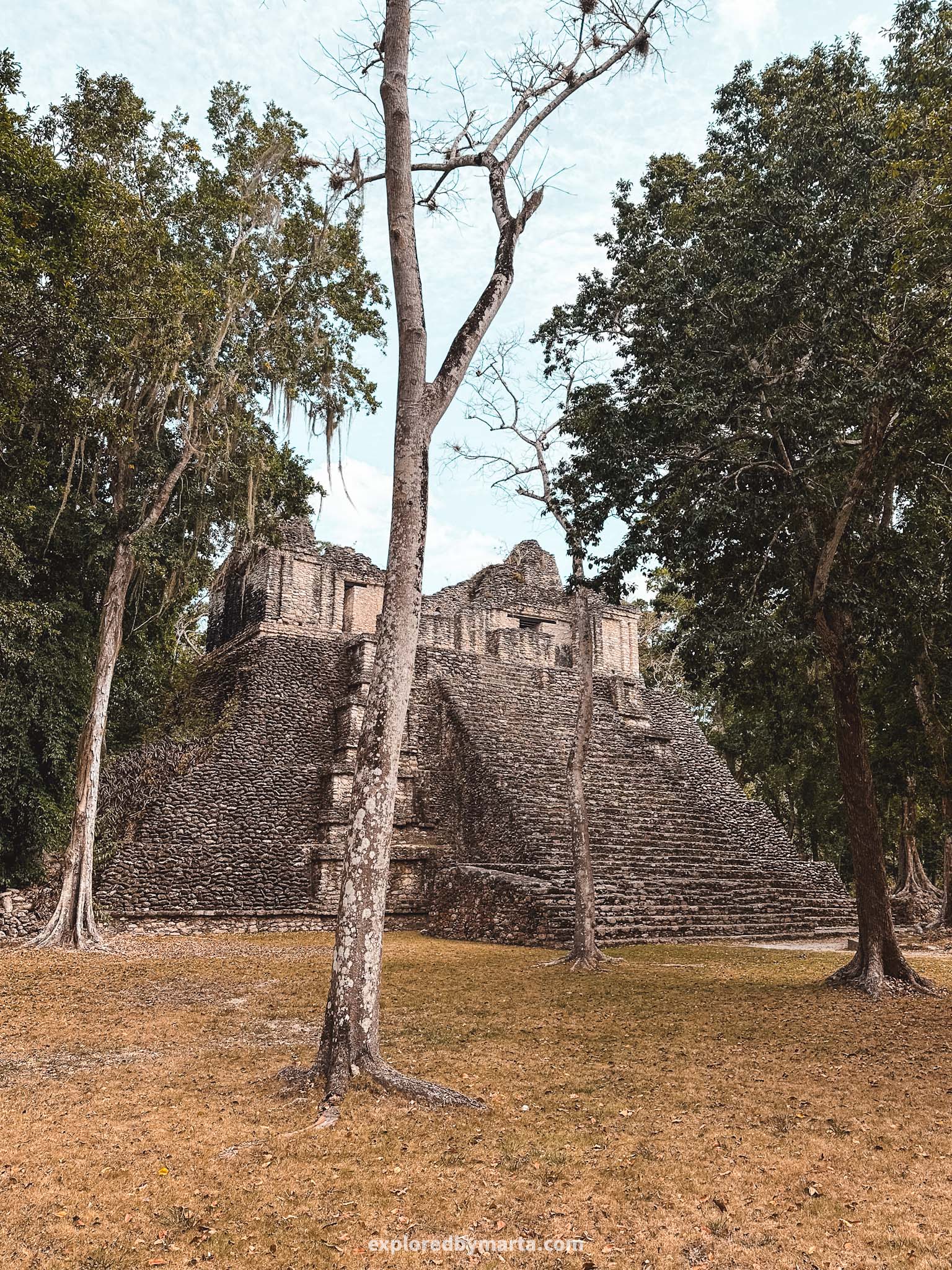
Entrance to the archaeological site is cheap – it was 50 pesos when we visited charged by a couple of local people a couple of kilometers before the ruins. No idea if that was official but we just wanted to see the ruins.
After you pay for the entrance you still have to drive a couple of kilometers on a horrendous road full of potholes. You can only get there by a rental car or you can join a guided tour from Bacalar. The ruins are fantastic and a rare sight for sure!
Tip! When wandering around the archaeological zone look at the trees! We saw lots of monkeys dancing and playing in the trees!
Location: Dzibanché Archaeological Zone
10. Chacchoben Archaeological Zone
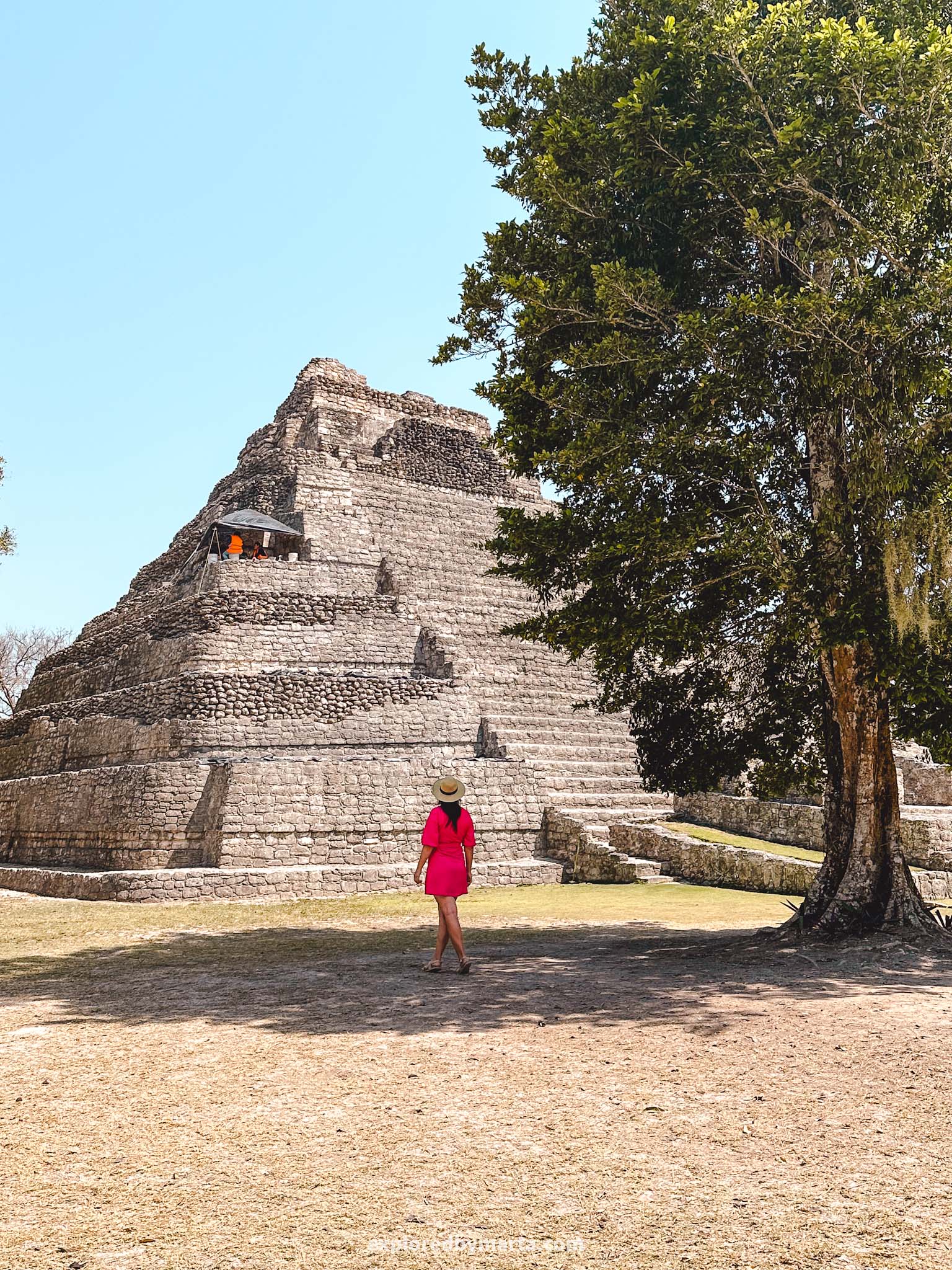
Another place located just a 30-minute drive from Bacalar and a 2h 20min drive from Tulum is one of my all-time favorite archaeological zones in the Yucatan Peninsula – Chacchoben Archaeological Zone!
Chacchoben Archaeological Zone is a hidden gem in the Yucatan Peninsula as it is situated off the main tourist hotspots. And it somehow makes it extra unique! We visited Chacchoben during our weekend trip from Tulum to Bacalar.
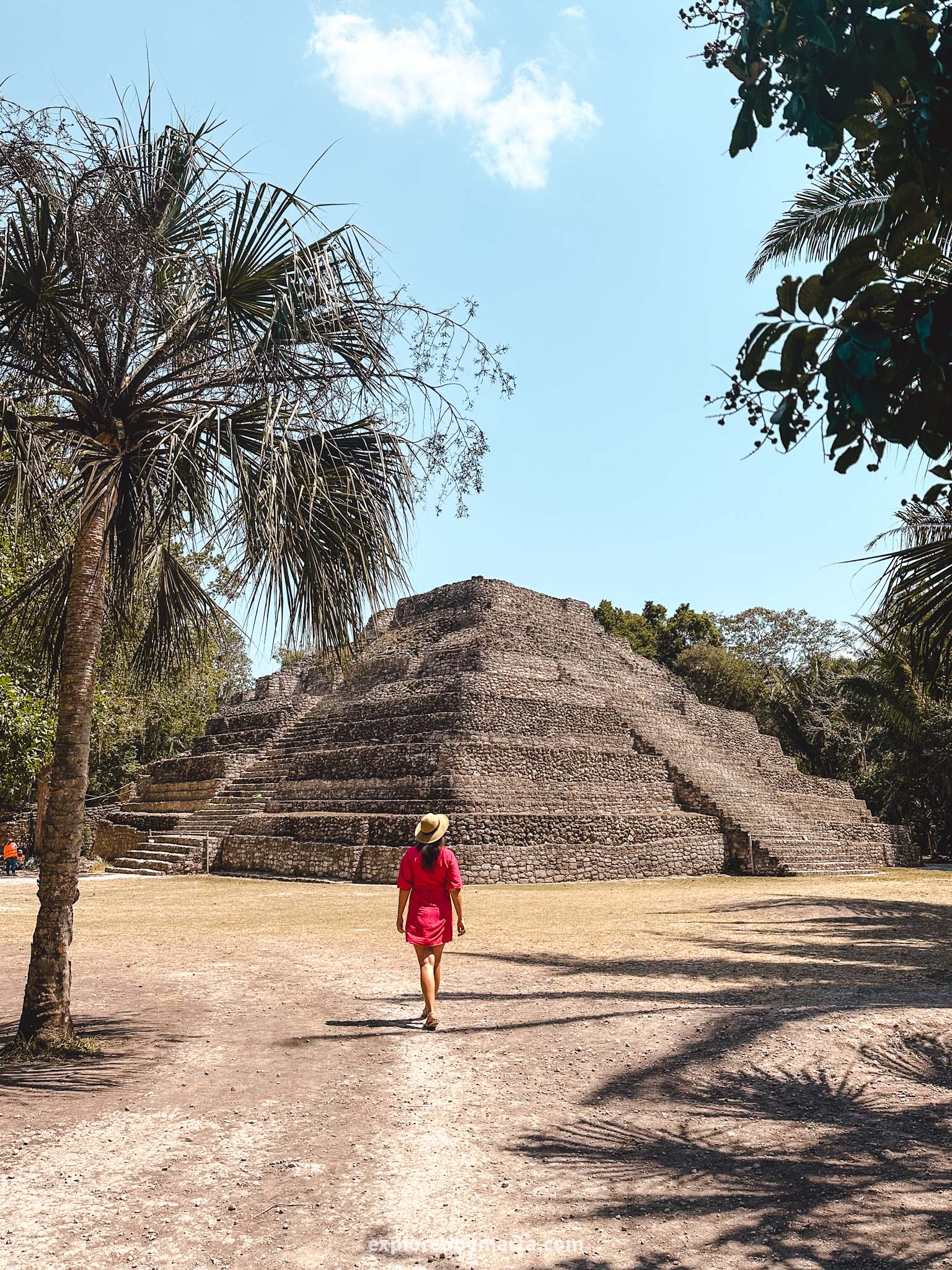
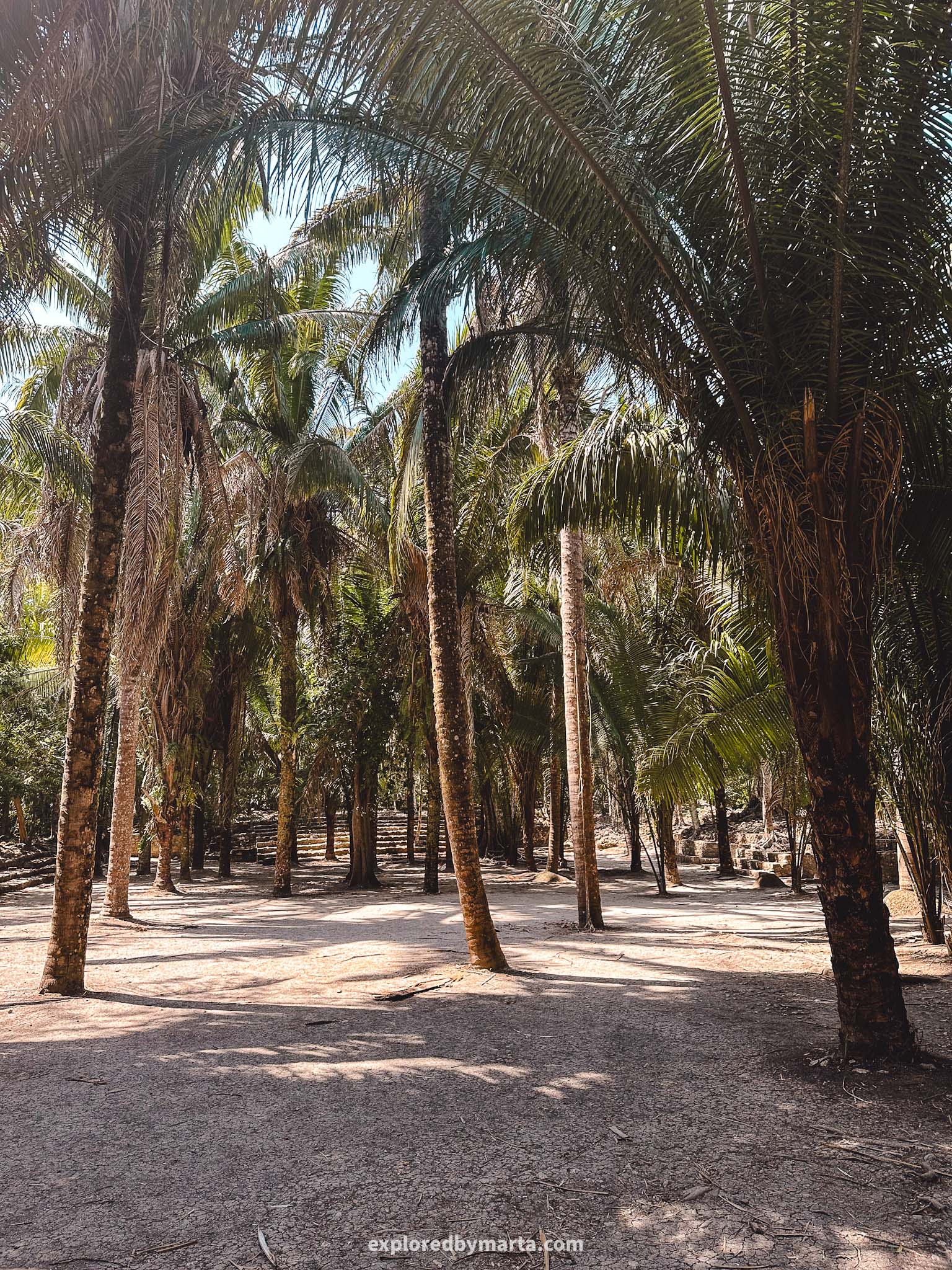
Chacchoben signifies ‘the place of red corn’ and first was settled by the Mayans around 200 BC but most of the structures here date back to the 7th-8th centuries. The site proudly boasts three large pyramids and many impressive temples.
Chacchoben once was the largest Mayan city in the area known as the ‘Region of the Lakes’. When we visited it was completely empty apart from archaeologists still working on restoration. It gets a small visitor influx when the cruise ships arrive.
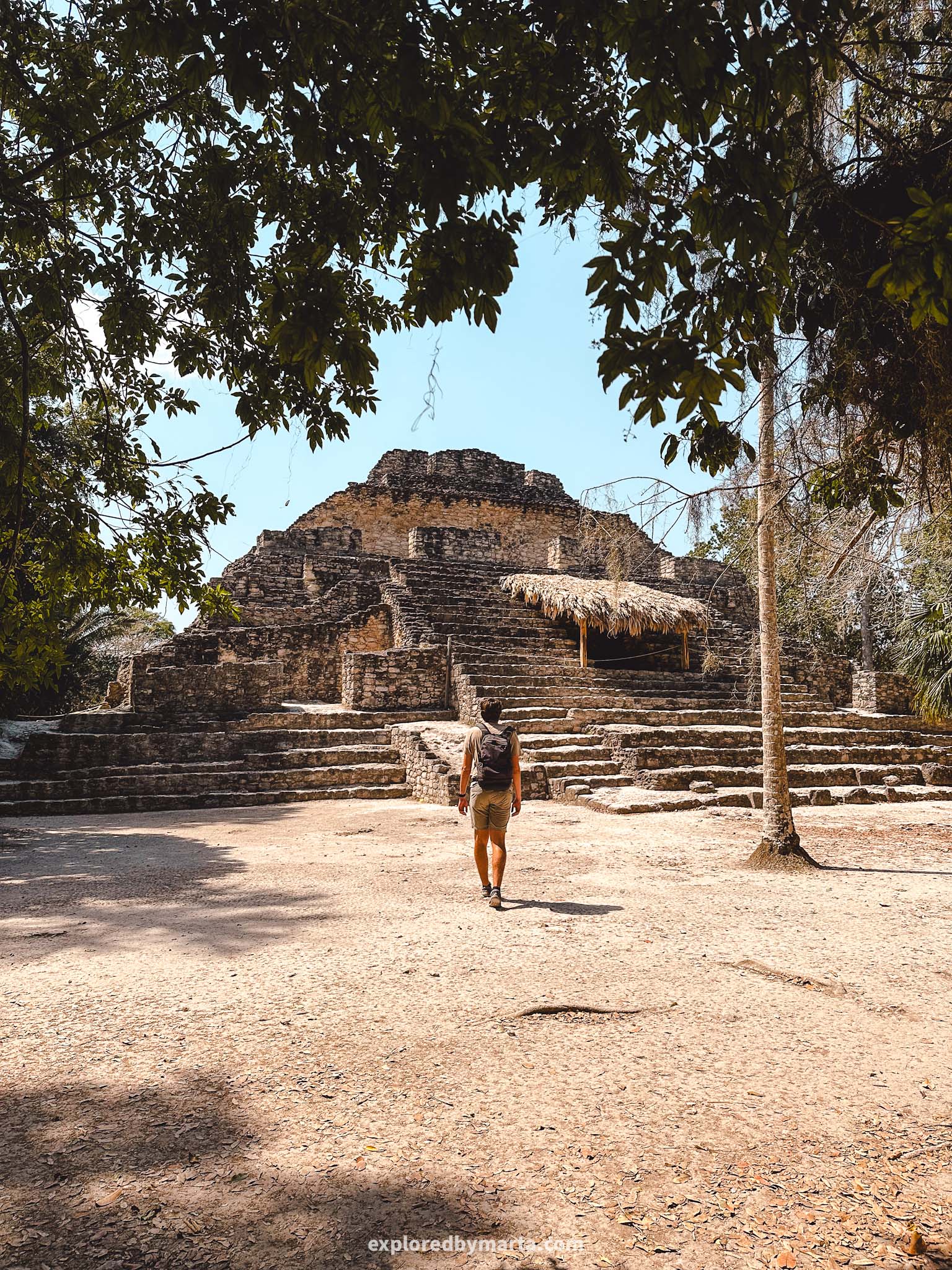
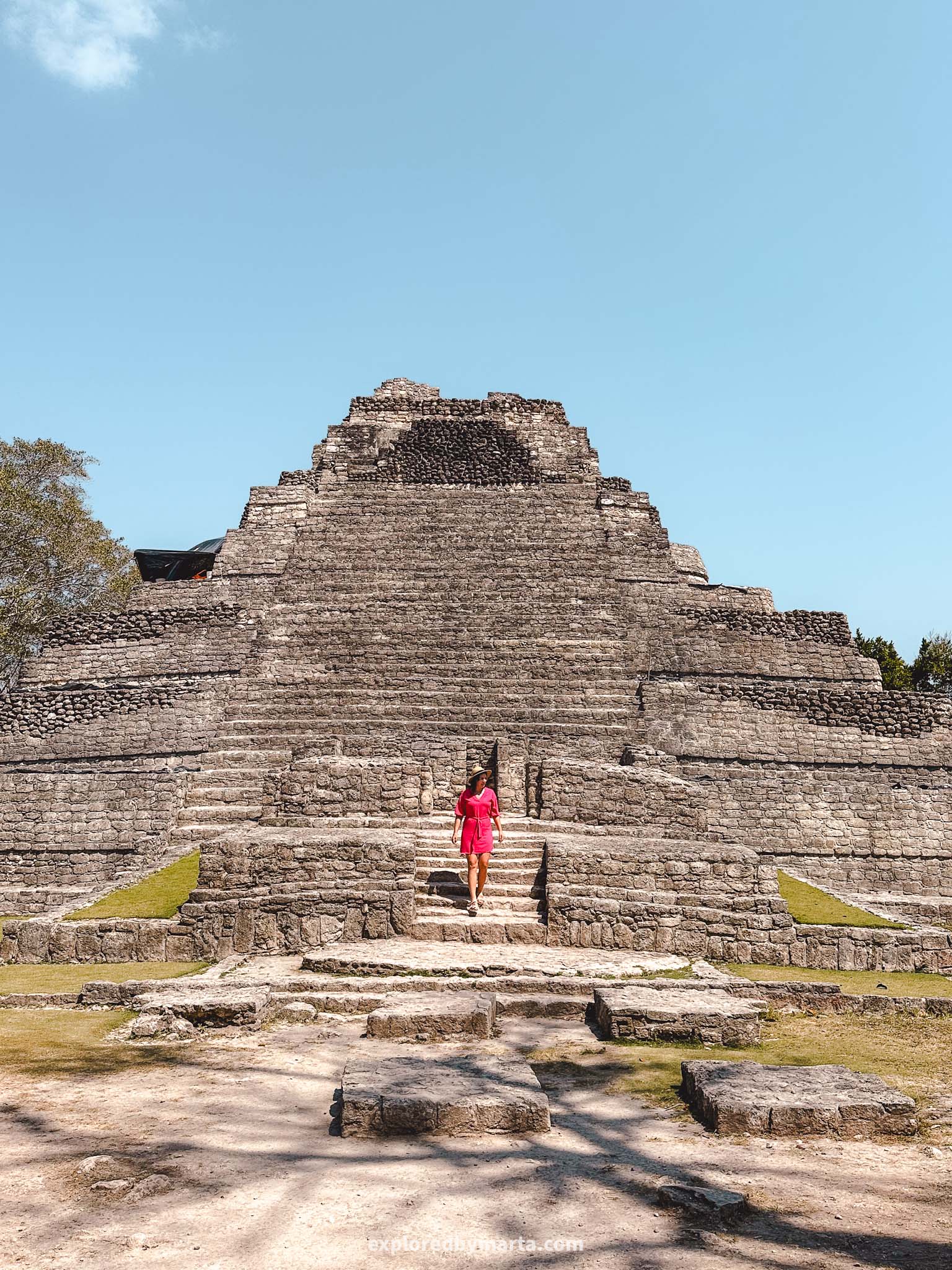
Entrance to the site was 80 pesos per person and we also had to pay some for parking (no idea if that was official – better just give some 50 pesos to be safe, haha!). We were also offered a guide but we managed with a map and the Internet.
As you walk in the Mayan site you will soon stumble upon the first large pyramid. However, it is a place full of secrets. You have to follow paths through the deep jungle and climb up a staircase to discover the real gems – two more massive pyramids.
You can’t climb any of the pyramids. Some archaeologists and workers were still doing restoration and maintenance when we visited. If you drive from Tulum, don’t access the site from Chacchoben village – there was a collapsed bridge with a horrible detour.
Location: Chacchoben Archaeological Zone
11. Calzada de los Frailes in Valladolid
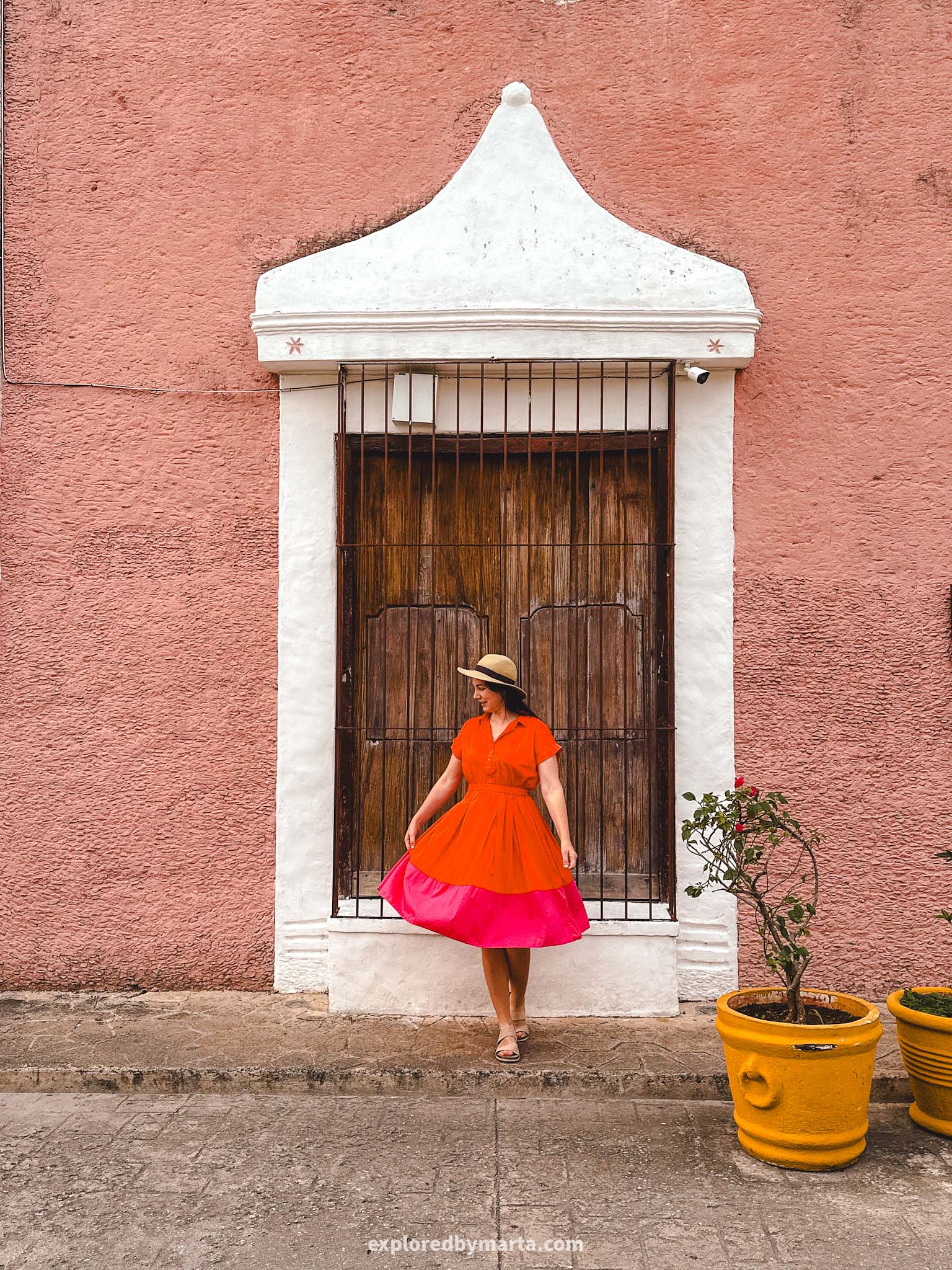
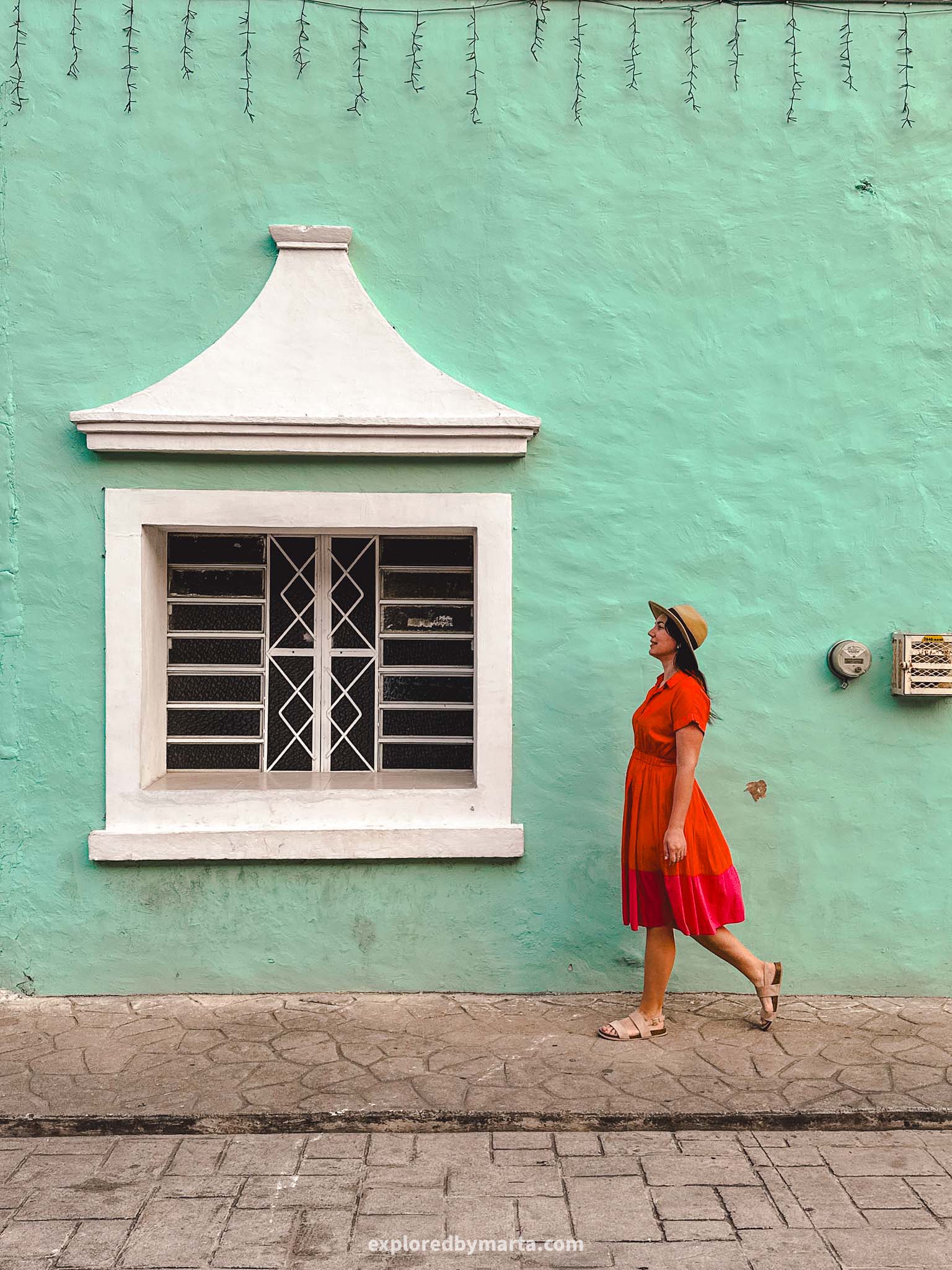
Not many travelers think of Valladolid as worthy of a visit. But there’s a hidden gem in this town – Calzada de los Frailes (Friars Causeway from Spanish). It is probably the most beautiful street in the Yucatan peninsula!
Valladolid is a colonial town and this street is a classic example of colonial architecture. Historically this street was built to separate the Mayan communities from the Spanish people. Obviously, today it is free to walk for everyone!
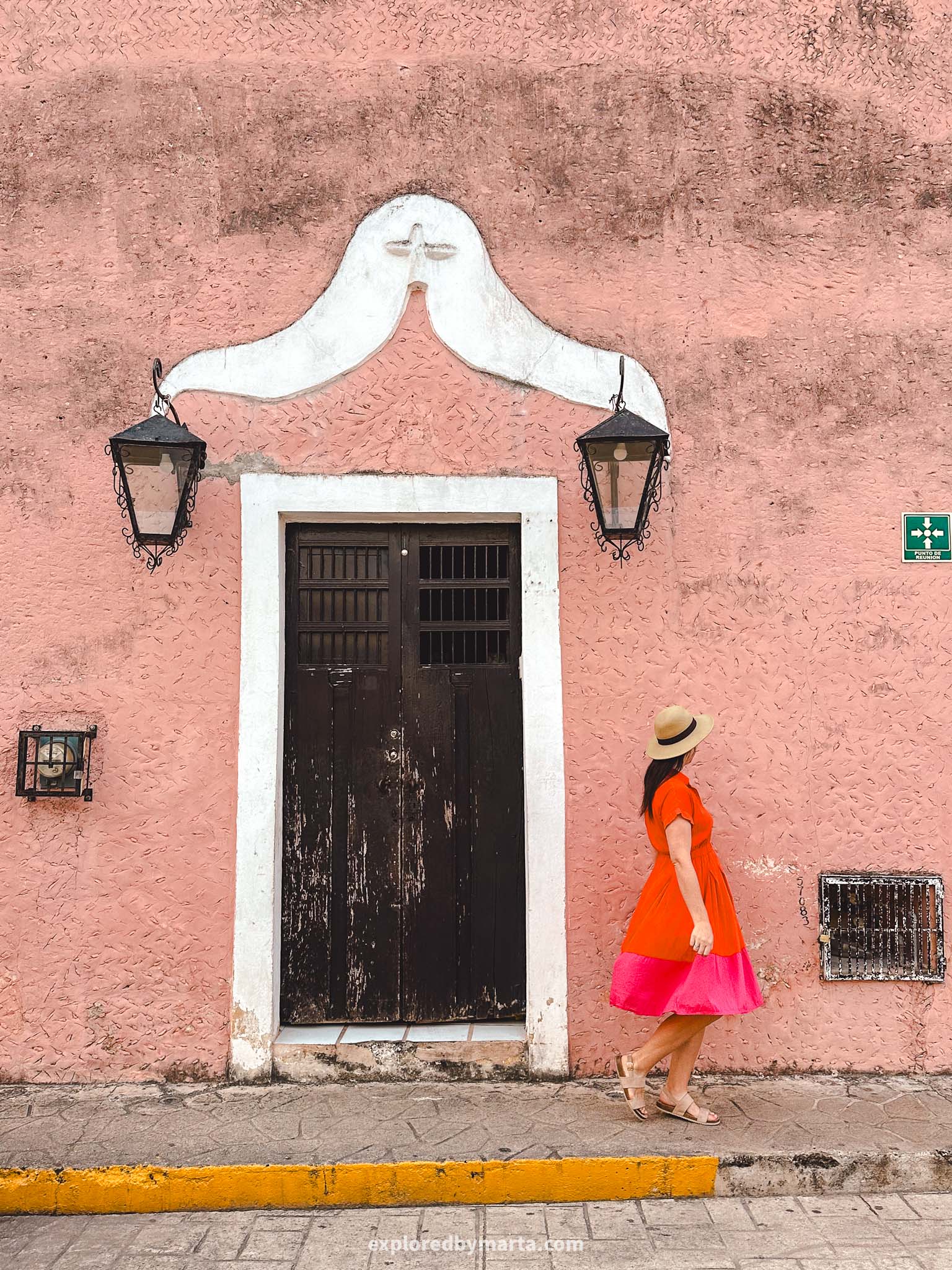
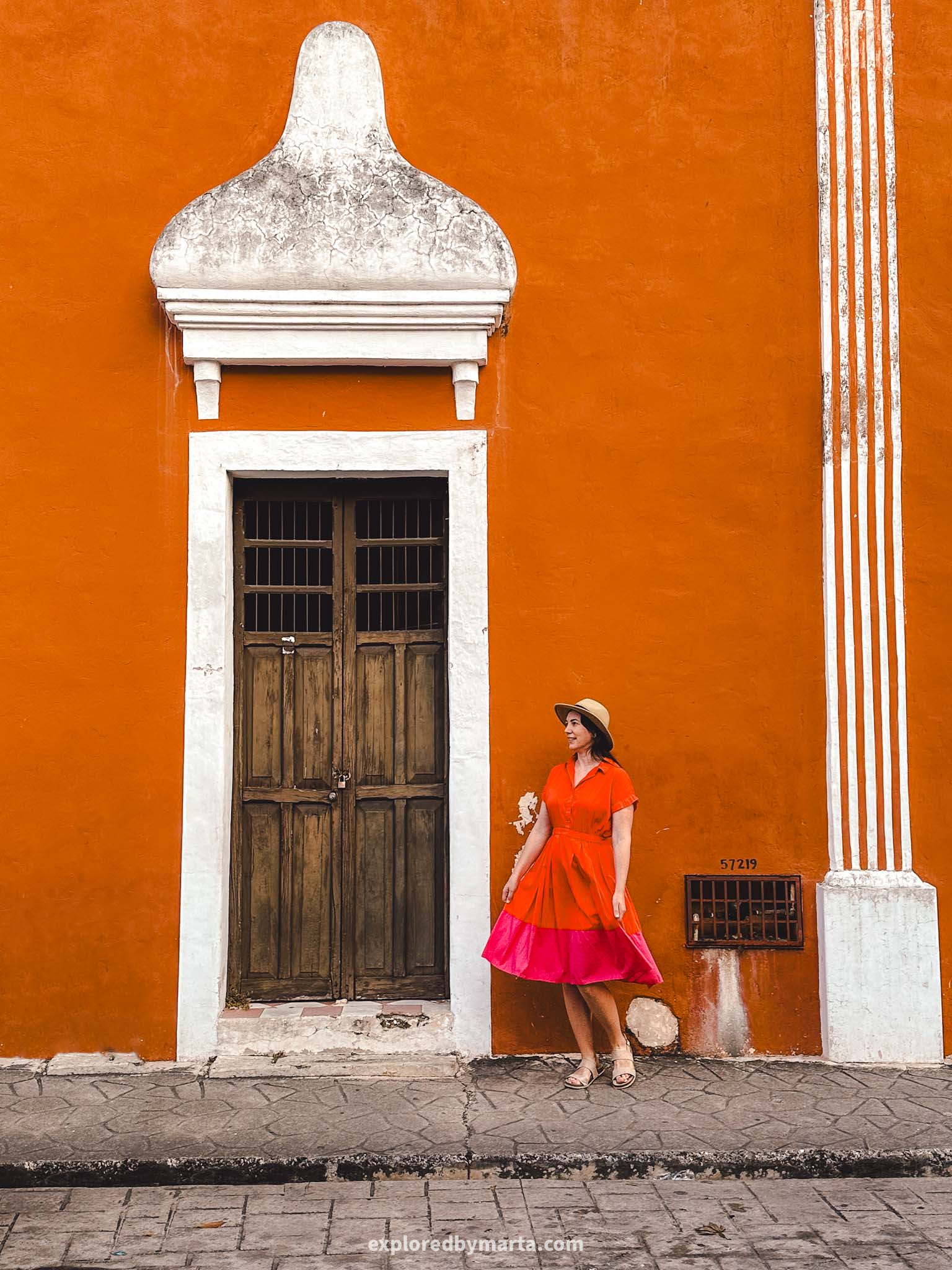
I highly recommend planning a visit to Valladolid. It is one of the most charming colorful cities in the Yucatan Peninsula – just look at this street! Built in 1801, the little street is dotted with pastel-colored photogenic houses and doorways.
And it is easy to walk this street from one way to the other – the street starts just two blocks away from the central plaza in Valladolid and ends about 600 meters later at the popular Parque Sisal Park housing the iconic Convent of San Bernardino de Siena.
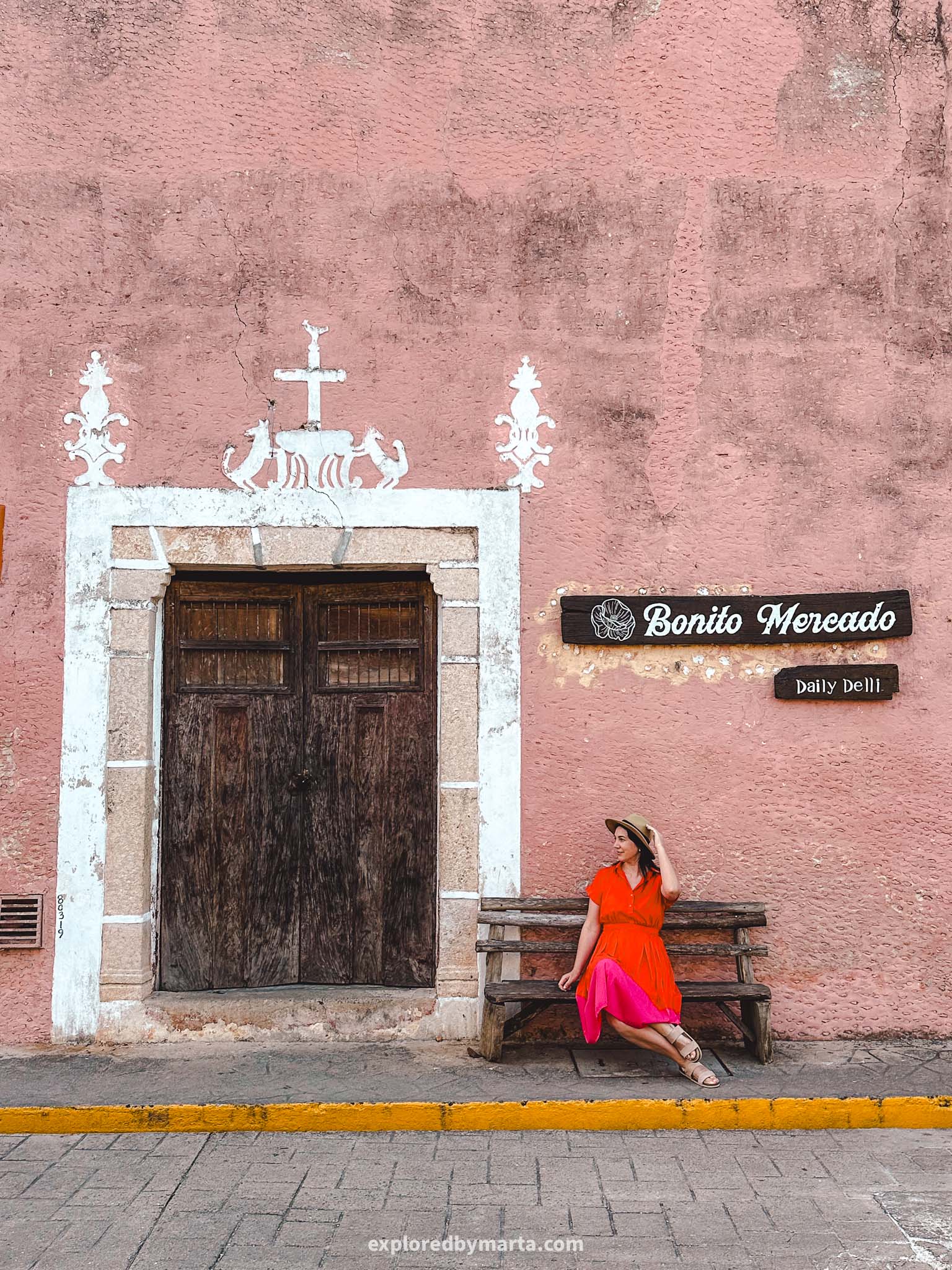
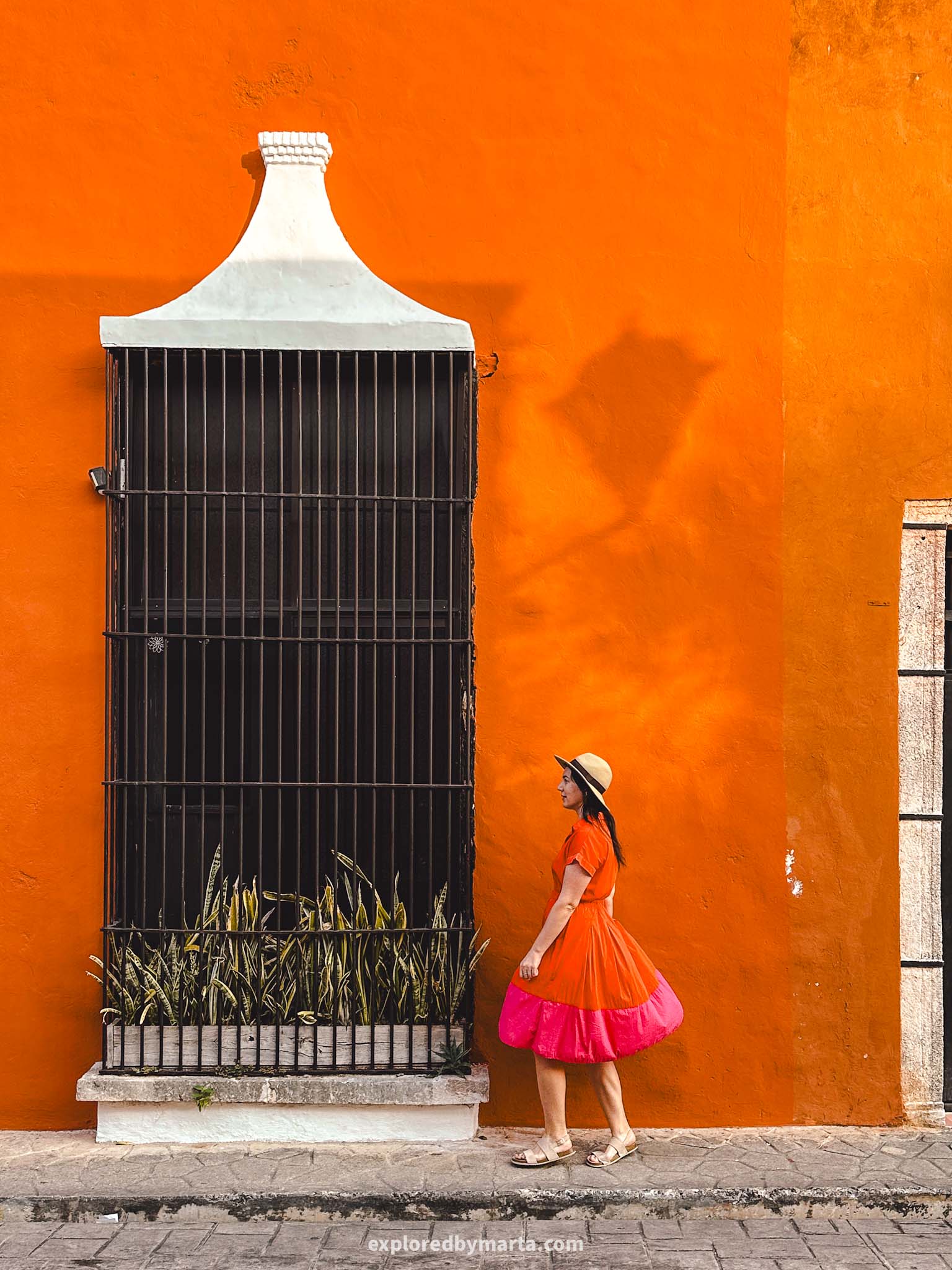
If you have more time to spend in Valladolid, I recommend combining a visit to this street with a visit to the convent. Plus you can check out Valladolid letters located in the same park in front of the convent.
We actually spent three weeks living in Valladolid and exploring the town. This street was only one of the many colorful streets and charming photo spots in Valladolid. If I were you, I’d try to squeeze in Valladolid in my travel itinerary.
Location: Calzada de los Frailes
12. Cenotes de Cuzamá
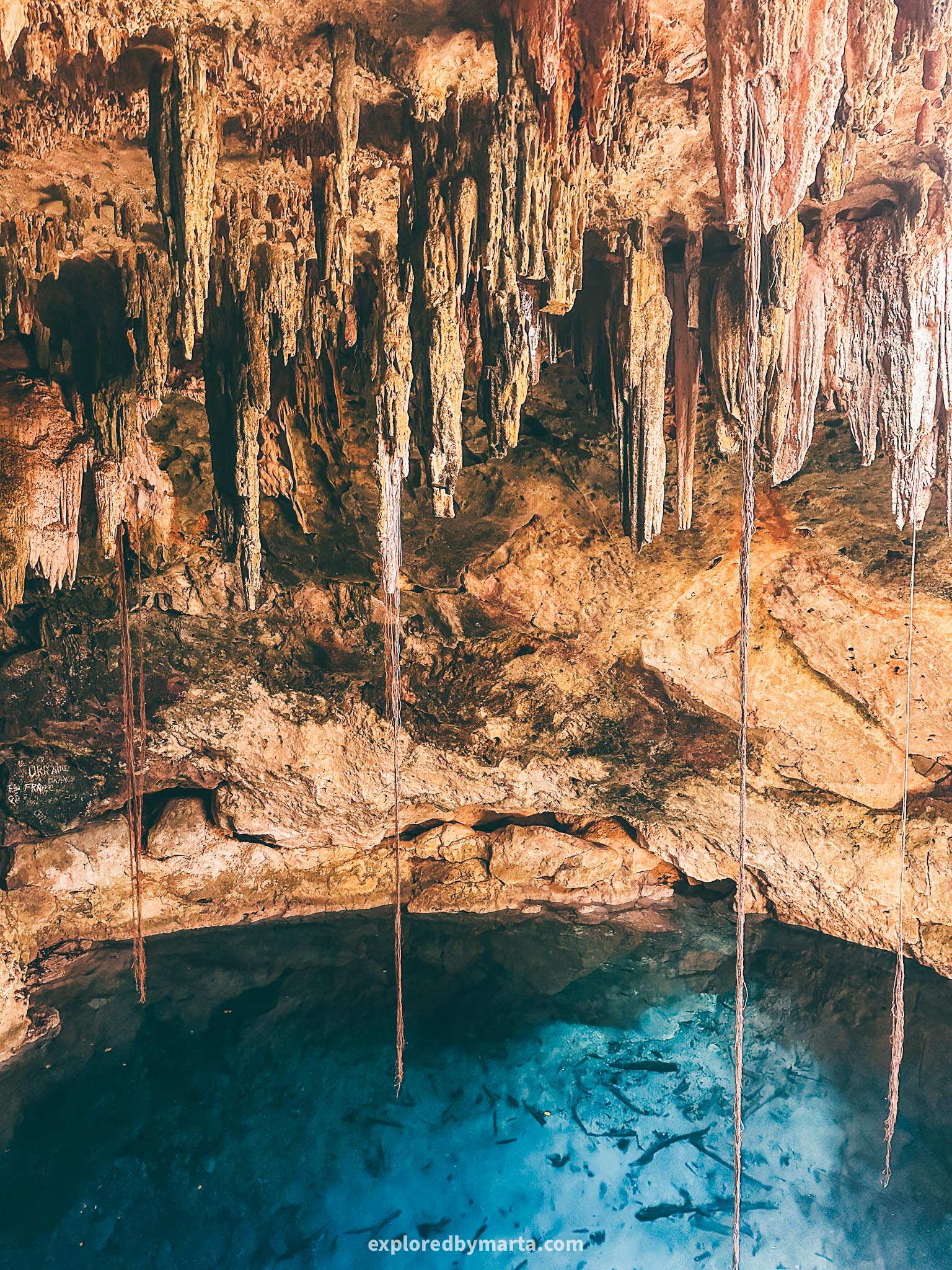
Now here’s a real adventure off the beaten path in Yucatan – Cenotes de Cuzamá near Merida. It is a group of three different, gorgeous cenotes hidden deep in the jungle only accessible by a horse-drawn carriage.
How to get there? You have to drive to the visitors’ center in Cuzamá, park your car, pay 800 pesos (cash only) for a horse-drawn rail cart that fits up to 4 people and it will take you on a 2 to 3-hour trip to all three cenotes along a railway.
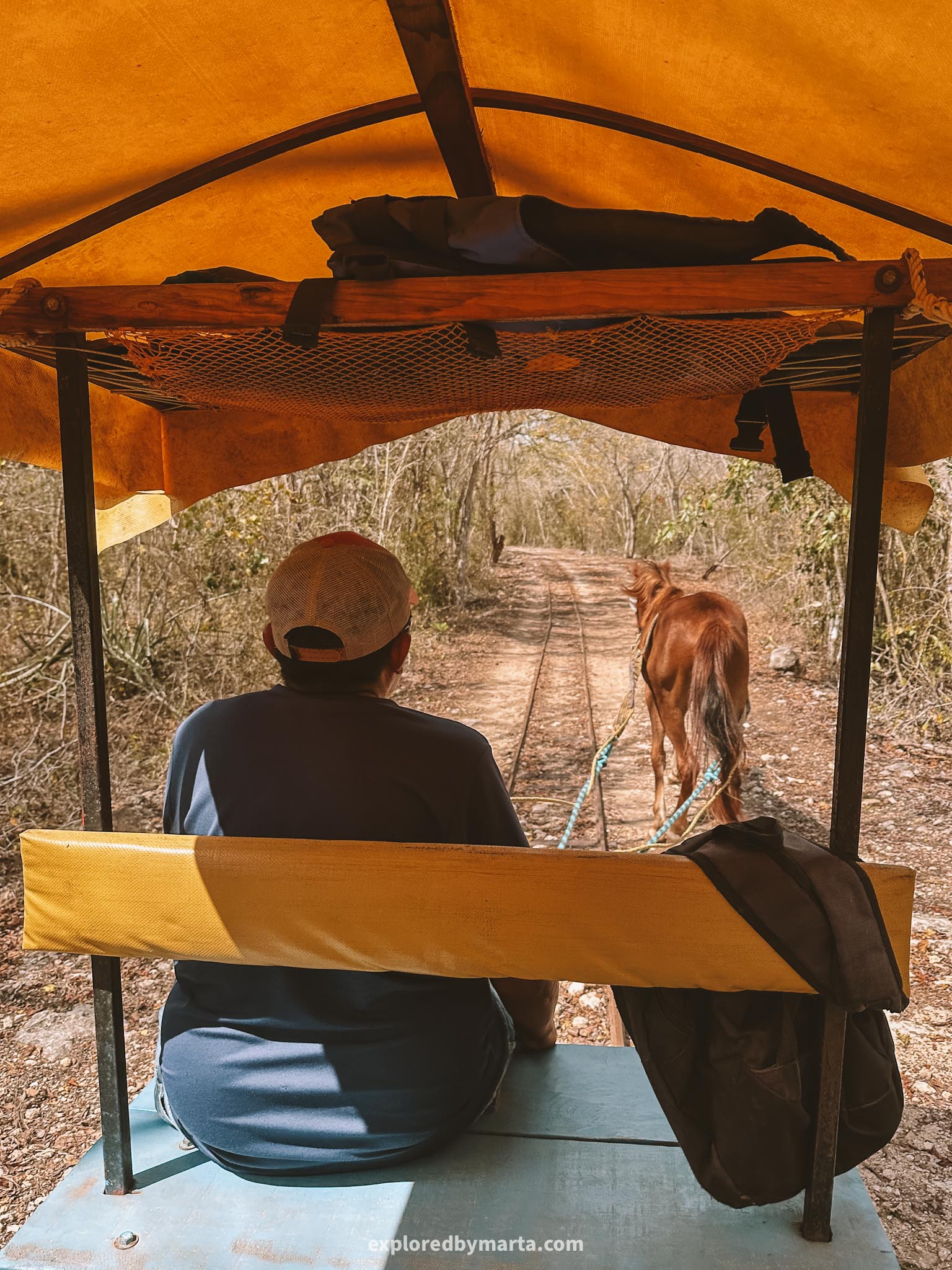
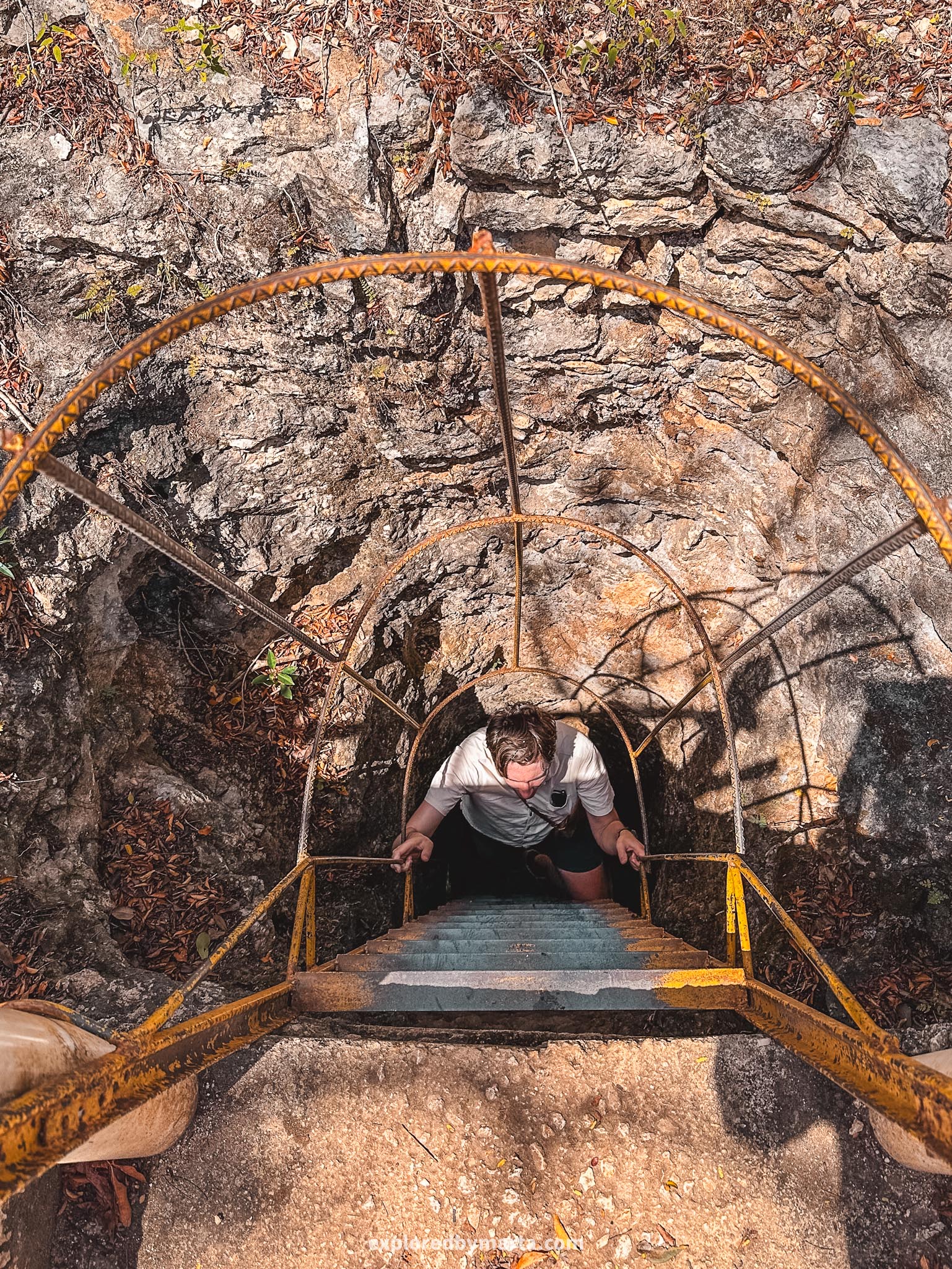
You can only visit all of these three cenotes together during a single trip you pay for at the entrance so it is impossible to have crowds there and you will be one of only a few people there. You get 30 minutes in each cenote and it is actually enough.
The three cenotes you get to visit are Cenote Chac-Sinic-Che, Cenote Bolochohool, and Cenote Chan Ucil. All of the cenotes are closed cenotes underground only accessible through a narrow, almost-vertical staircase.
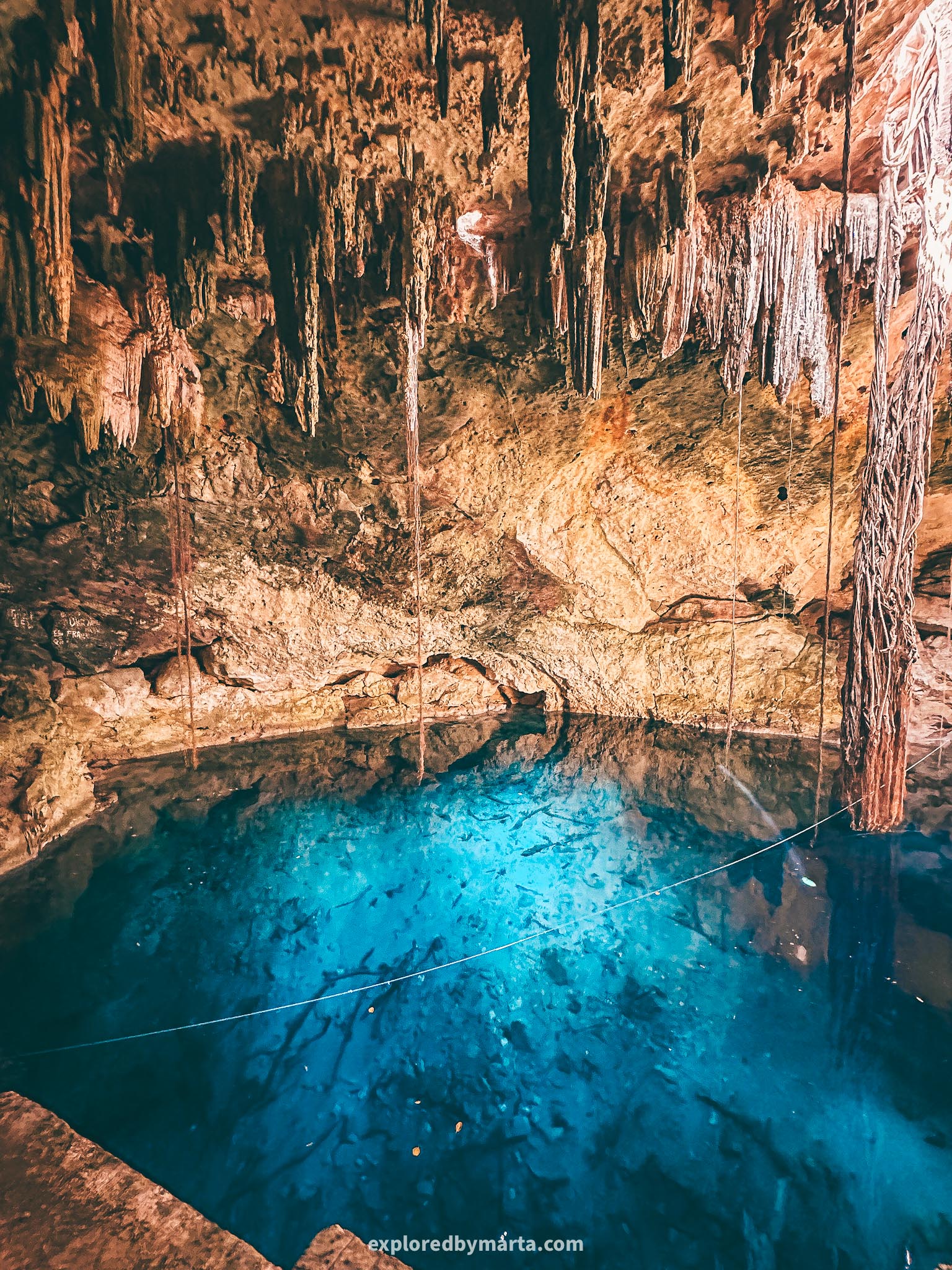
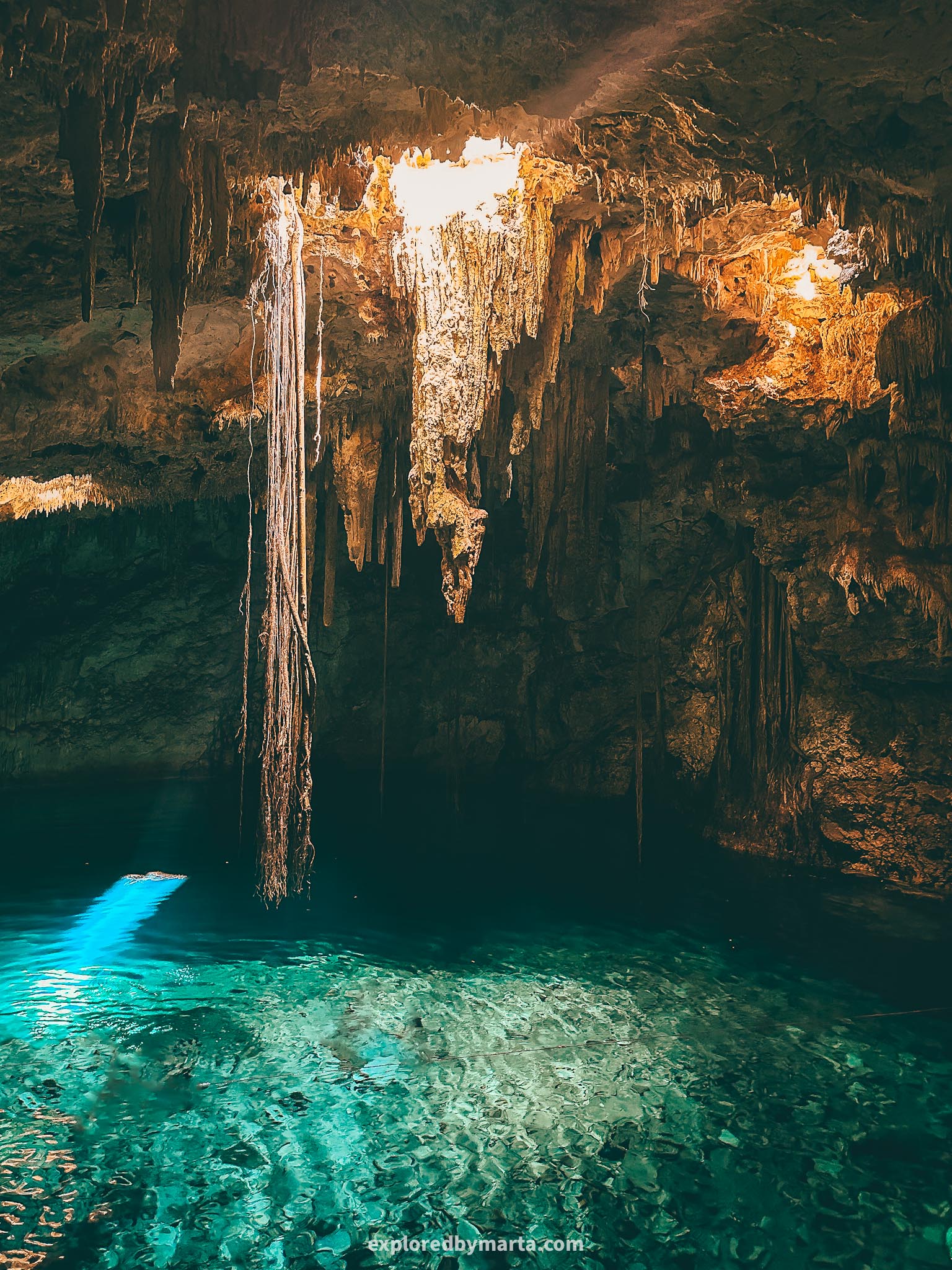
Cenote Chac-Sinic-Che was probably the best one for swimming. After a narrow staircase, you get on a platform where you can leave your belongings and jump from it into the clear blue water.
Cenote Bolochohool is the deepest of all reaching 35 meters (115 feet) in depth (but only in certain spots). It is also much darker as the opening in the roof is smaller than it was at the first cenote but it is undoubtedly very beautiful.
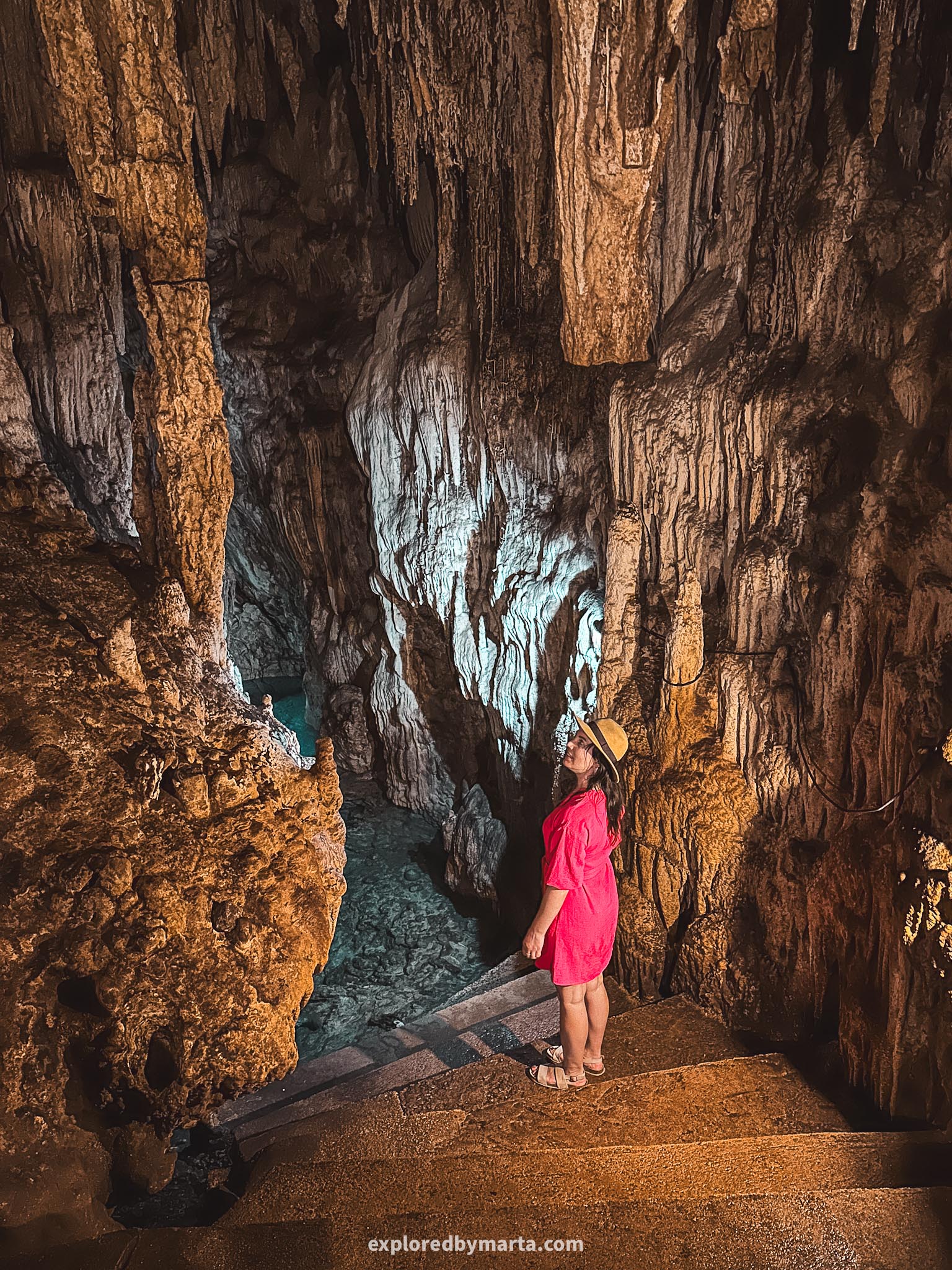
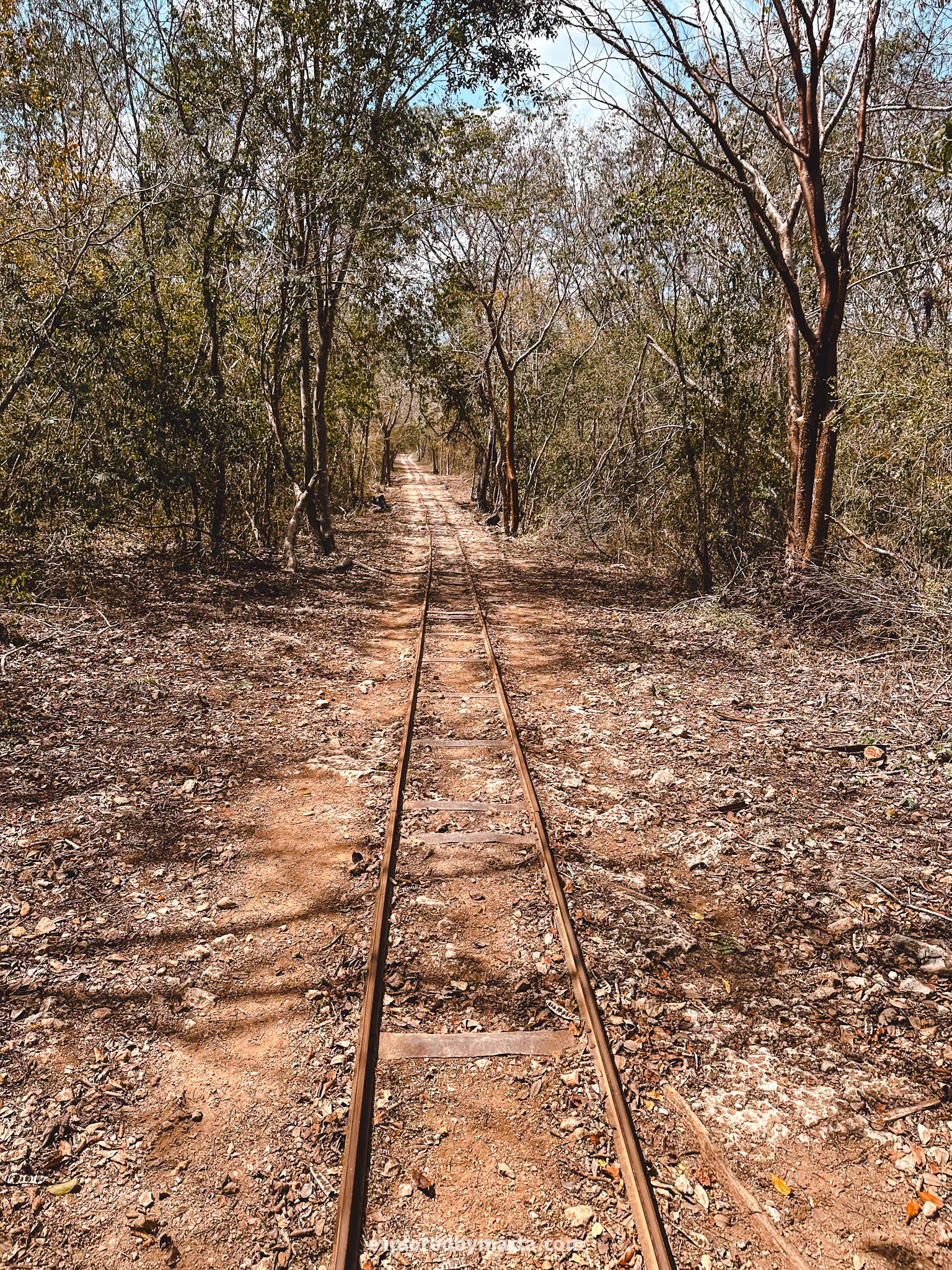
On the way back you will stop at the last cenote – Cenote Chan Ucil. The swimming space is very small but, wow, how unique it is! It’s a large maze of stalagmites, stalactites, and secret pathways guiding you through the underground labyrinth.
Tip! Take a backpack with a towel, drinks, snacks, and a change of clothes with you! We made a mistake and left our water bottle in the car and spent 3 hours in Mexico’s heat without drinking. Ups!
Location: Cenotes de Cuzamá
13. 3D Museum of Wonders in Playa del Carmen

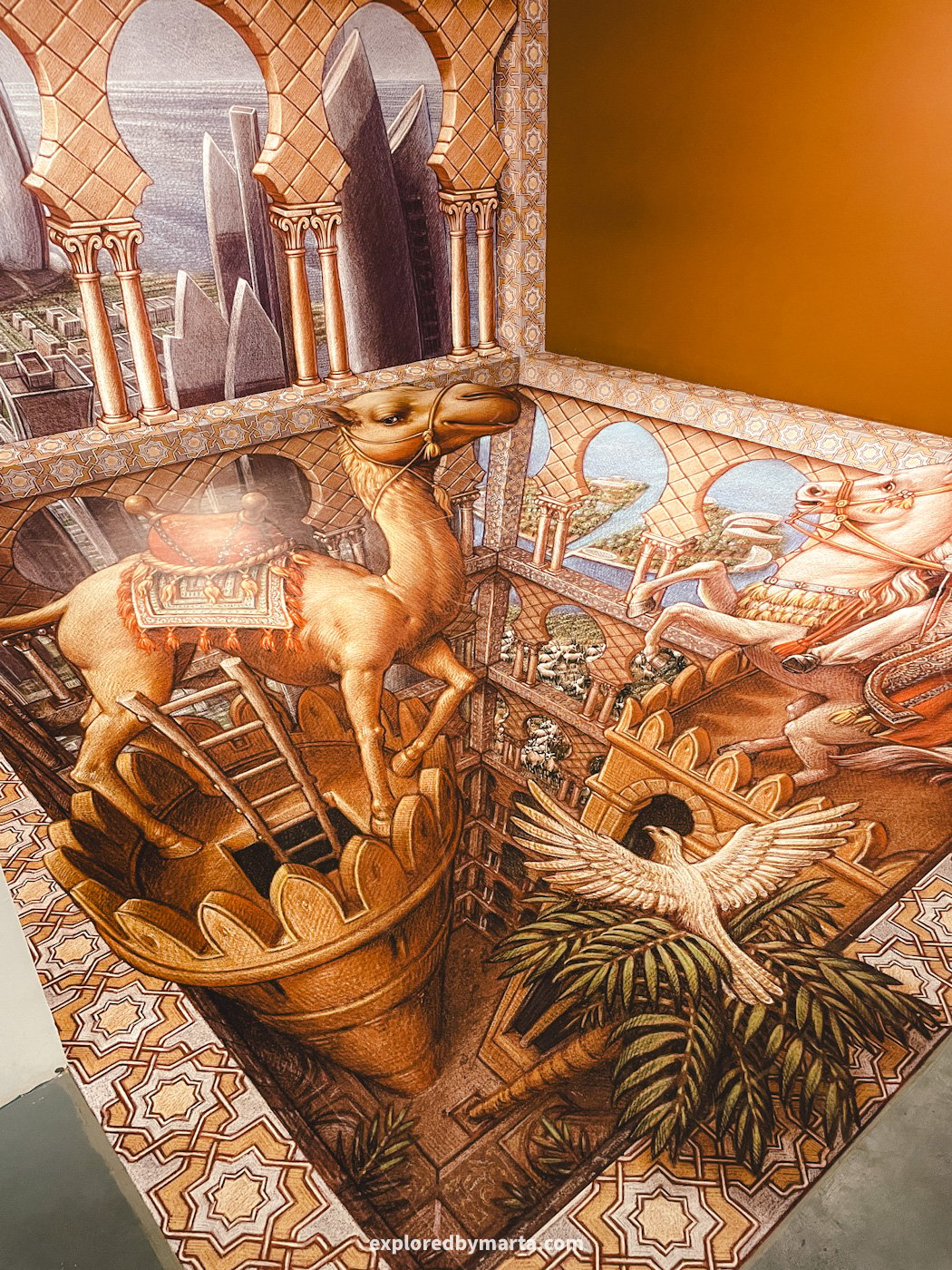
Playa del Carmen doesn’t have to be all about beautiful beaches, party life, and food. If there is one cool place to visit in Playa del Carmen, it is definitely the unique 3D Museum of Wonders.
I am not one of those who include museum visits in travel itineraries and I visit museums quite rarely, but we had to see the 3D Museum of Wonders in Playa del Carmen.

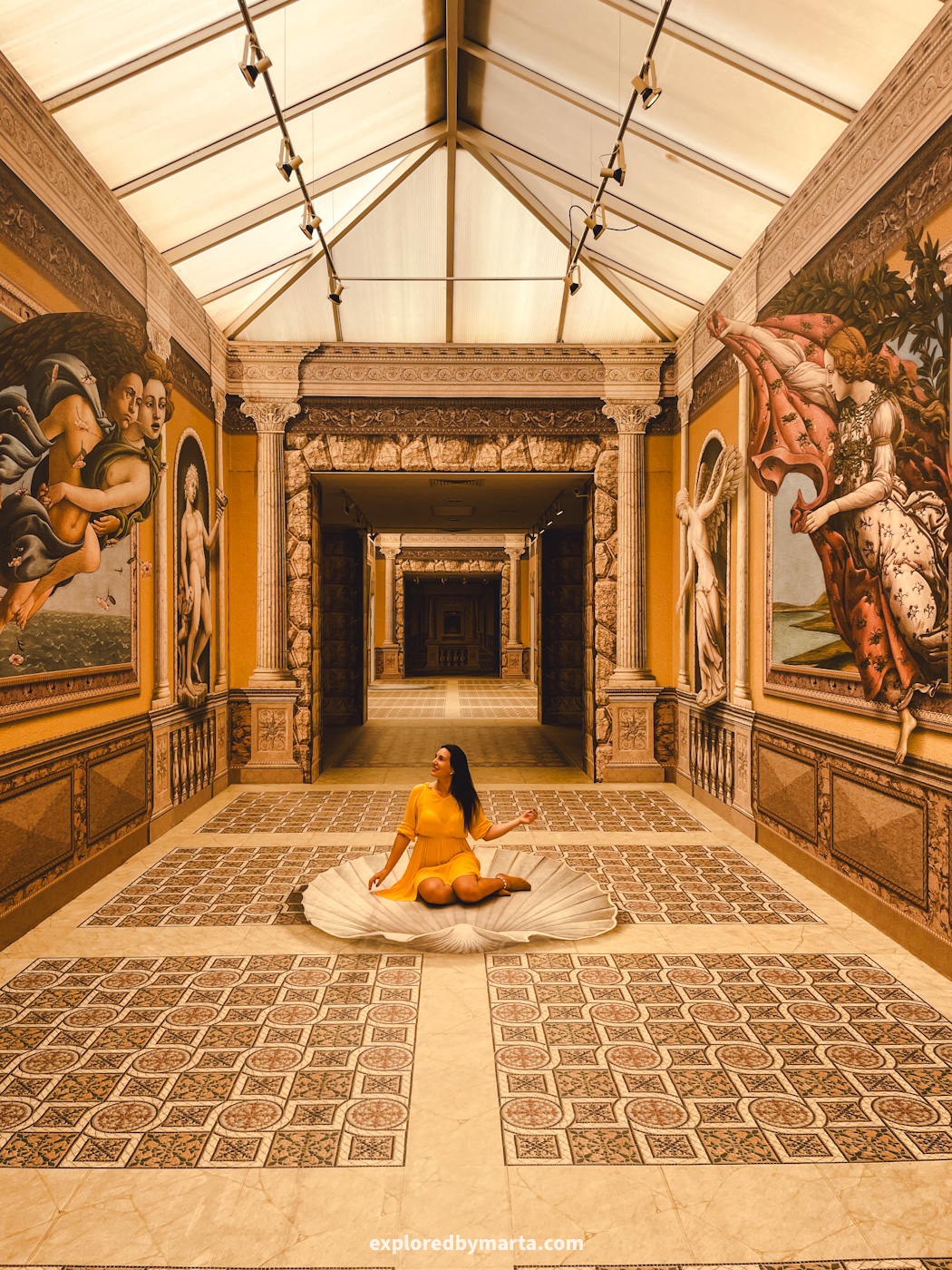
It is a small paradise for photo lovers! For an entrance fee of 35 USD, you can visit dozens of paintings in the museum that look three-dimensional. Especially through the lens of a camera!
There are multiple rooms with these paintings. If you stand at a certain angle and take a photo you will get a cool picture with a 3D effect. It really is meant to be even more distinct in the photo than seeing it with your eyes.
Location: 3D Museum of Wonders
14. Cenote Atik Tulum

The gorgeous Cenote Atik Tulum is one of the must-see cenotes near Tulum. This place is actually more than a cenote and features a jungle park filled with hidden sculptures, art objects, and photo spots.
The best part? It still hasn’t reached the big fame!
Cenote Atik Tulum is amongst the most beautiful cenotes in Yucatan – located only a 15-minute drive from Tulum downtown it is the perfect place to go to spend a day in the jungle swimming in turquoise water.


We visited Cenote Atik Tulum right before closing time so we did not get a chance to swim in the cenote. But it looked wonderful – like an oasis! It is an open cenote surrounded by high walls and a waterfall in one of the corners.
The property also features walls covered with skulls, fountains, a pool with a large bust above it, and many more unique objects for unique photos. If you are looking for a unique and gorgeous cenote near Tulum – look no further! This is it!
Location: Cenote Atik Tulum
15. Cancun Scenic Tower
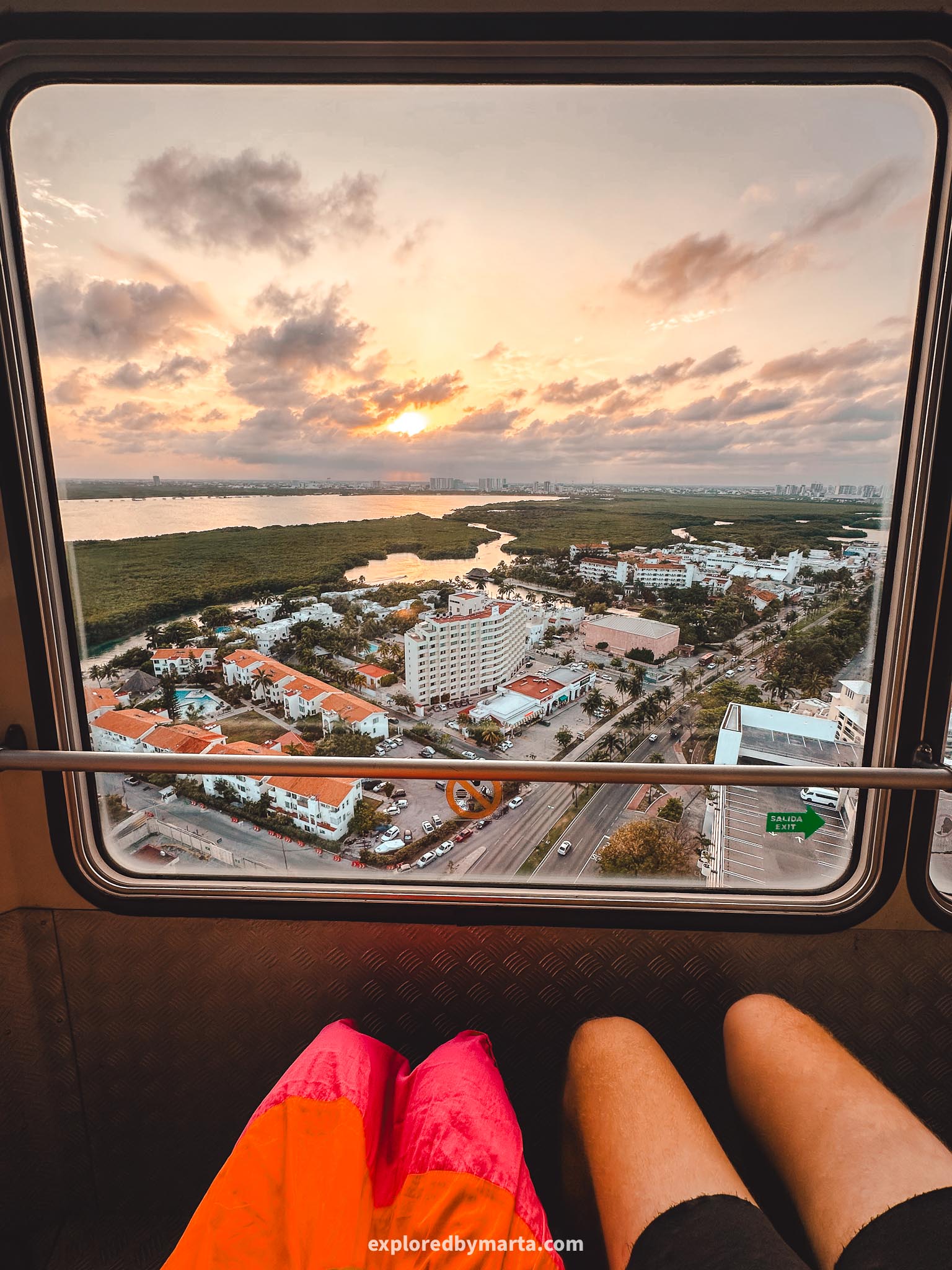
Travelers who love adventures and exploring places usually skip Cancun right away. But if there’s one cool place to visit in Cancun it definitely is the Torre Escénica or the Cancun Scenic Tower located in the Cancun Hotel Zone.
The Cancun Scenic Tower is a large platform that takes you 260 ft (80 m) above the city while rotating on its axis so you get to see panoramic 360-degree views over Cancun, the Caribbean Sea, and the Nichupté Lagoon.

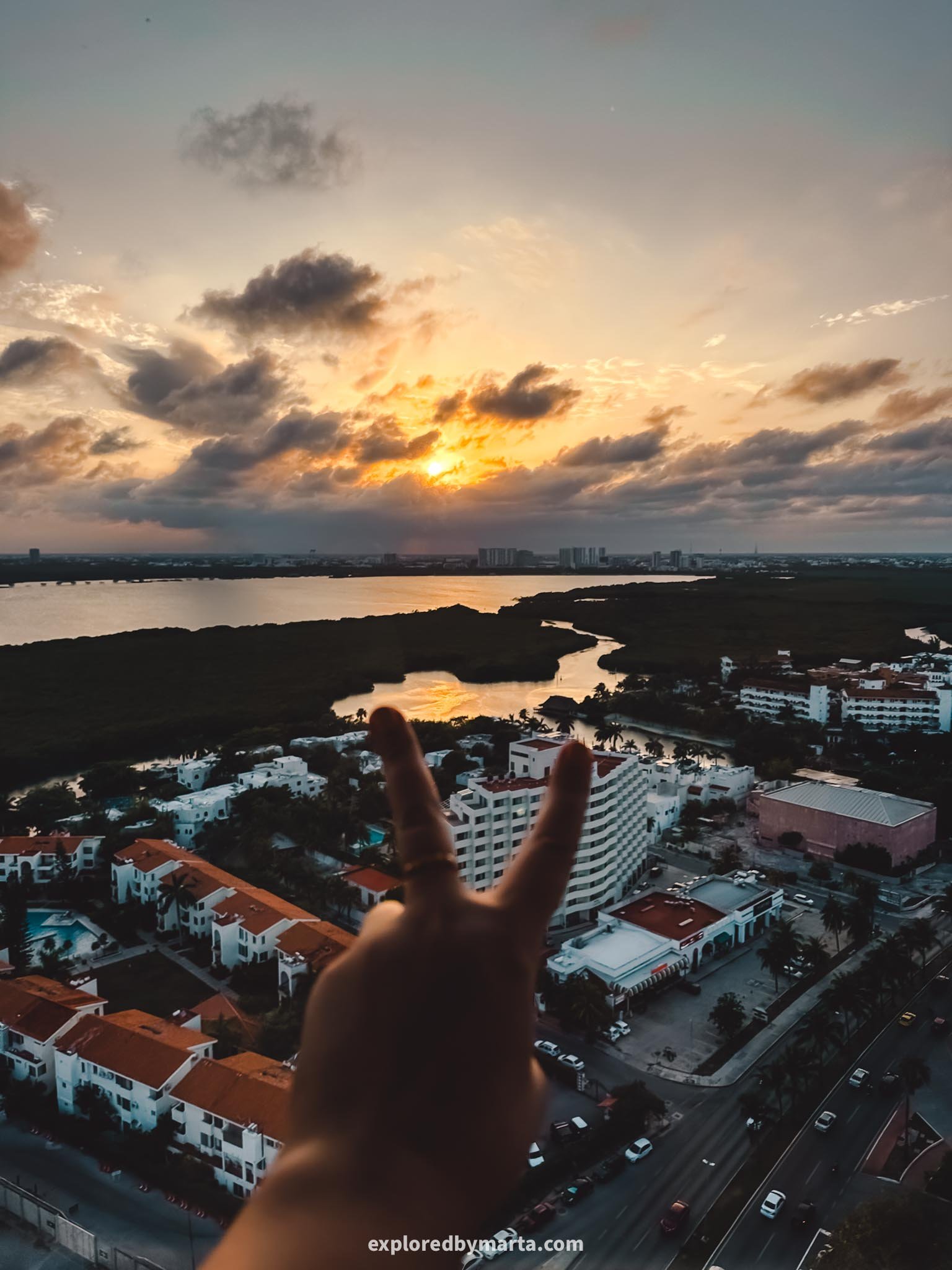
If you can, I recommend going up there for the sunset. It is one of the highest places you can get to see the sunset in Cancun but it will be just as beautiful during the day too. We didn’t reserve anything – we just went there, bought tickets, and that’s it.
The only downside is that you have to remain seated during the whole trip but I was totally okay with that – at least nobody blocked the view and we could enjoy the city skyline the whole time. I really liked this experience!
Location: Torre Escénica
16. Convento de San Bernardino de Siena
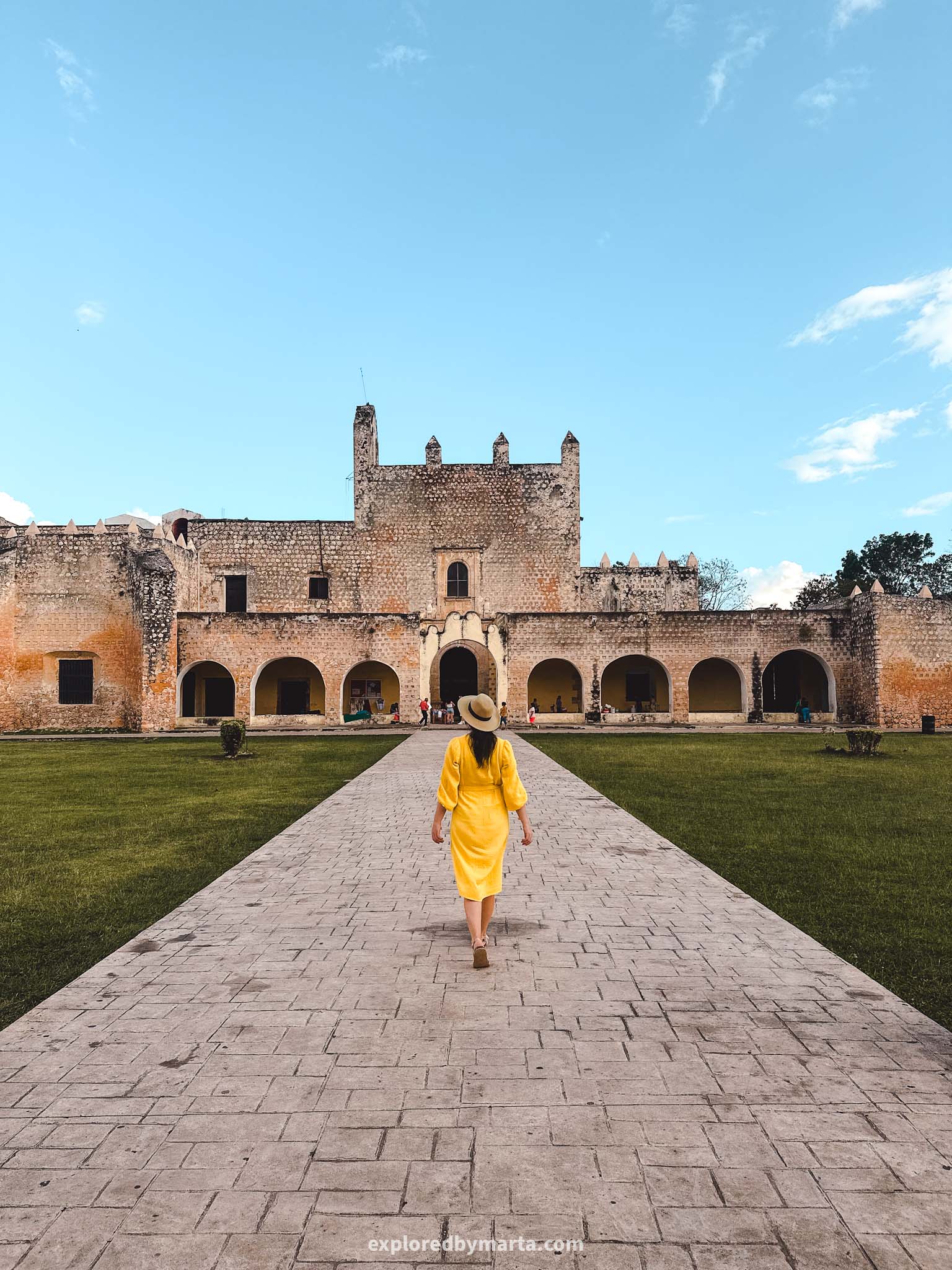
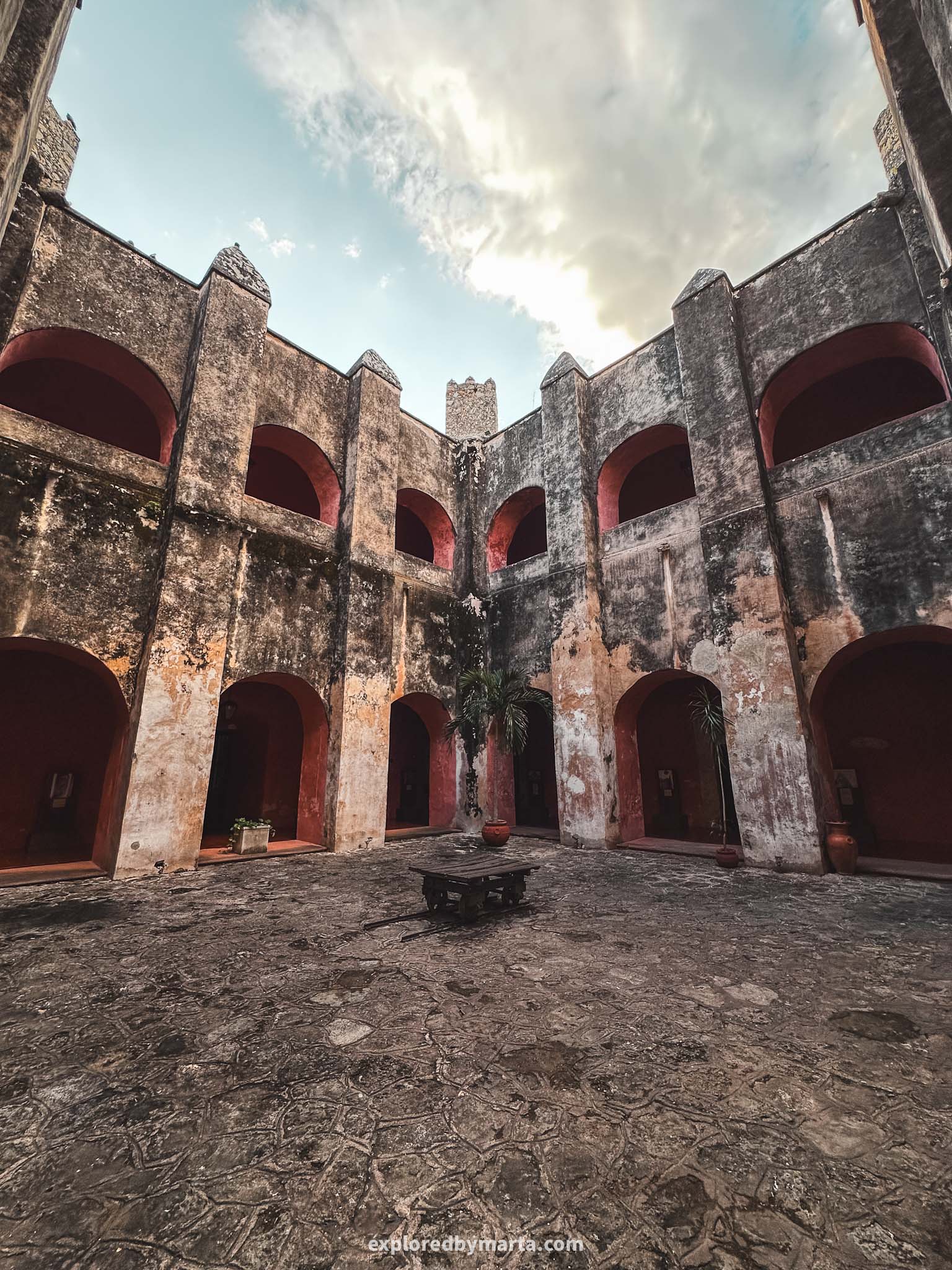
I have included many ancient Mayan sites on this list so I thought I have to include something from the colonial past too. In case you visit the town of Valladolid (which you should!), don’t leave before exploring the San Bernardino convent!
It is one of the oldest and most emblematic buildings in Valladolid, Mexico, and it is worth visiting! The convent was built and founded in the middle of the 16th century by the Franciscan order who arrived at Yucatan after the Spanish conquest.
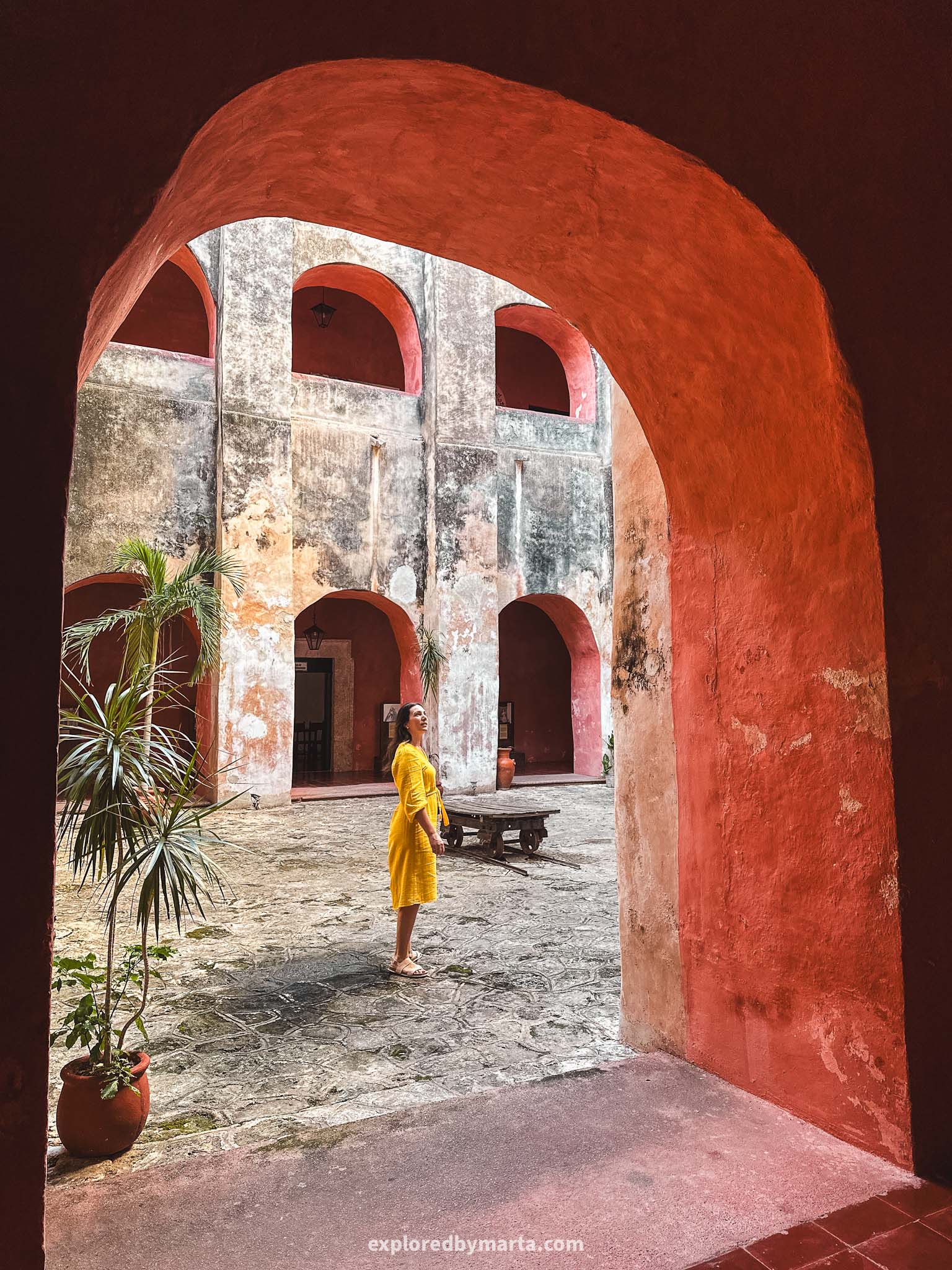
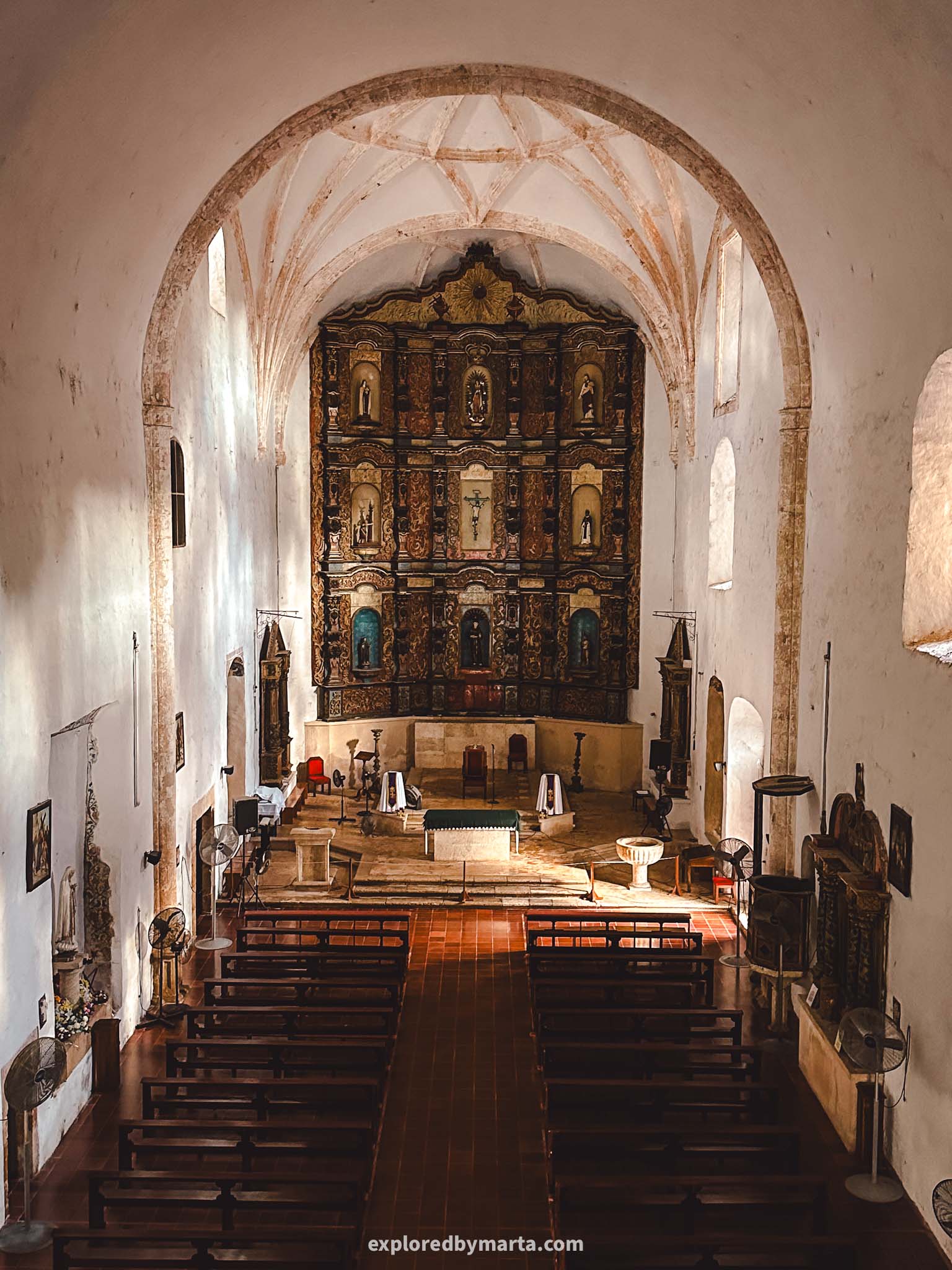
It boasts a beautiful long arched hallway that leads into the church that features a gilded wooden altarpiece. Visit to the church is free but the entrance to the convent was 40 pesos per person when we visited (through a separate door).
I highly recommend visiting the inside of the convent. You get to explore a courtyard, see exhibitions of artifacts found on the ground of the convent, climb up to the upper floor, and learn about the waterwheel and cenotes under the convent.
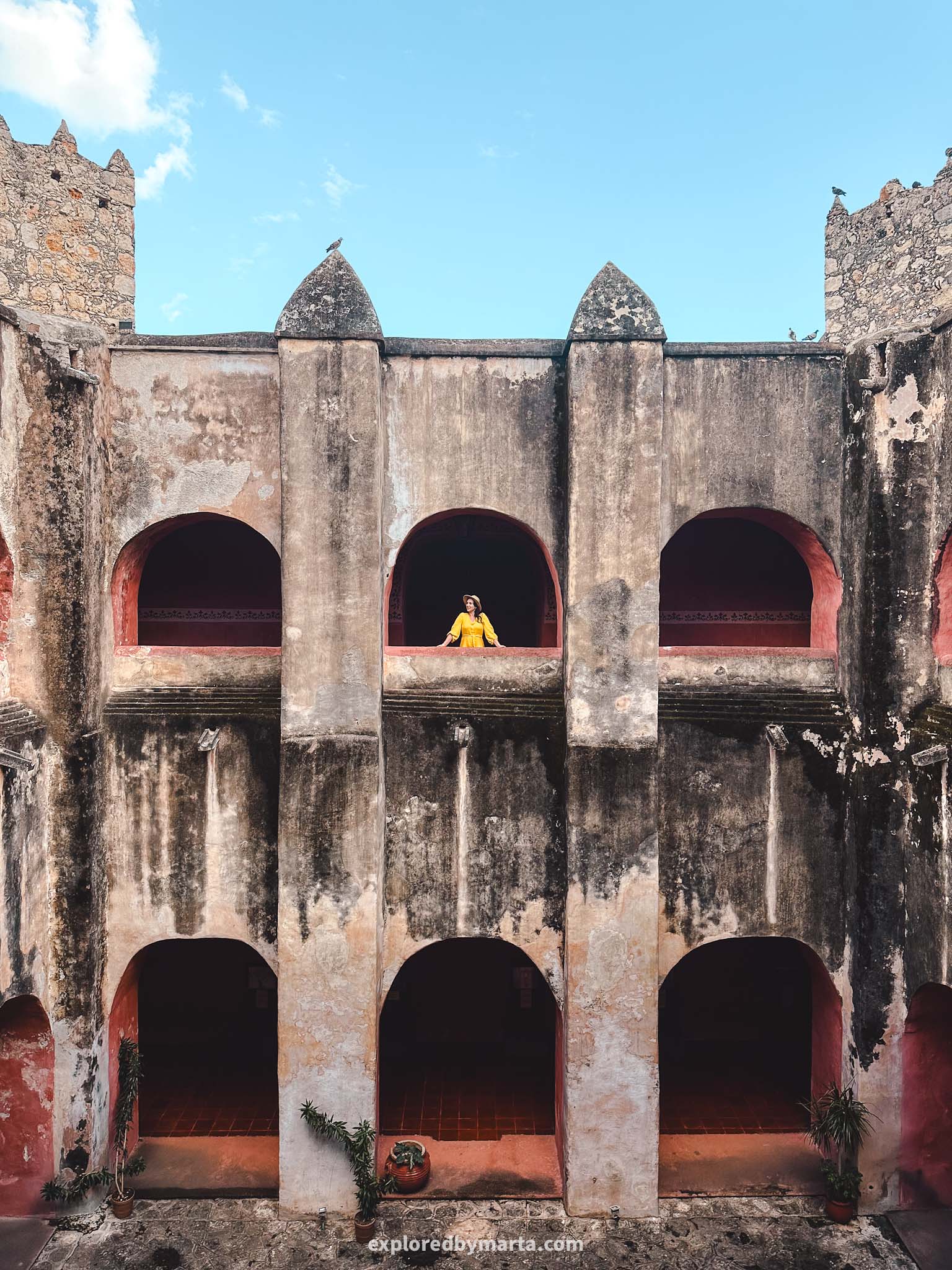
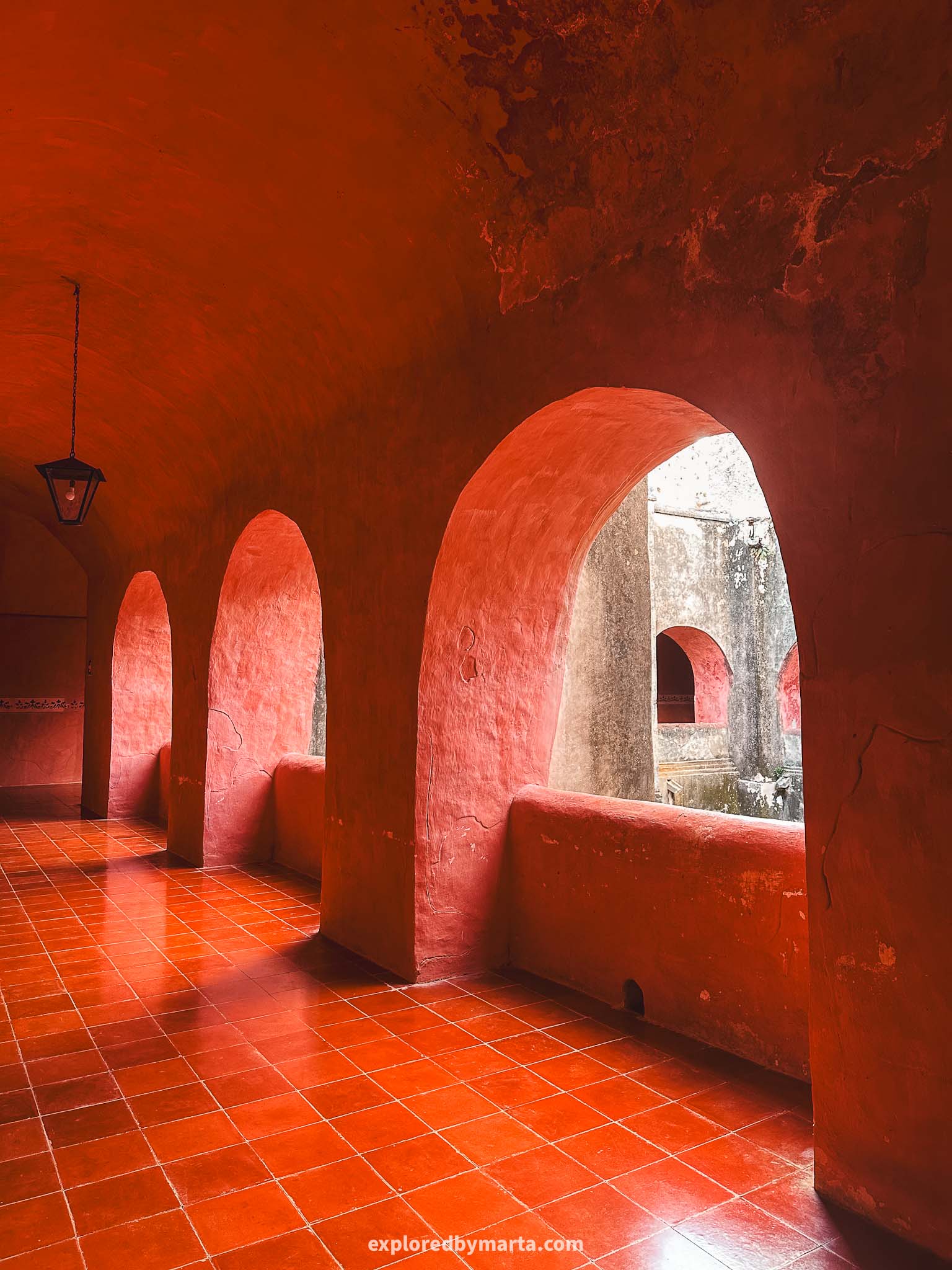
The hallways connected to the courtyard are painted bright pinkish-red making for a cool color-popping photo spot. We spent about 40 minutes walking around the convent and exploring every room and hall. Don’t forget to walk outside in the garden!
Out of seven convents built by the Franciscans all around Mexico’s Yucatan Peninsula, Convento de San Bernardino de Siena is the second-largest convent of them all. Only the one built in the Yellow City Izamal is bigger than this one.
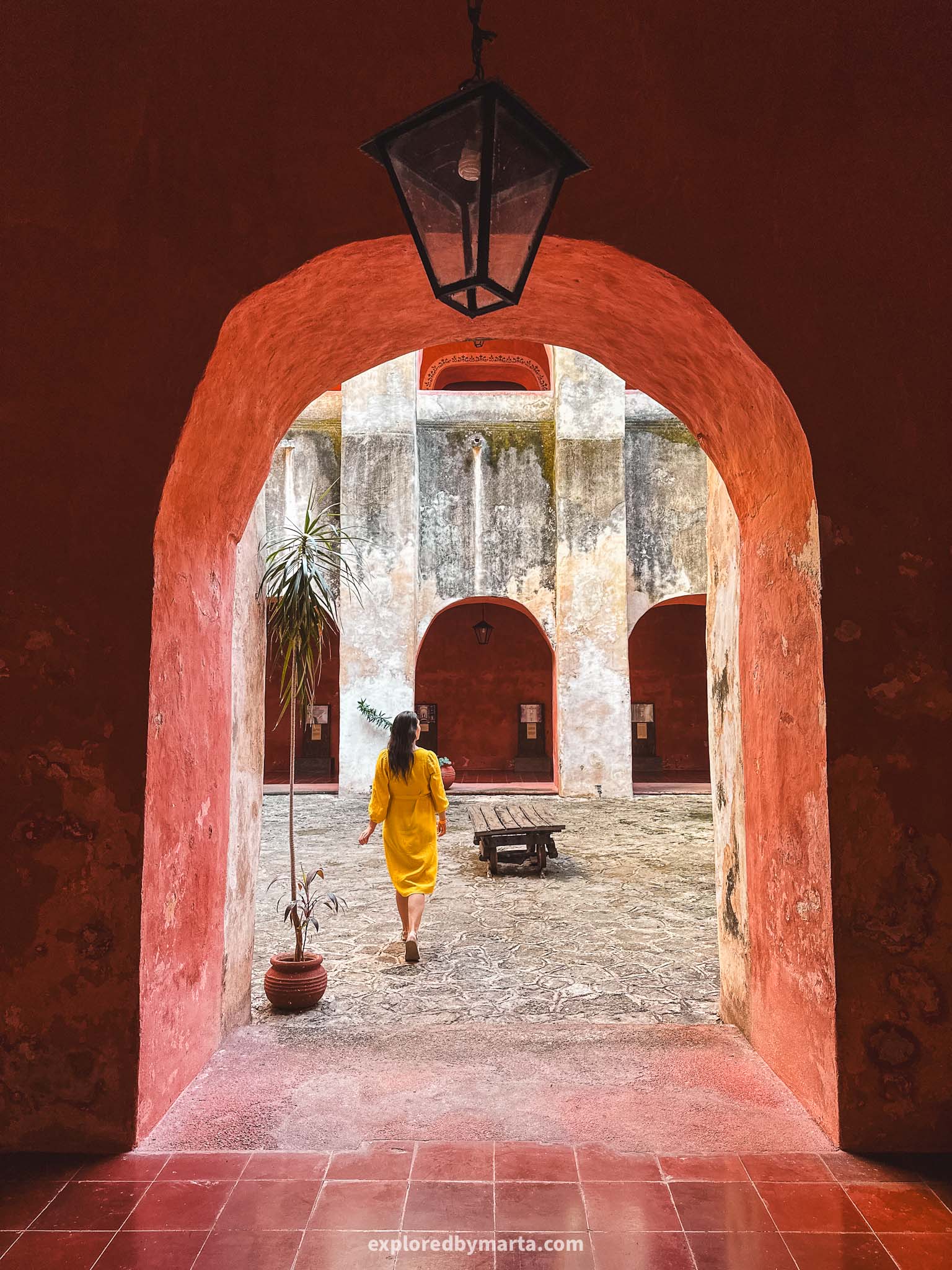
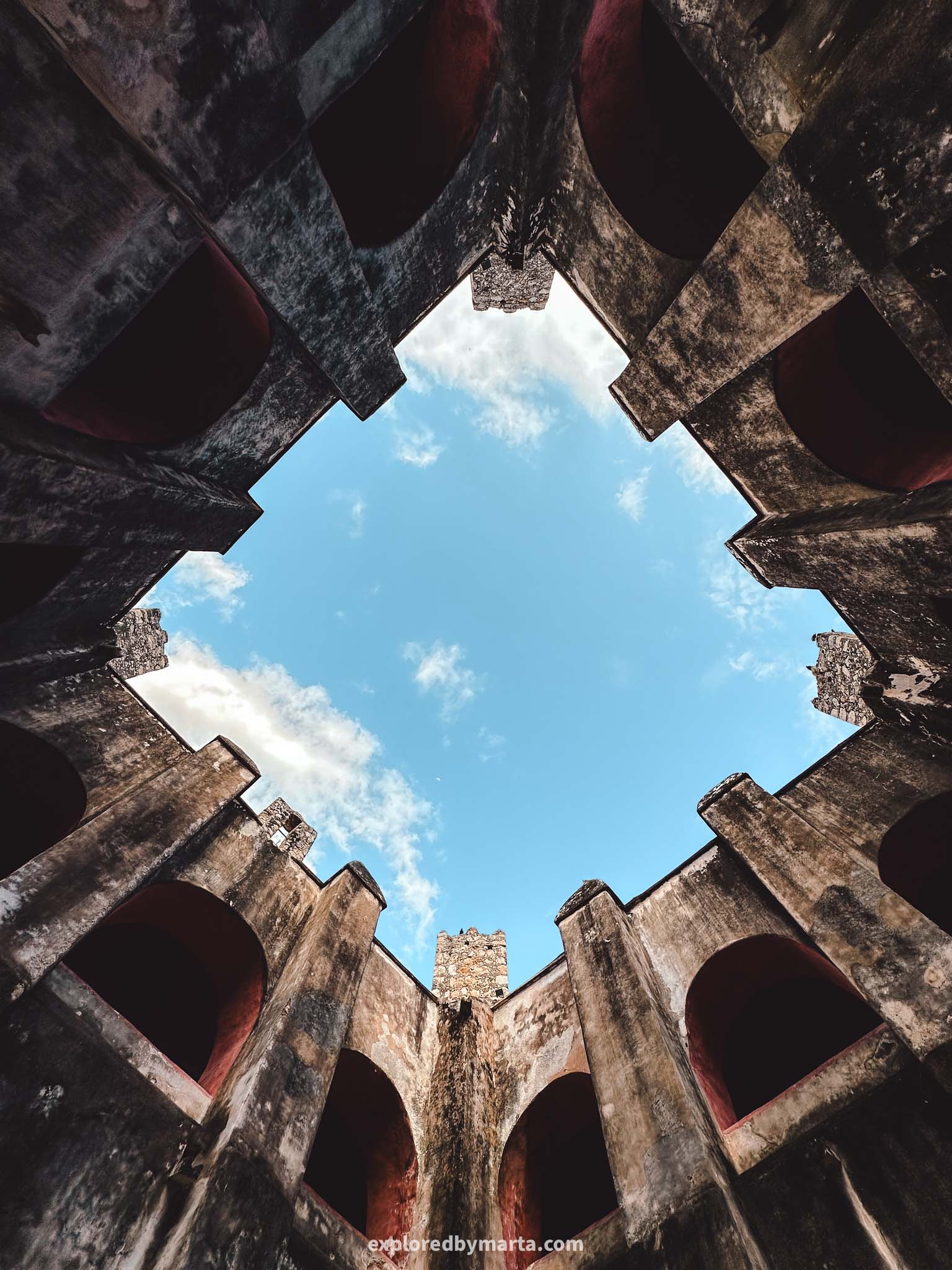
This convent served for the purposes of the evangelization of the Mayans but it is no longer functioning now. While the church still gathers its visitors, the convent has been turned into a tourist attraction.
Did you know? The convent comes alive at night. Every evening you can watch a colorful video projection show on the walls of the convent telling a story of the rich history of Valladolid. Worth checking out if you are nearby!
Location: Convento de San Bernardino de Siena
17. The underground restaurant in a cave – Alux


The Yucatan peninsula is famous for its underground caves and cenotes, but have you had a dinner underground? If not, you might want to check out Alux – a contemporary Mexican restaurant in a cave underground in Playa del Carmen.
Although this will be a pricier dinner than at other bars and restaurants, I quite enjoyed it. I was surprised how long the cave system is underground! After the dinner, they let you walk around and see all the corners of this cave. Quite impressive!
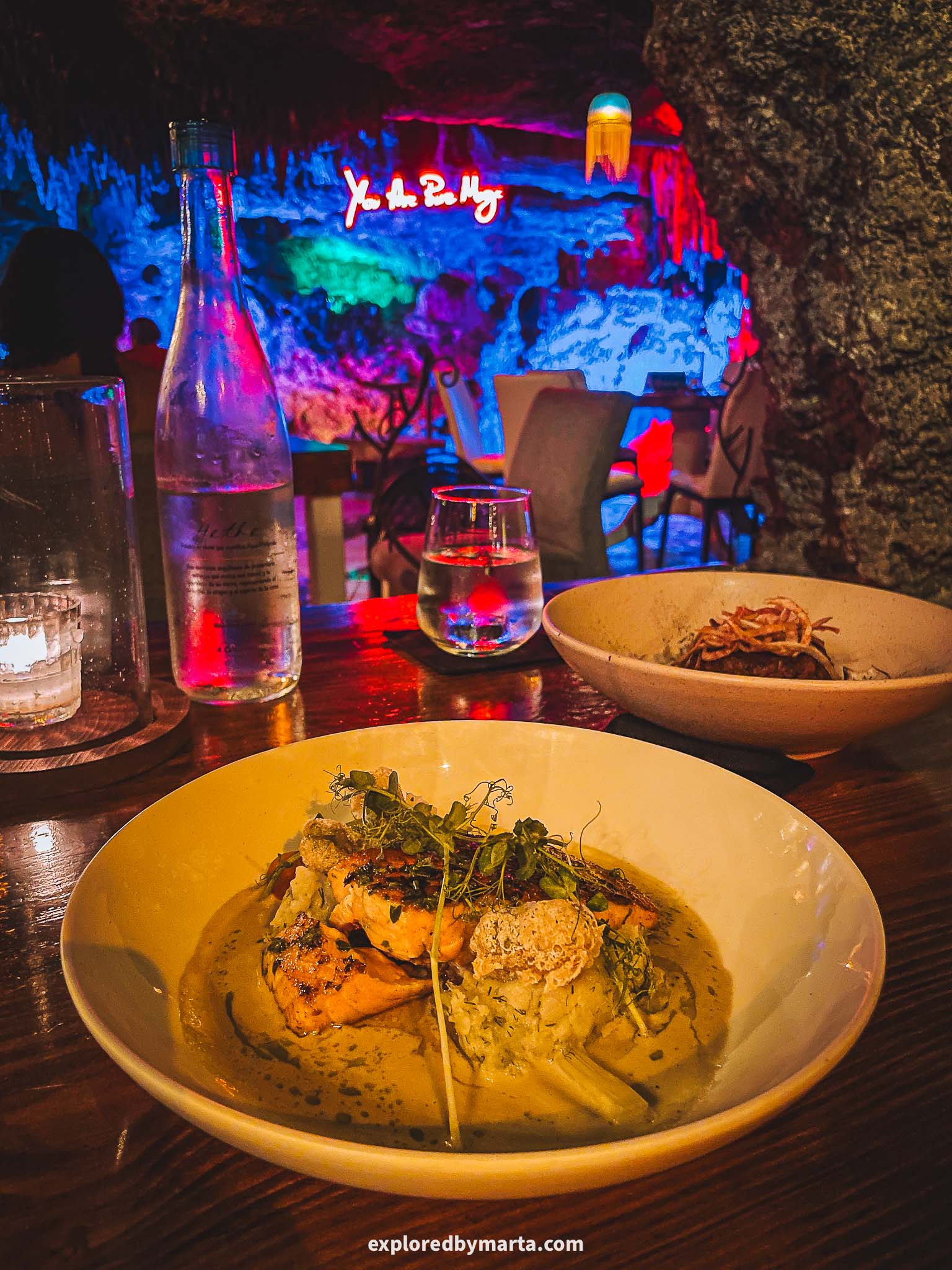

Having dinner at this underground restaurant built in a cave was the most unique experience we had in Playa del Carmen. Although you pay more for the experience of dining in a cave, this is a nice place to go if you have something to celebrate!
You can only eat dinner here (a reservation is needed). The food was quite good, but not overly amazing for the price you pay but we enjoyed this unique experience. I especially liked walking around the cave after dinner.
Location: Alux Restaurant Bar and Lounge
18. Archaeological Zones along Ruta Puuc
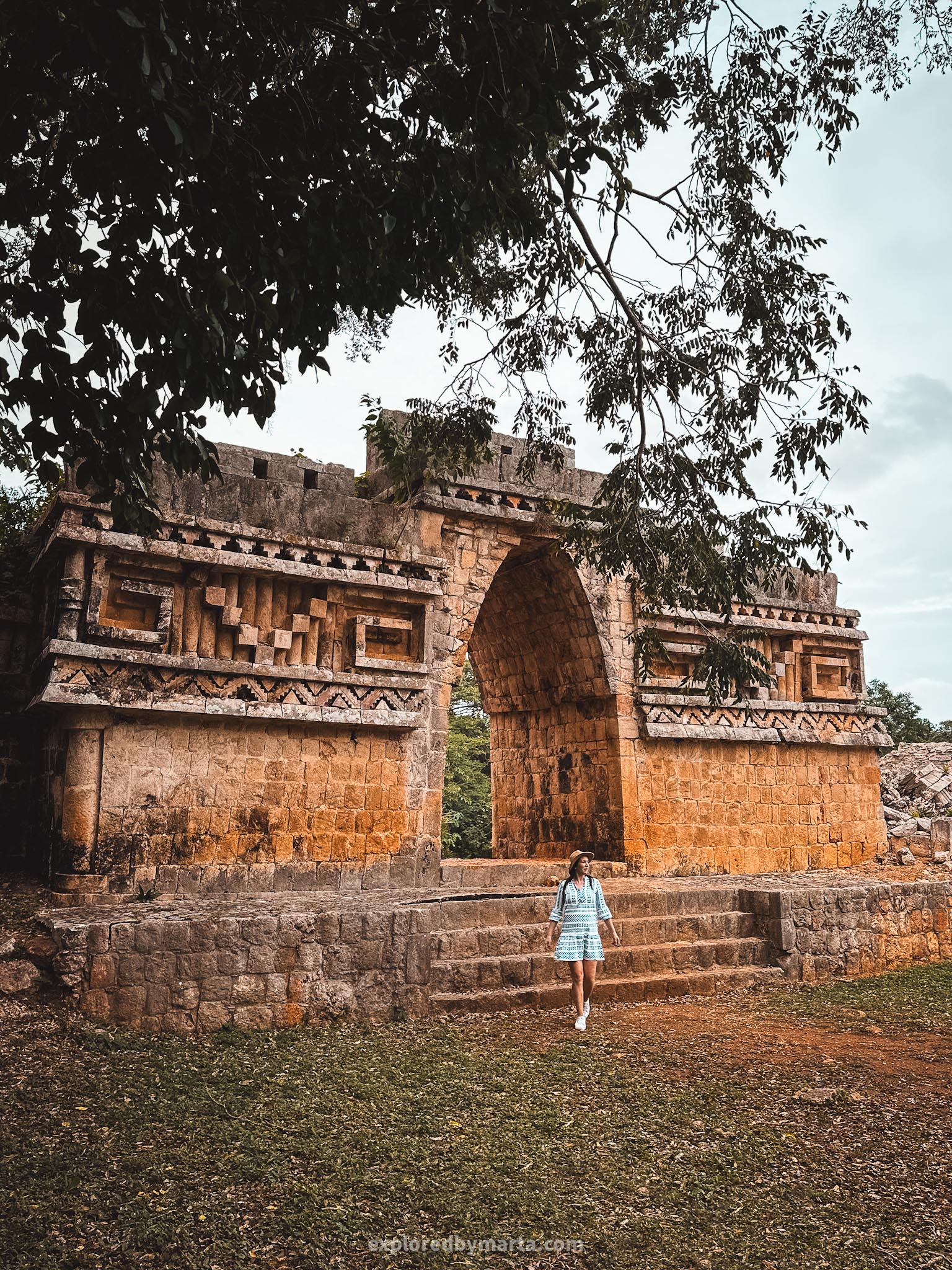
Located just a 1-hour drive South of Merida is a group of five different Mayan archaeological zones called the Ruta Puuc route. The most famous one is Uxmal but the rest of them are pretty much hidden away in the jungle.
Why Ruta Puuc? Ruta Puuc is a group of special Mayan ruins in Yucatán featuring the Puuc architectural style. Puuc means ‘hills’ in the Mayan language and is also the name of the region South of Merida where all these ruins are located.
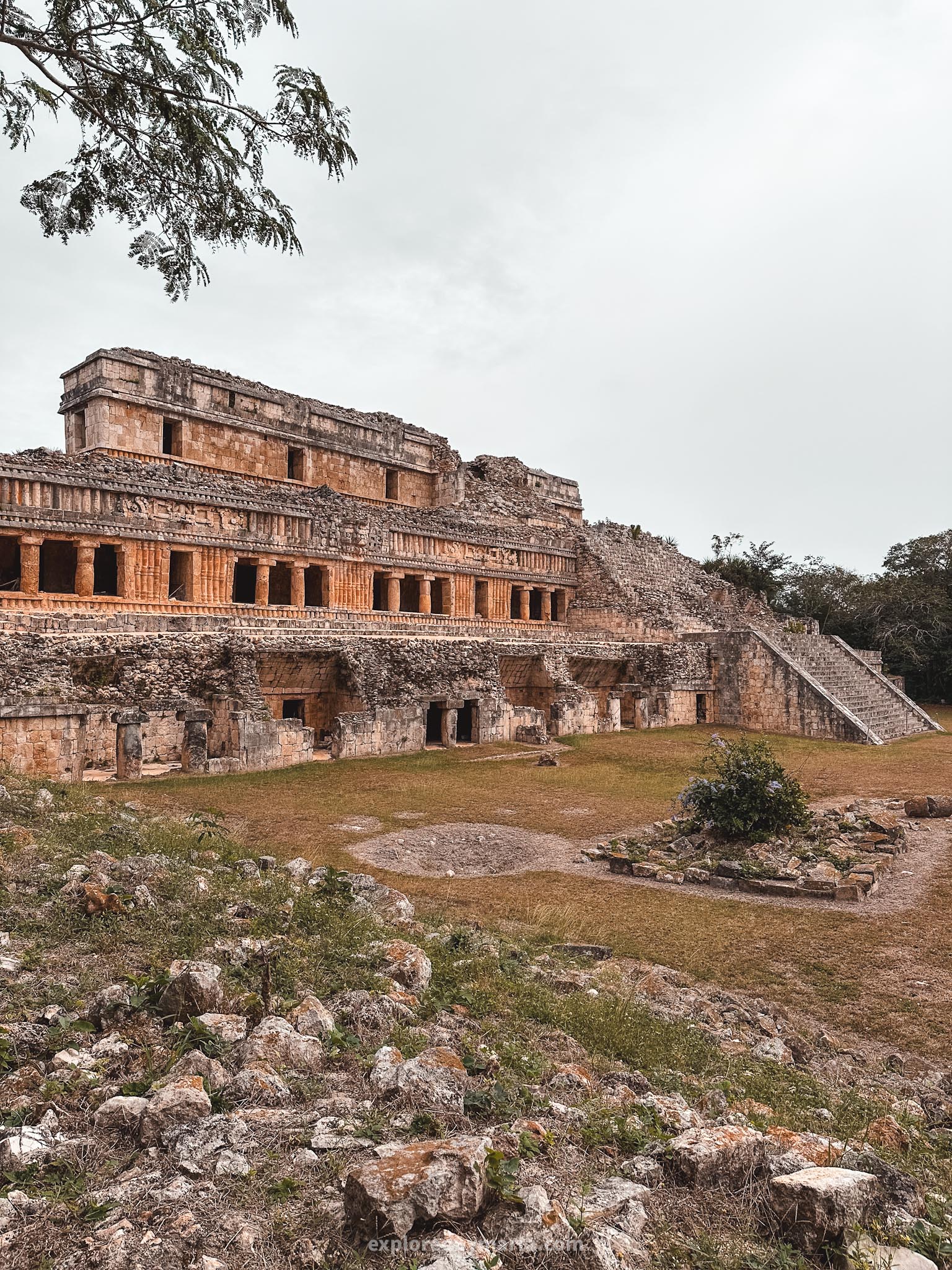
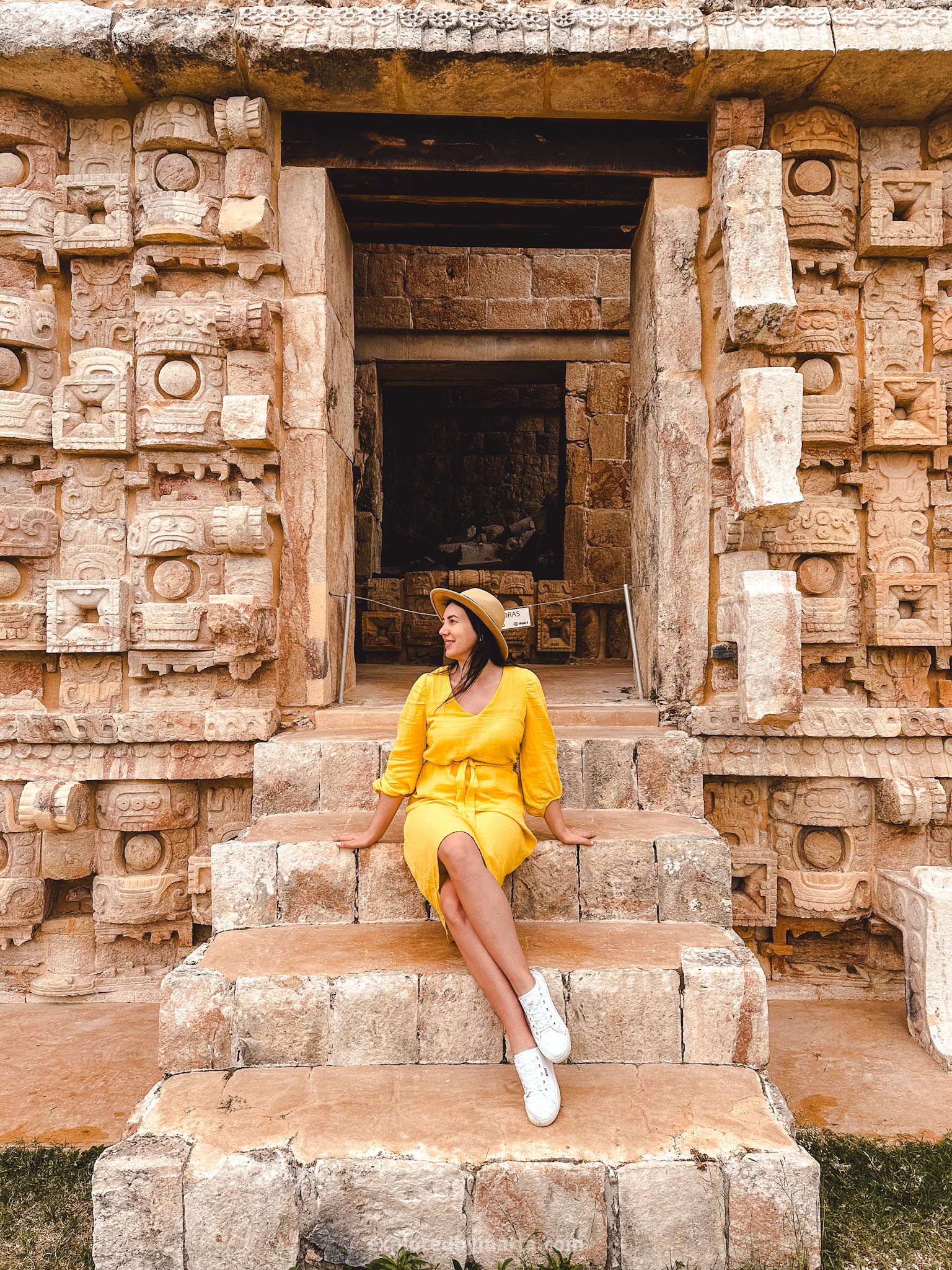
Puuc architecture usually displays stone mosaics, geometrical elements, and elaborate sculptures e.g. It often features masks of the long-nosed rain god Chaac. It also features stone arches in unique shapes.
Uxmal with its famous Pyramid of the Magician is amongst the most impressive Mayan ruins in Mexico and it gets crowded during the day (ok, not as crowded as Chichen Itza), but only a few people a day visit the rest of the Mayan ruins along Ruta Puuc.
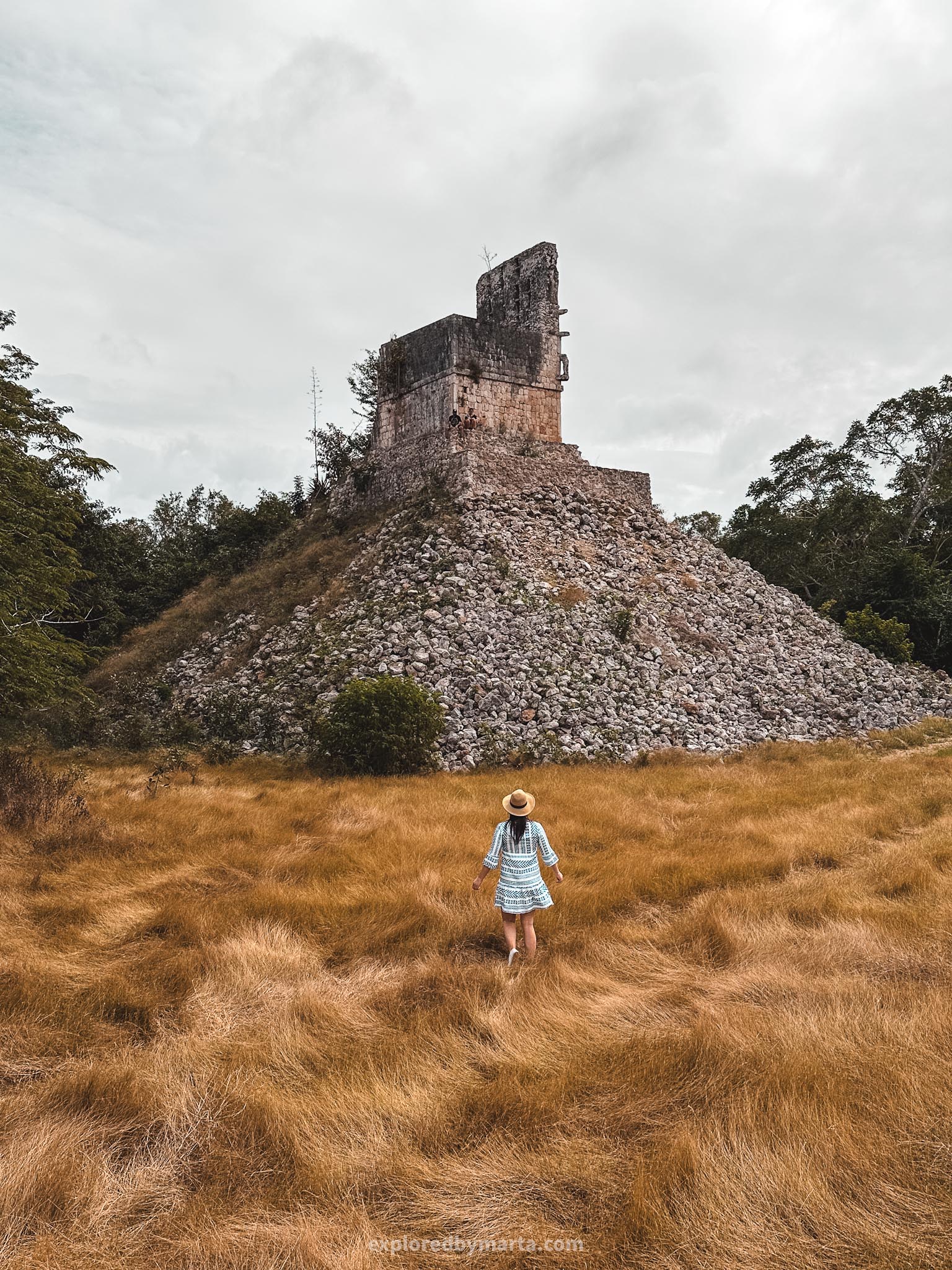
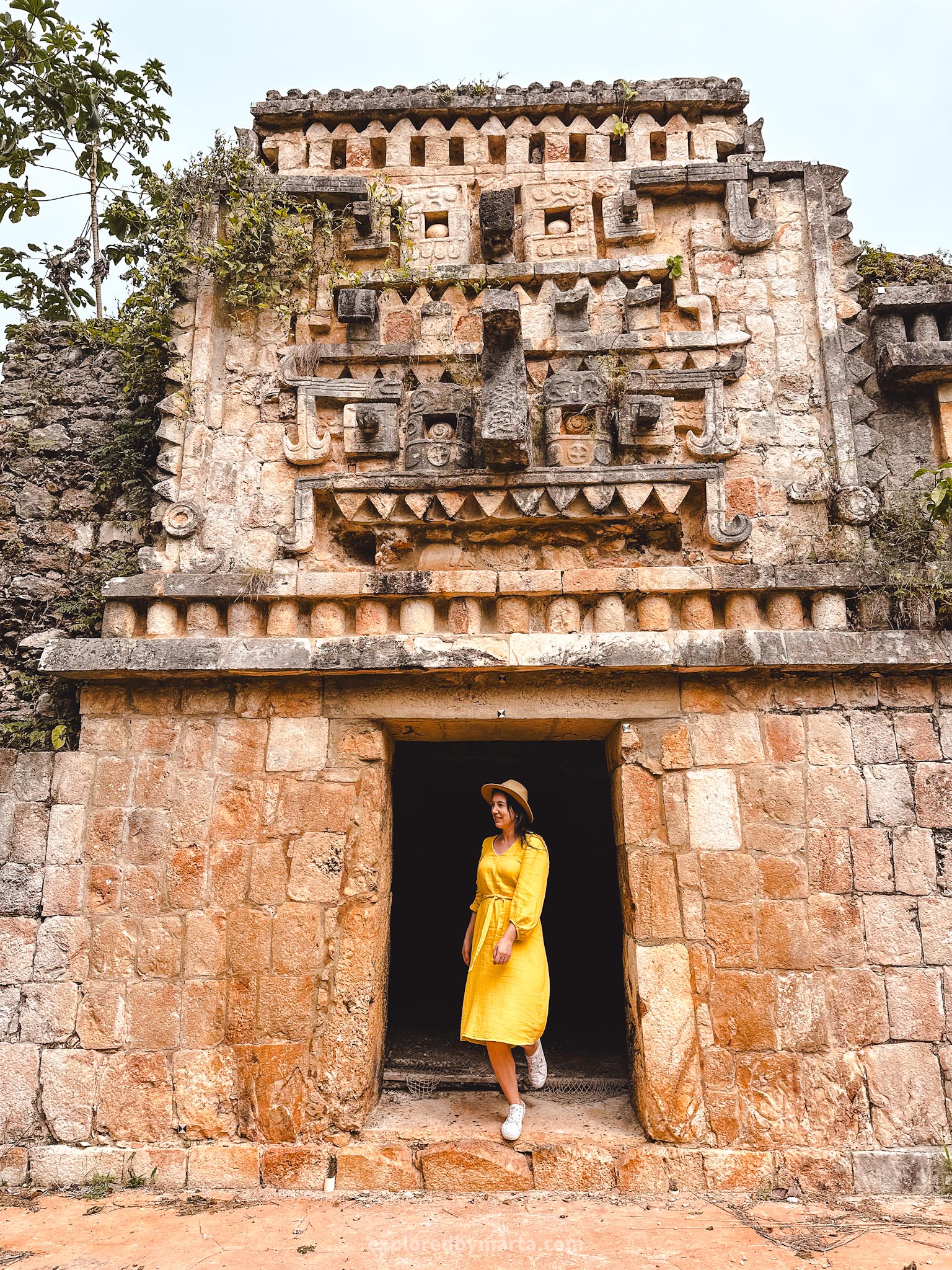
The other archaeological zones along Ruta Puuc include the archaeological zone of Kabah, the archaeological zone of Sayil, the archaeological zone of Xlapak, and the archaeological zone of Labná (my favorite after Uxmal).
If you only have time for a few of them I would choose Labna and Kabah Mayan ruins – they are some of my favorite Mayan ruins near Merida. If you have to skip some of those places, I’d choose Xlapak and Sayil as my least favorite of all.
Location: Kabah – Sayil – Xlapak – Labná
19. Cenote Taak Bi Ha

Cenote Taak Bi Ha is located a 50-minute drive from Playa del Carmen. There is a special area dotted with gorgeous cenotes, many of which are connected by underground rivers and thus are excellent for scuba diving.
There are many popular cenotes in this area like Dos Ojos Cenote or Cenotes Sac Actún, but we opted for Cenote Taak Bi Ha and did not regret this decision one bit because we managed to skip the usual crowds that gather at the nearby cenotes.


Cenote Taak Bi Ha is a gorgeous underground cenote boasting crystal clear water as well as large rock formations – stalactites and stalagmites. You can jump into the water from a stone platform built above the water.
We visited this cenote on Sunday morning. At first, we were the only ones in the cenotes, but soon many small group tours arrived but they all quickly disappeared snorkeling in the many hidden corners of the cenote.


After a short while, their tours ended and they all drove away leaving us the only ones inside the massive cenote. It was magical! Entrance was 350 pesos per person with life jackets included in the price. They also have showers, toilets, and changing rooms.
Pros for this cenote – it is large and doesn’t get crowded, has a jumping platform, and snorkeling options plus the water is refreshingly chill. Cons – it is a remote place and you’d need a car or a taxi to get there. But it is 100% worth it!
Location: Cenote Taak Bi Ha
20. El Meco Archaeological Zone
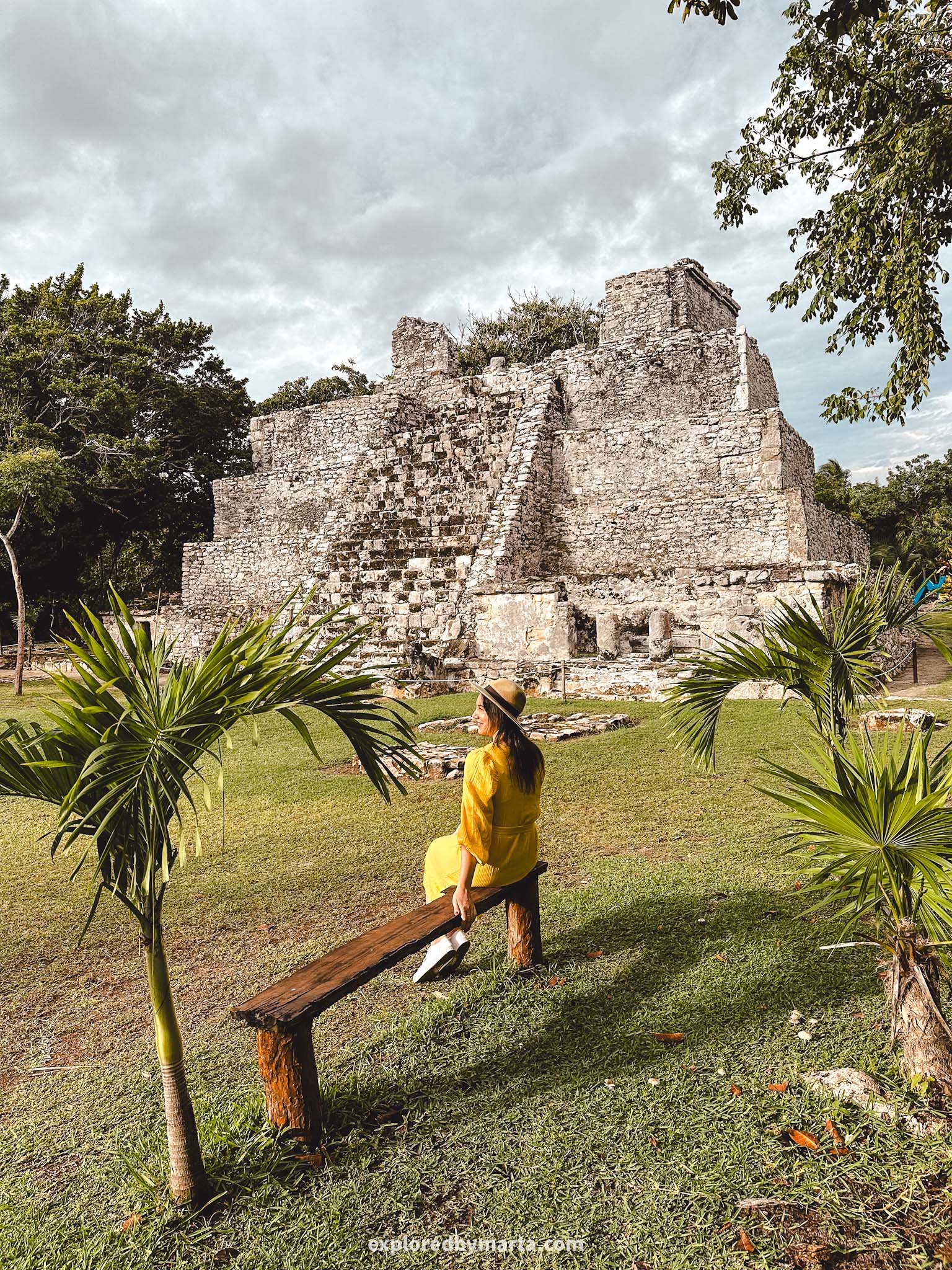
Did you know that there are archaeological sites in the Cancun area? One of them is the El Meco archaeological zone. It is a small Mayan ruin site a 10-minute drive away from Cancun downtown.
This archaeological site dates back to the 4th-7th centuries when it was a small Mayan fishing village but it was gradually abandoned during the next couple of centuries as people moved to live in other areas.


The highest structure in this archaeological zone is a beautiful temple that measures 12.5 meters high (40 ft). It does resemble a pyramid if you ask me.
We arrived at the El Meco Archaeological Zone by taxi from Cancun downtown. The site is full of curious iguanas and will take about 30 minutes to explore.
Not many people visit this site as it can’t compete with Chichen Itza or Coba but I liked it. It all felt like a little secret when walking around there all alone. If you have extra time before your flight, this is a cool spot to squeeze into your itinerary!
Location: El Meco Archaeological Zone
21. Cenote Palomitas
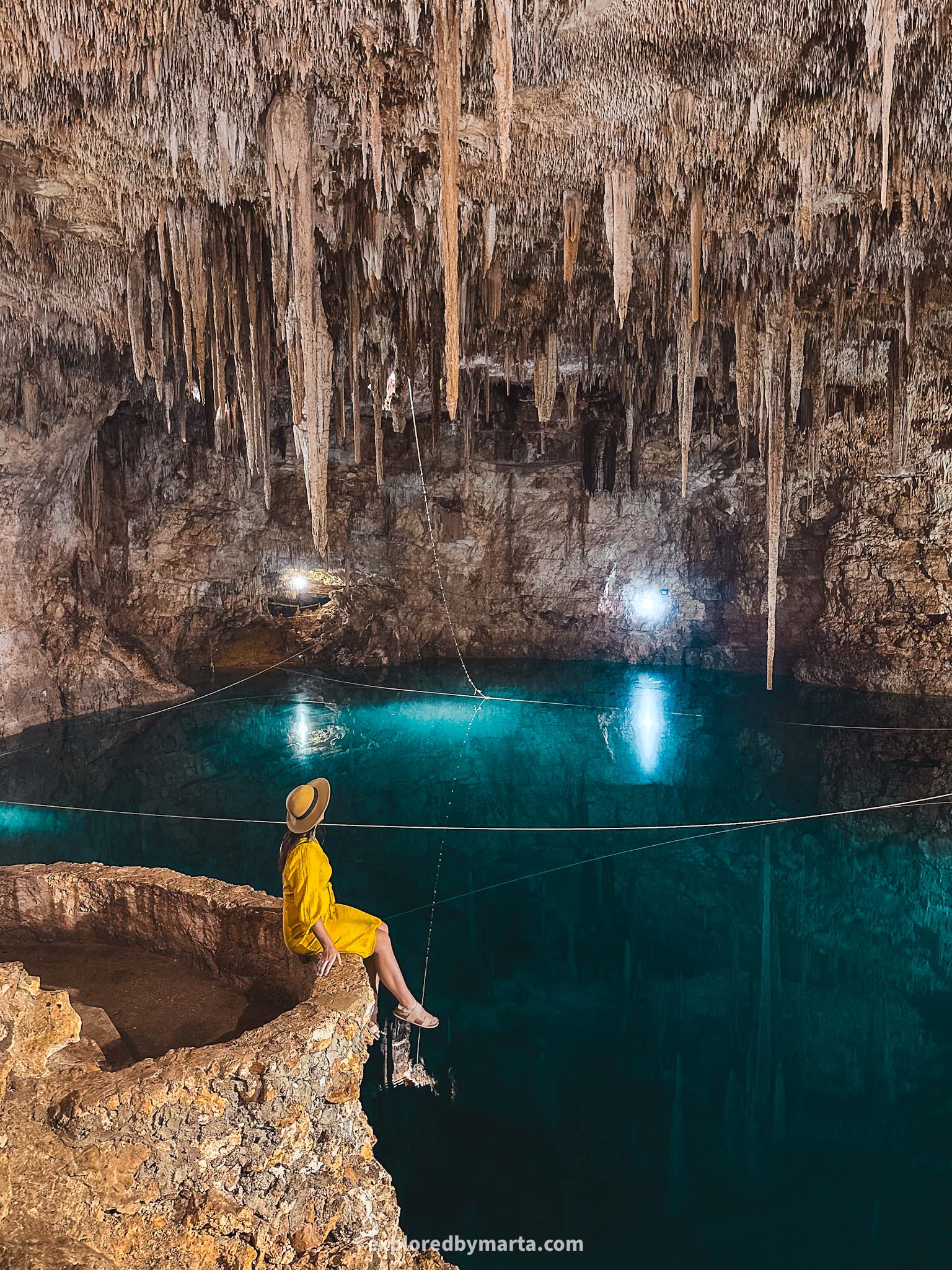
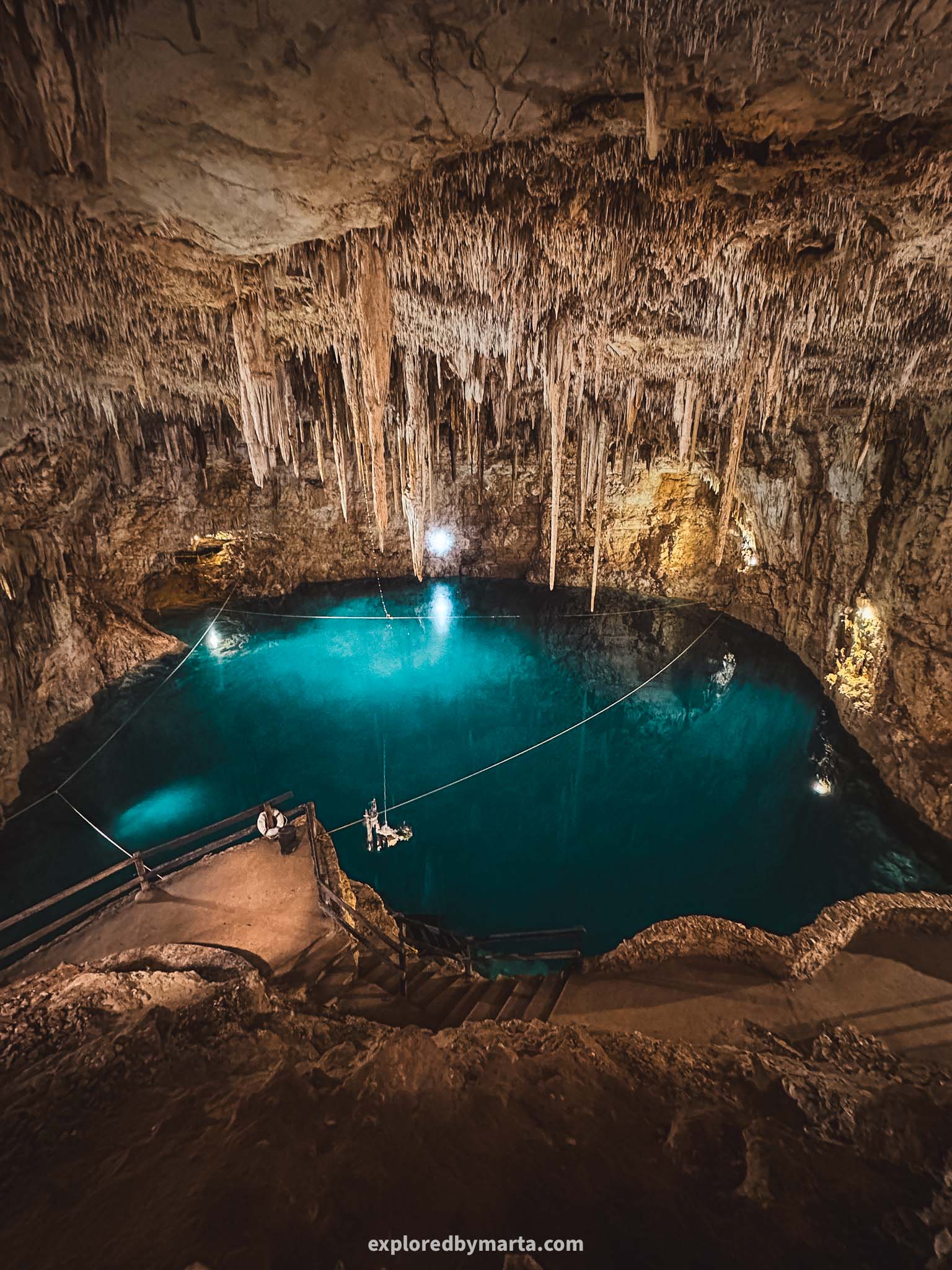
Cenote Palomitas is one of my favorite finds near Valladolid hidden deep in the jungle. This gorgeous cenote is like an underground swimming pool the size of a Medieval cathedral. I was completely blown away by the size of it!
Cenote Palomitas can be accessed through a small hole leading underground. The first thing I noticed was how big it is. The second thing was the ceiling – it is pierced with long and sharp stalactites like the back of a hedgehog!
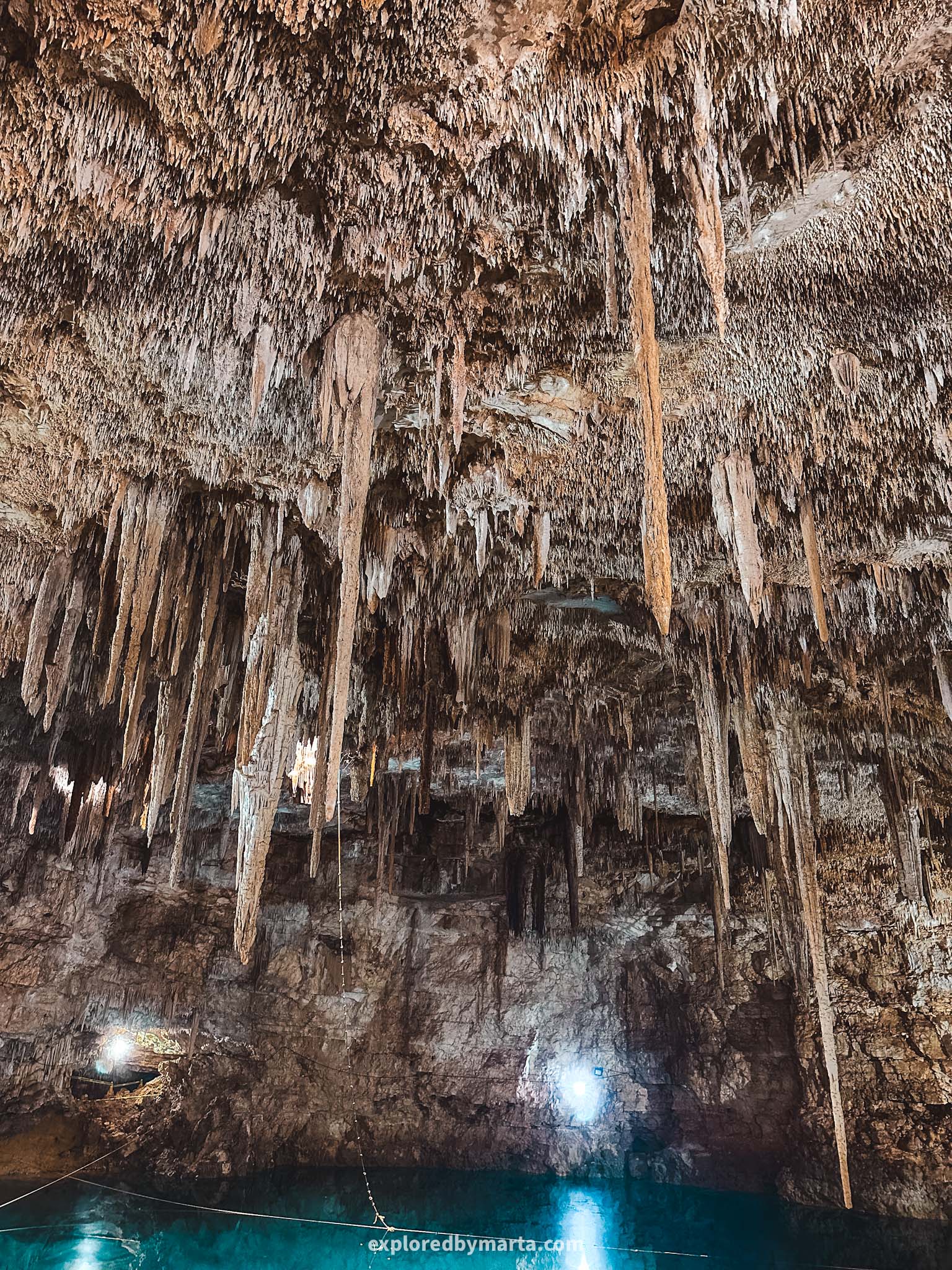
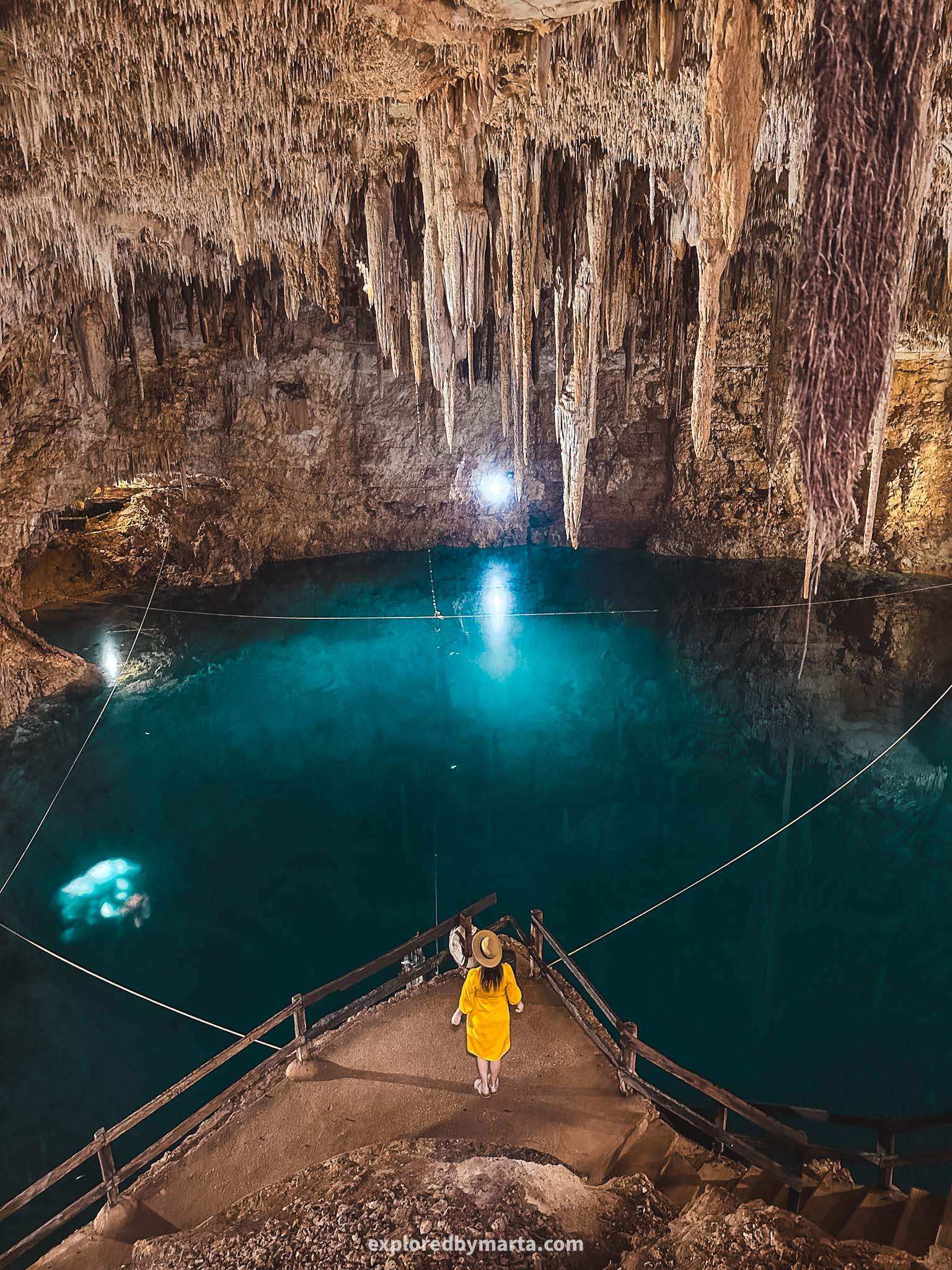
Finally, the third thing I noticed was crystal clear waters. The cenote is deep but you can see through the mirror-like calm waters super deep. I really loved this place – it is one of the best Valladolid cenotes. Plus it is hidden away from the usual crowds.
Entrance to the cenote costs 200 pesos per person. Getting there is a bit of an adventure as it is super remote but we had no problems at all. Just be patient with those roads. If you want to escape tour buses and city buzz, come straight here!
Location: Cenote Palomitas
Happy exploring!
Mexico’s Yucatán peninsula is one of the top travel destinations around the world. It offers a balanced mix of tasty food, a tropical climate, Mayan culture, gorgeous white sand beaches, secret cenotes, ancient ruins, and vibrant cities.
We have spent two winters or six months traveling around the Yucatán Peninsula, including the states of Yucatán and Quintana Roo with its Riviera Maya, and exploring all the beautiful places this peninsula had to offer.
From white-sand beaches to dark underground cenotes, and ancient pyramids – there’s just so much to see! I hope you enjoy your time there as much as we did and I hope you get some travel inspiration from this blog post for your travels! Happy exploring!
PIN FOR LATER!
